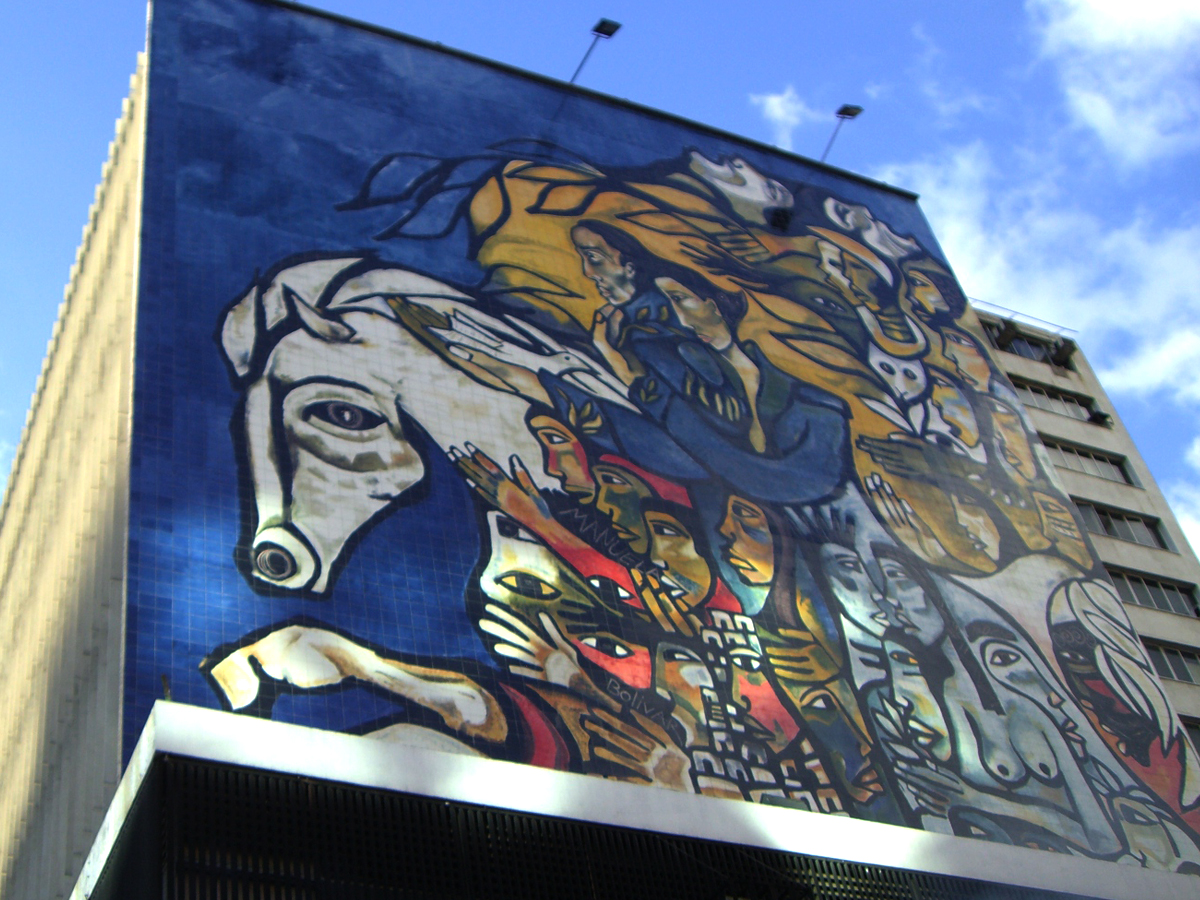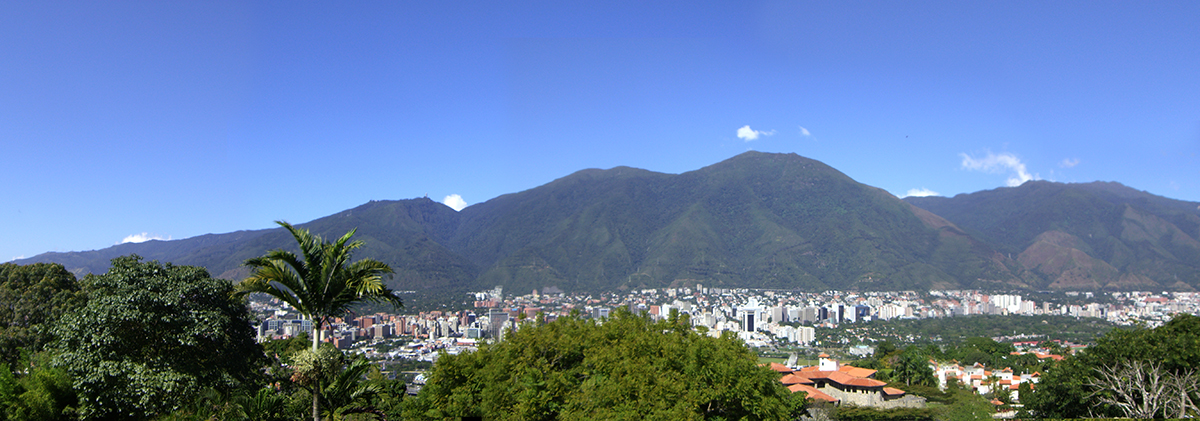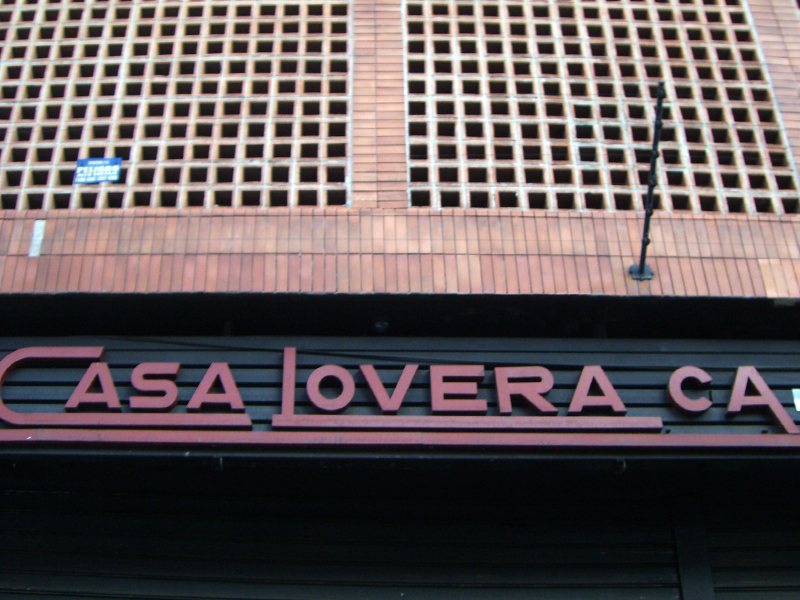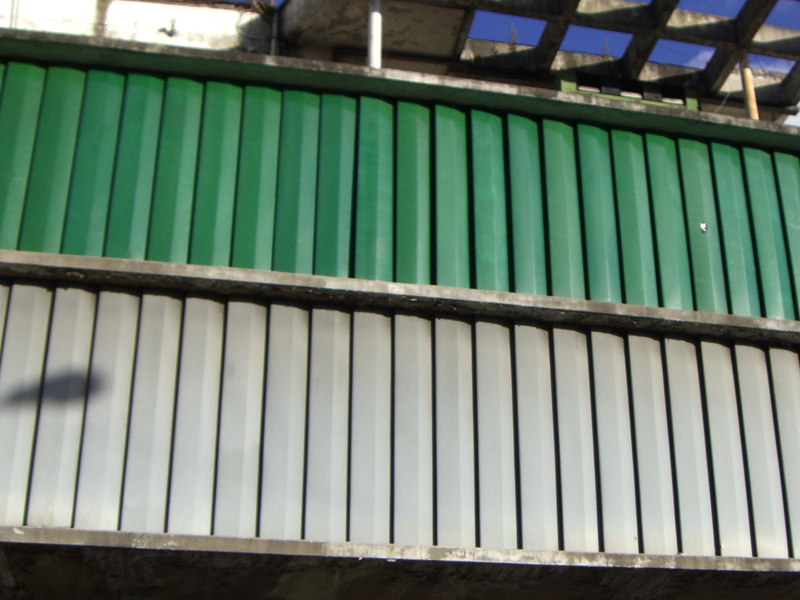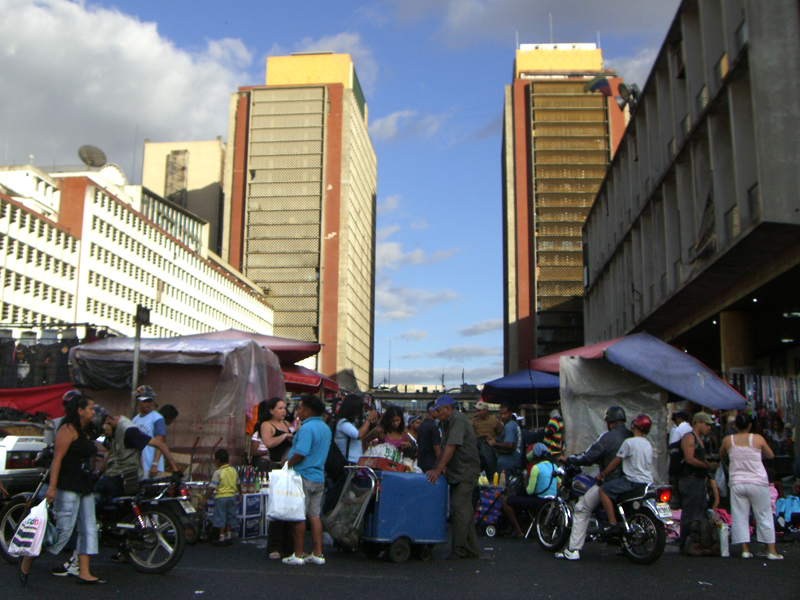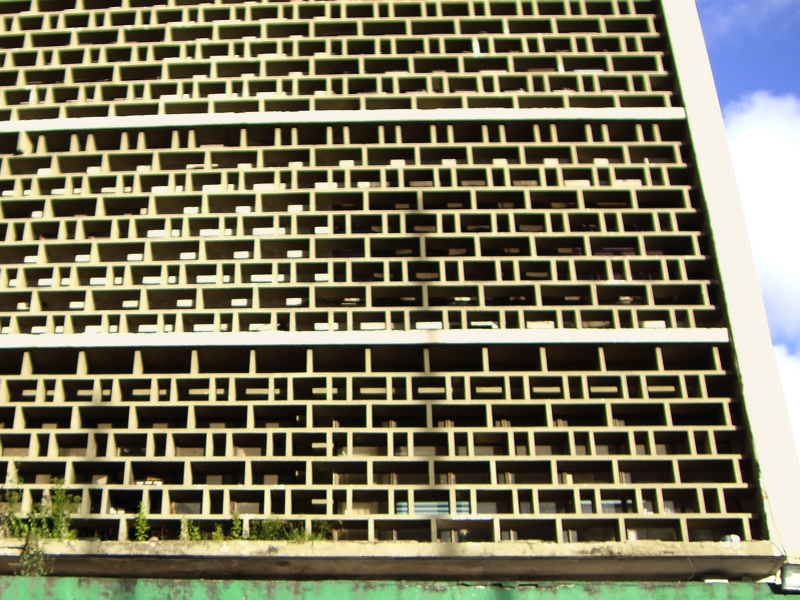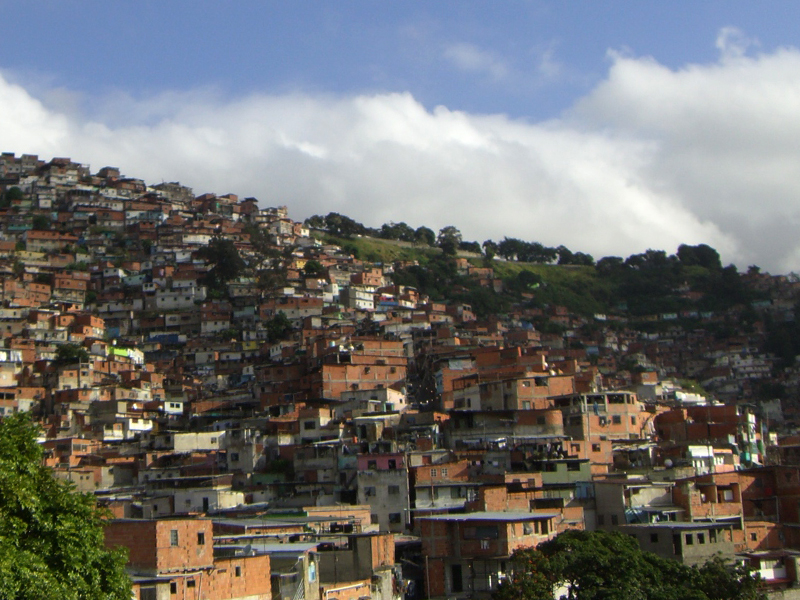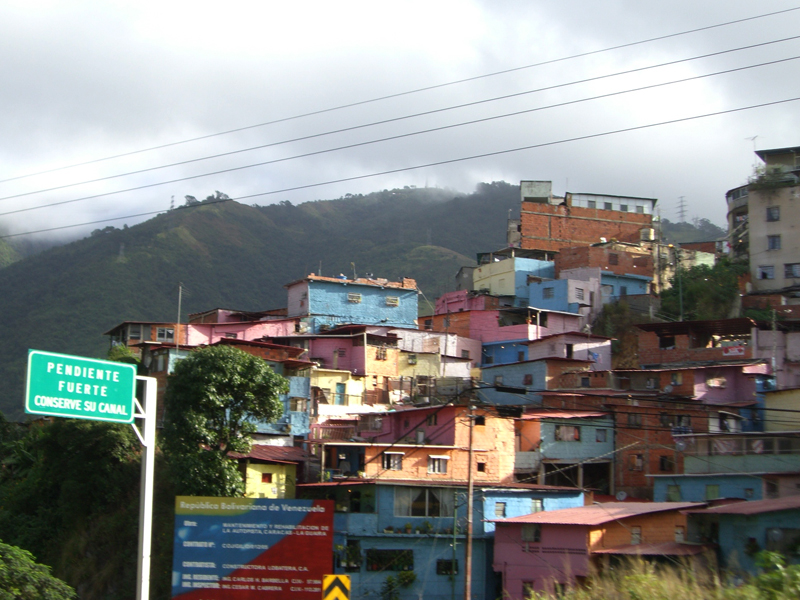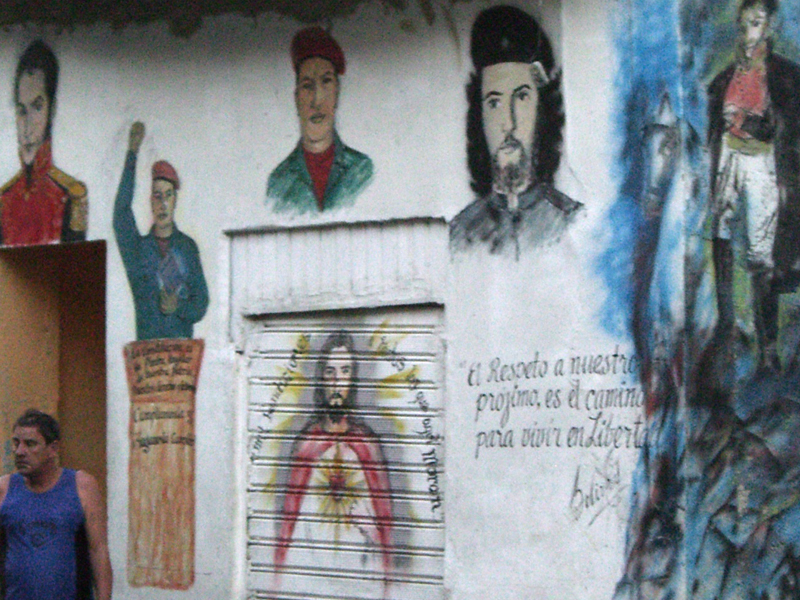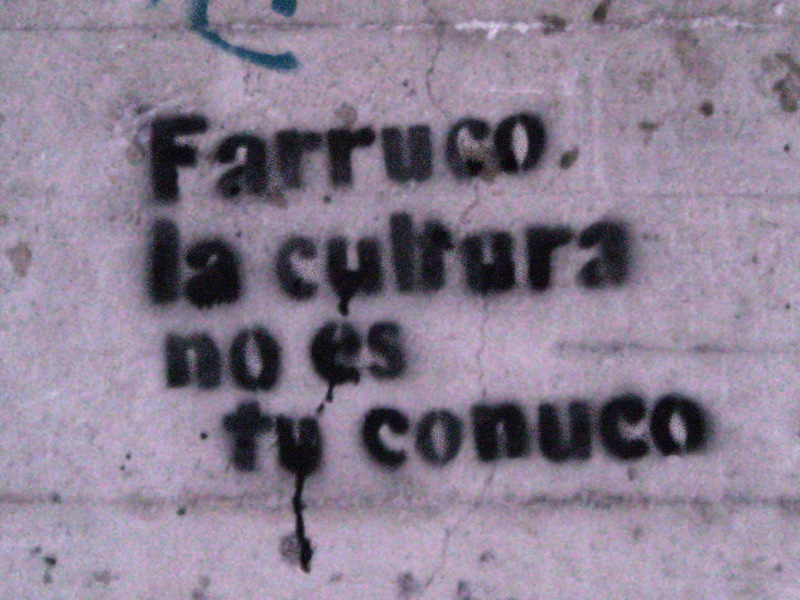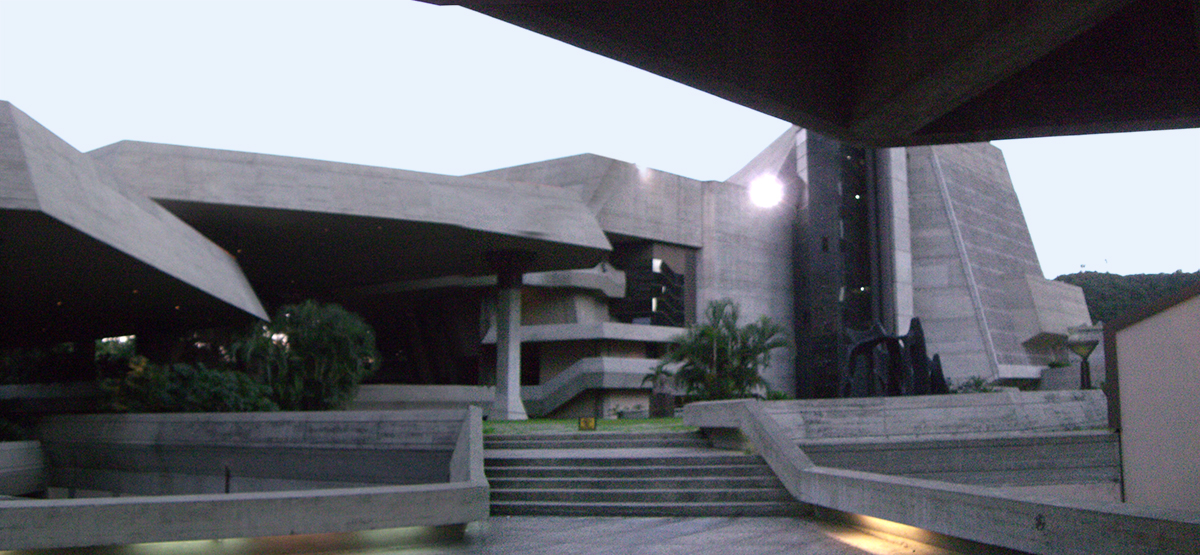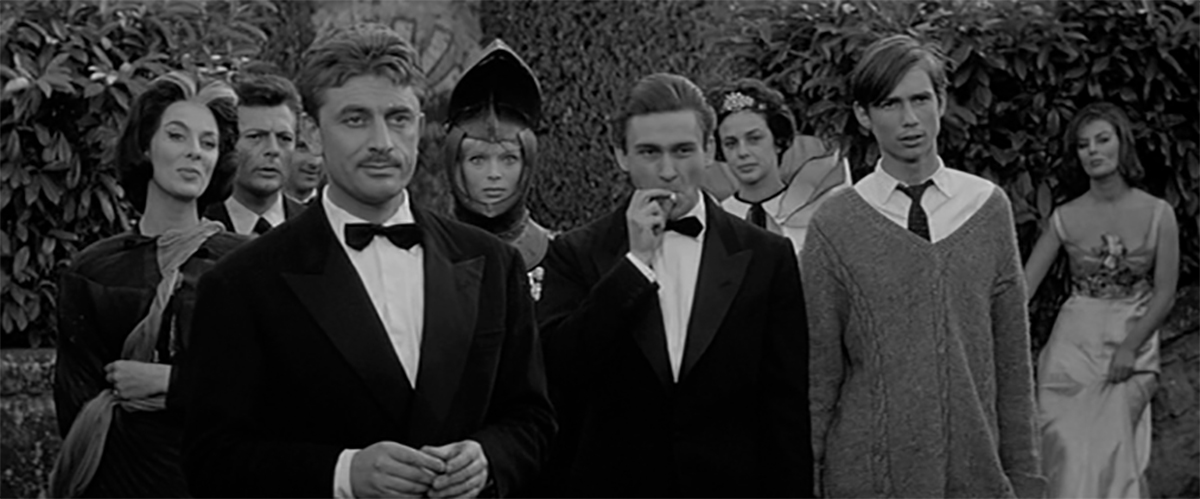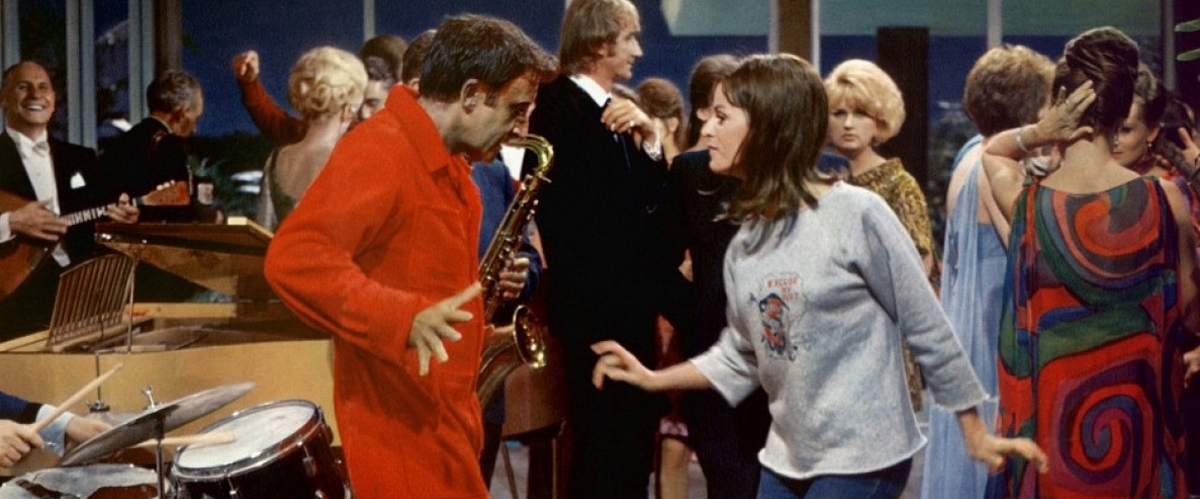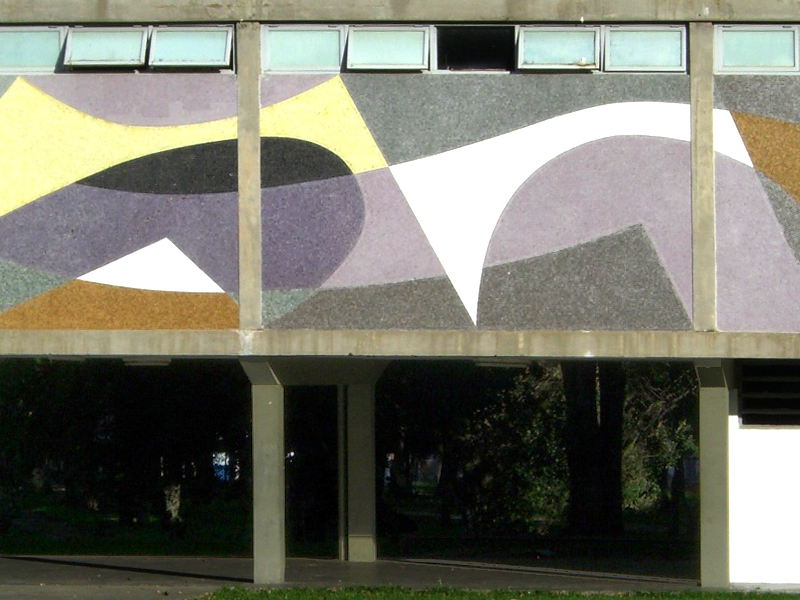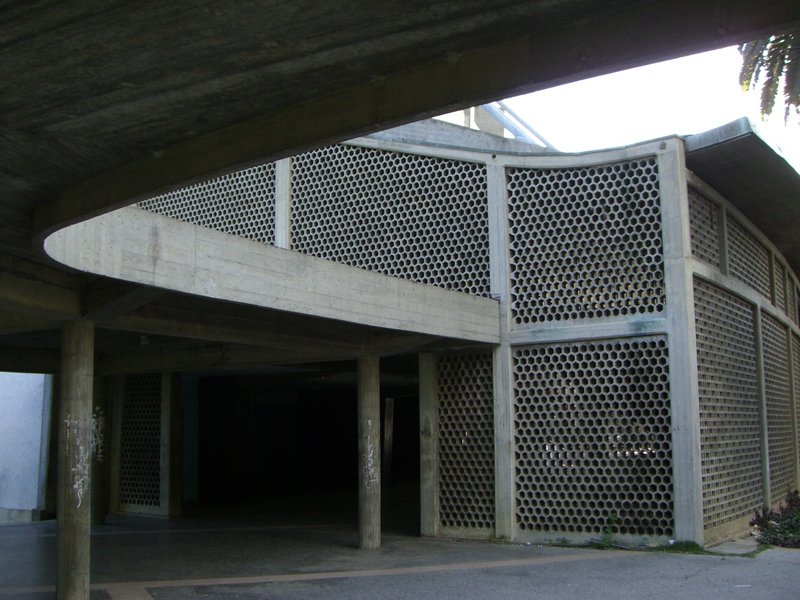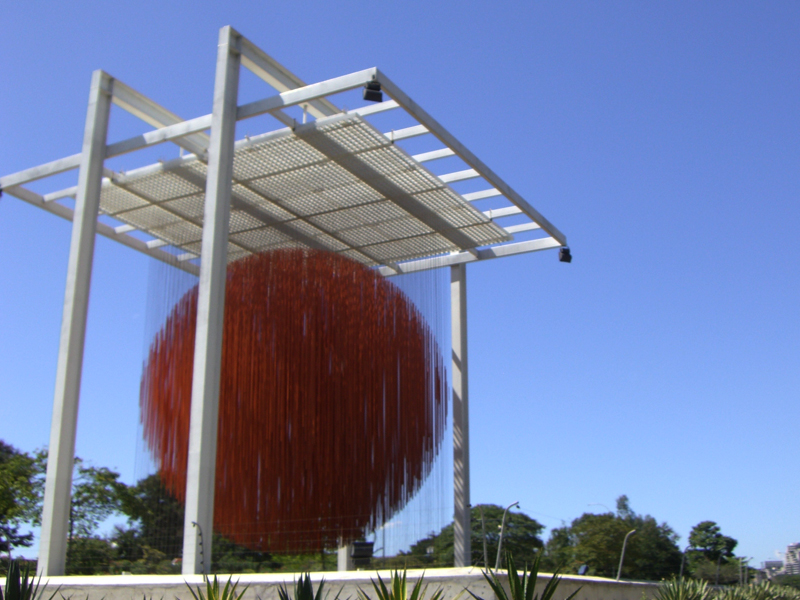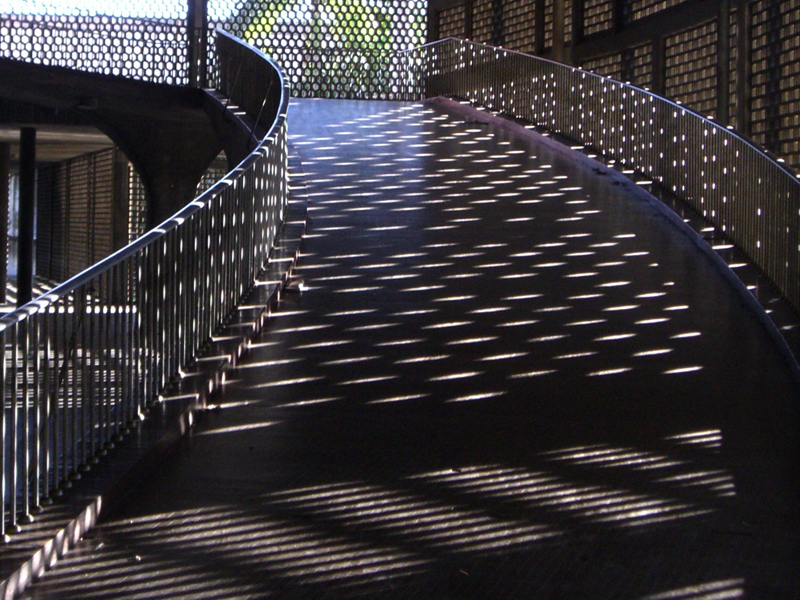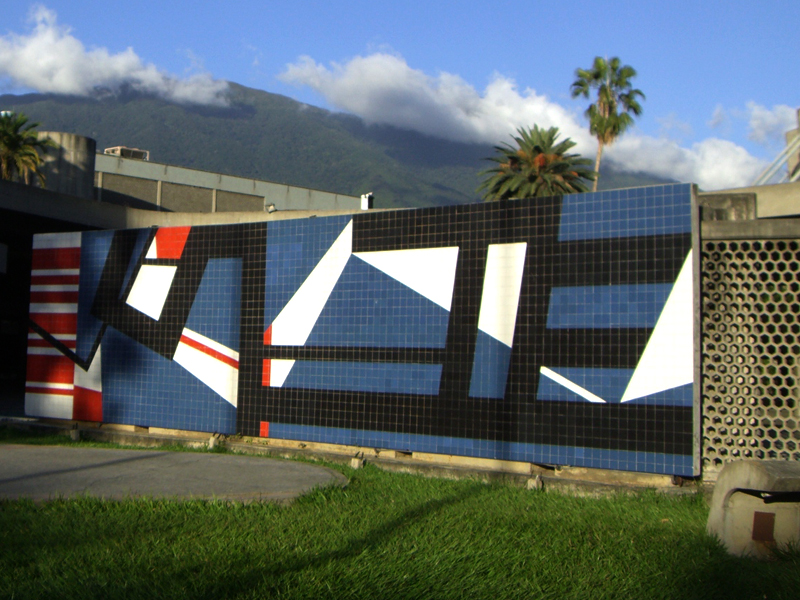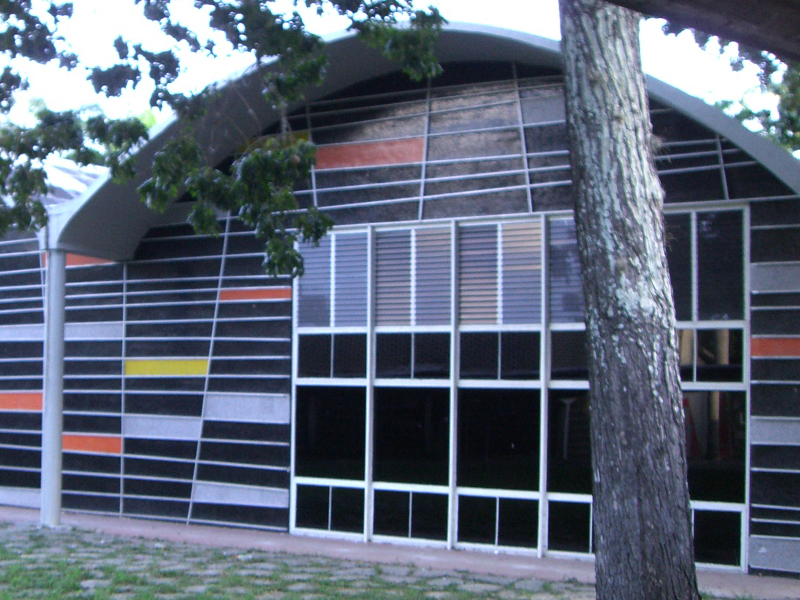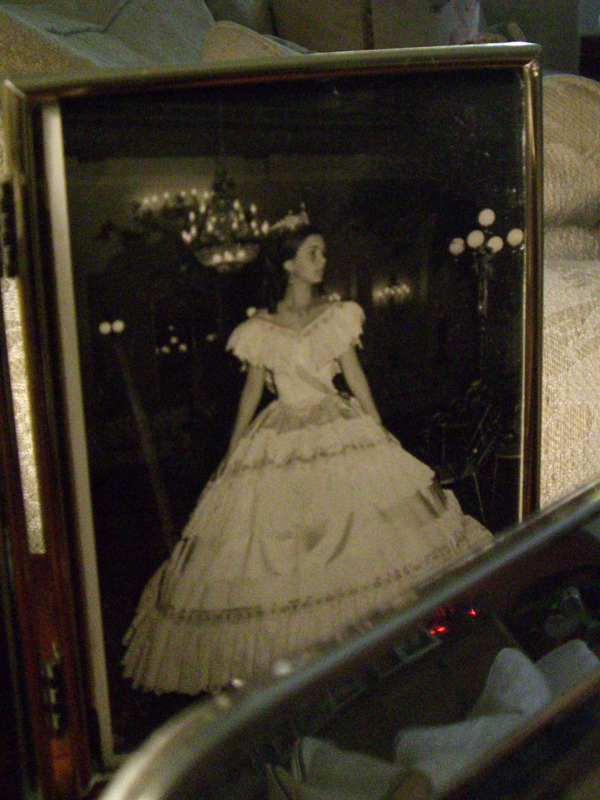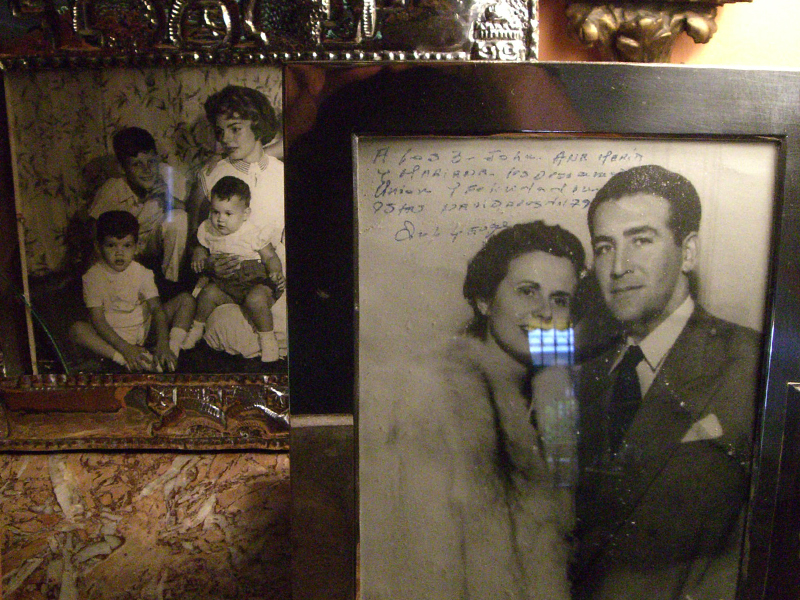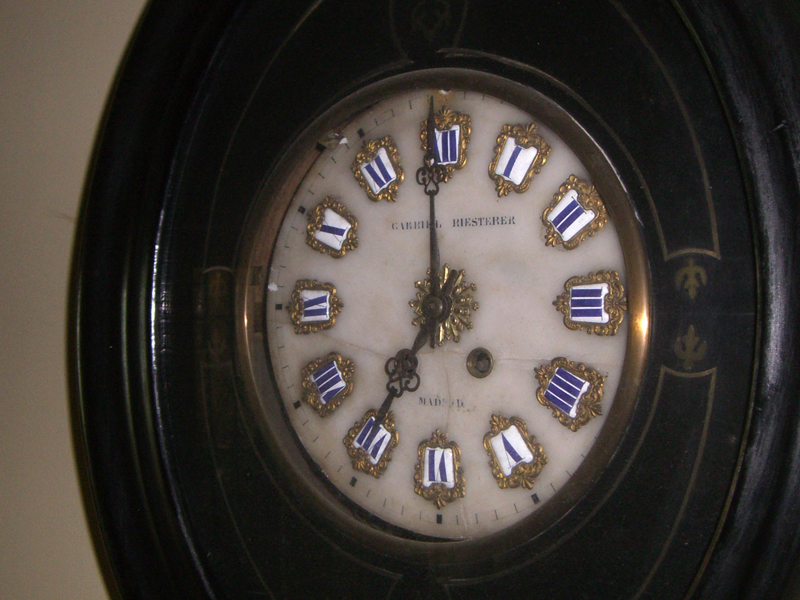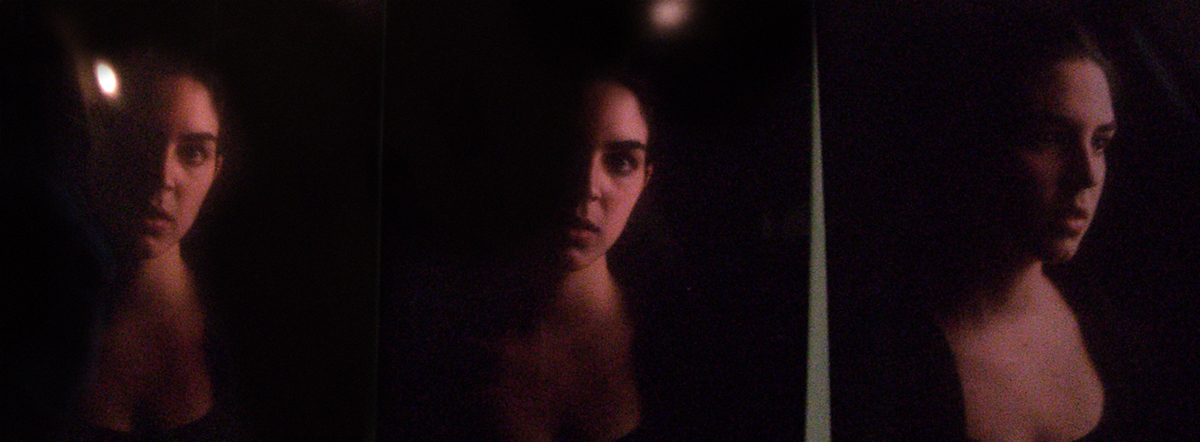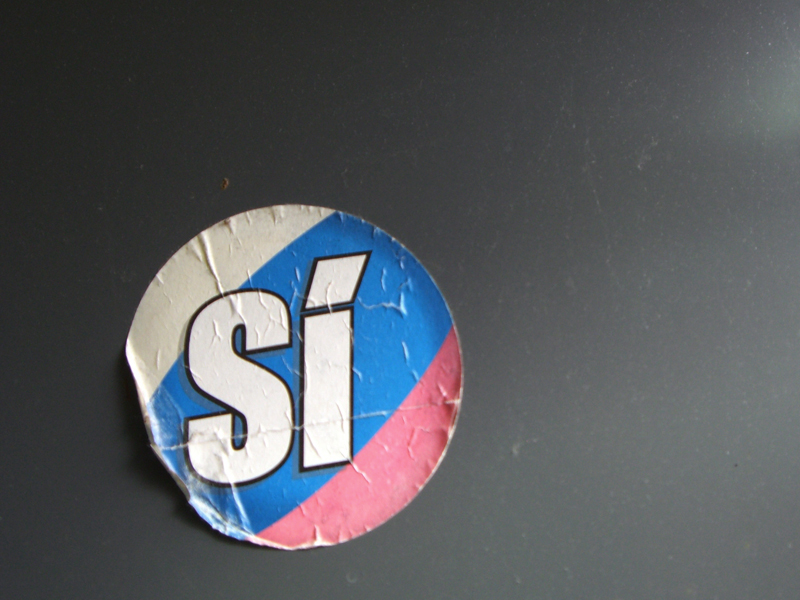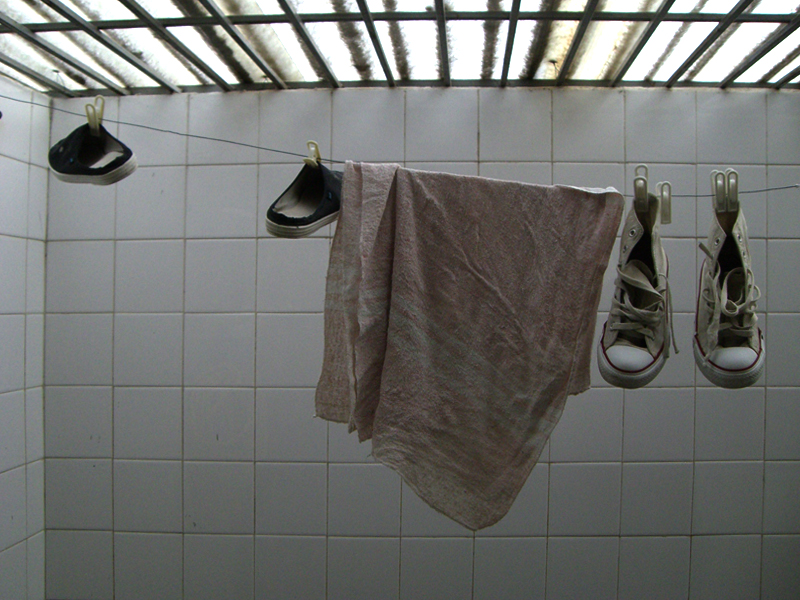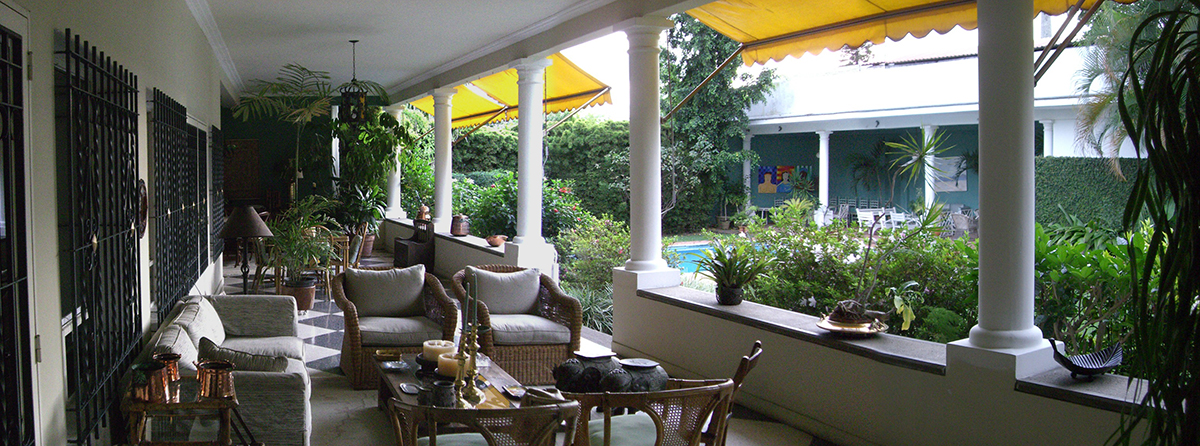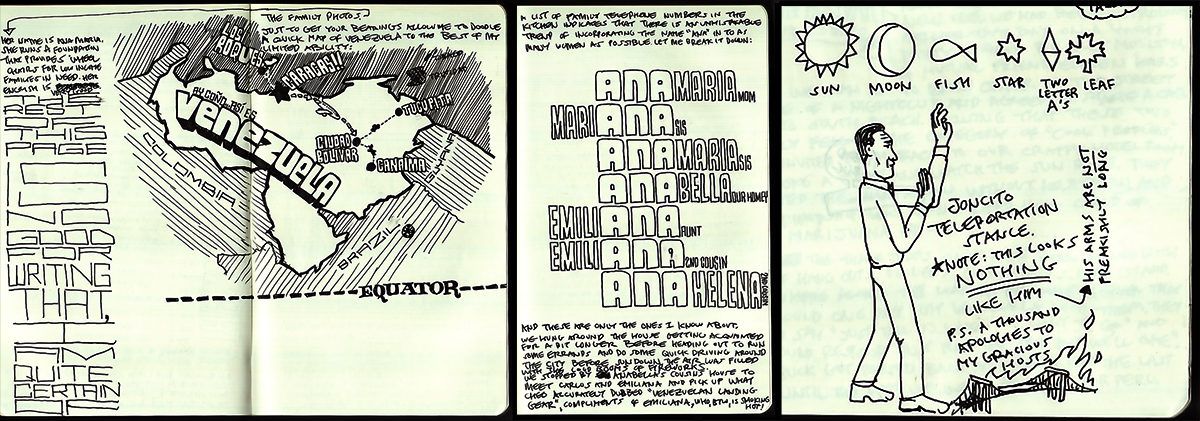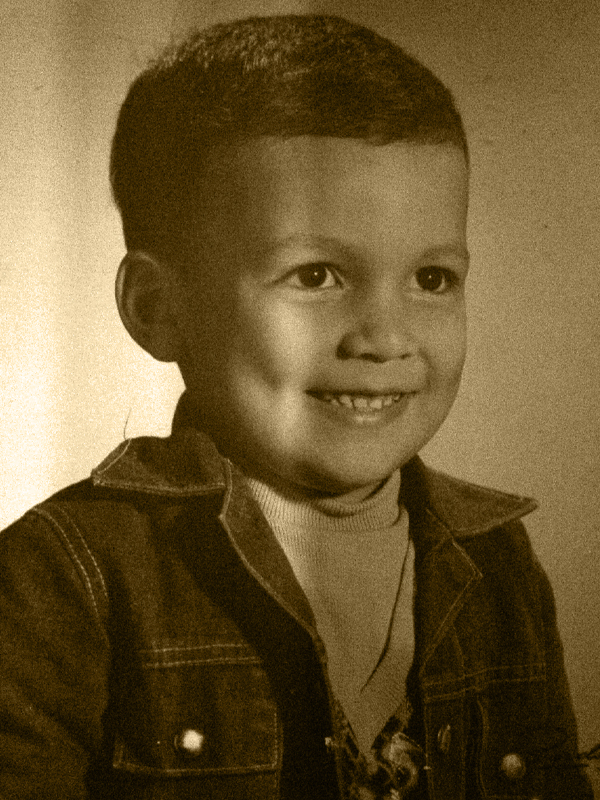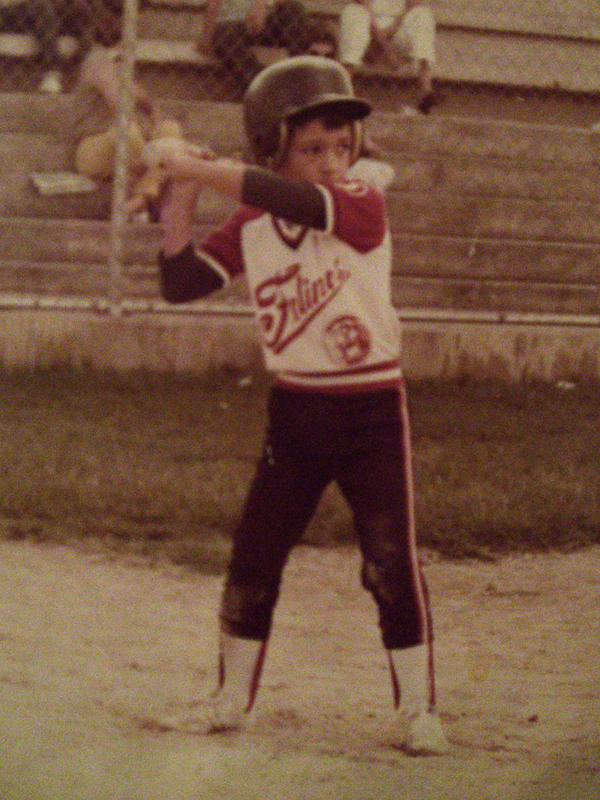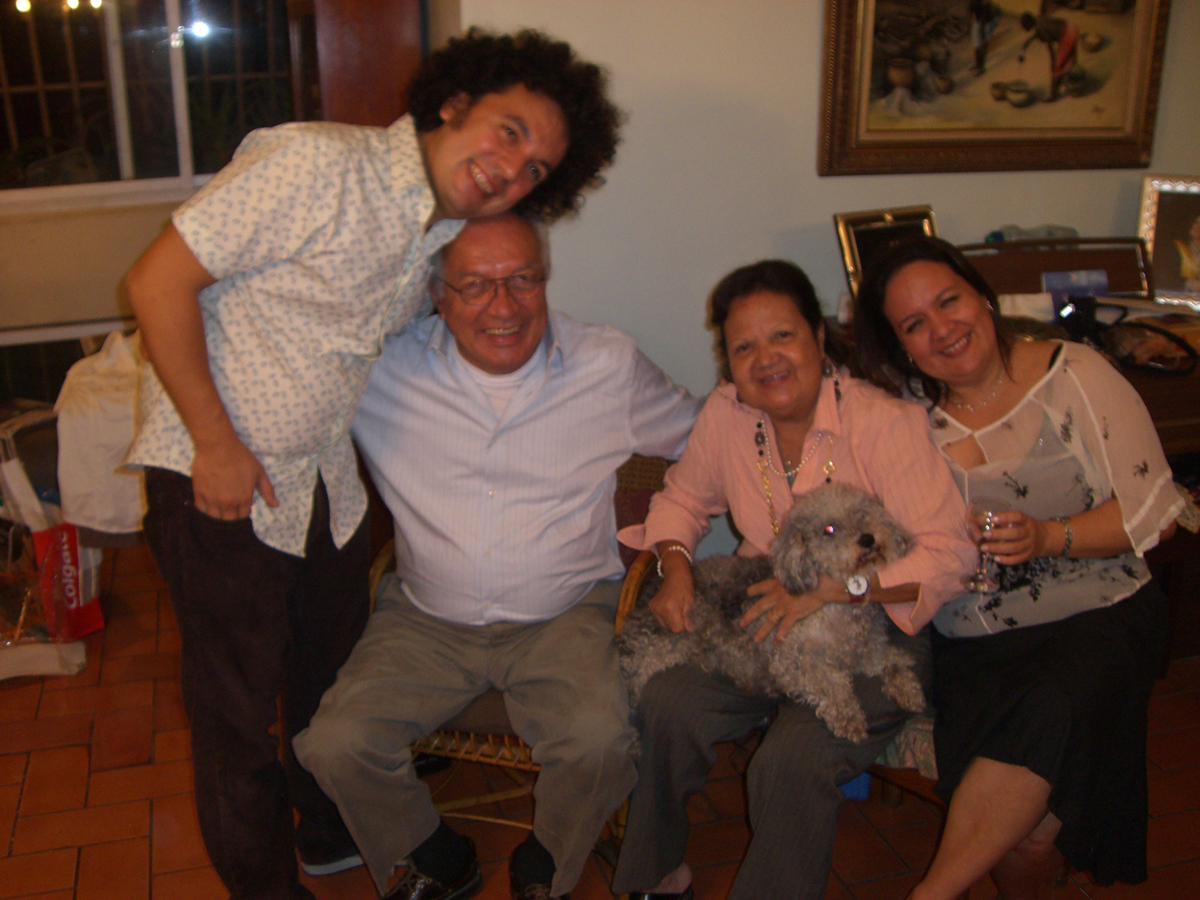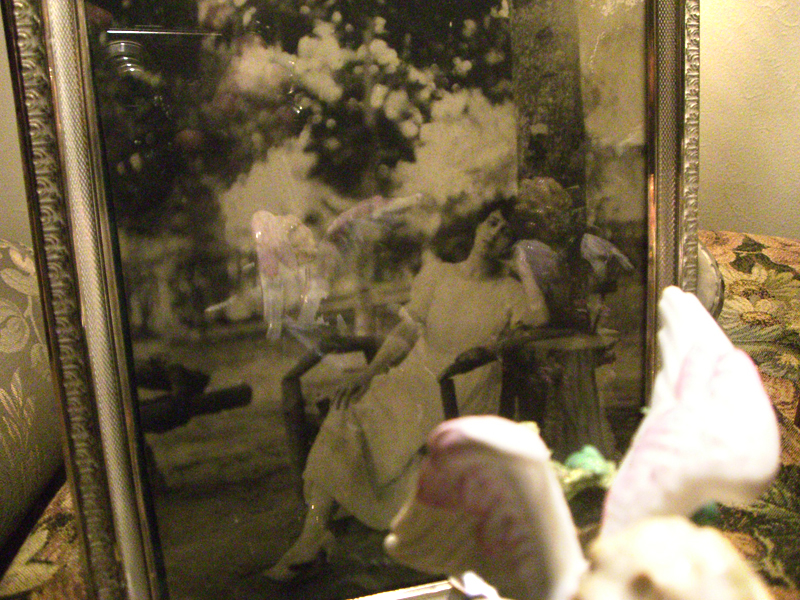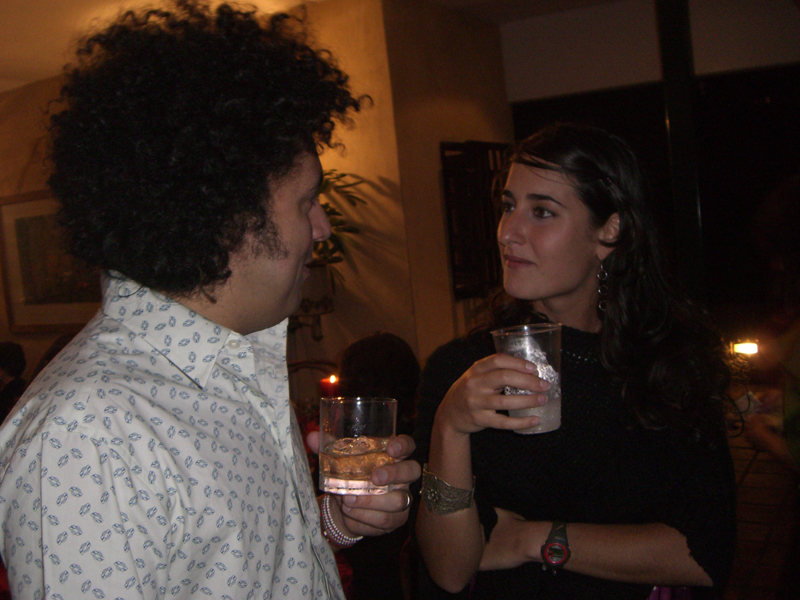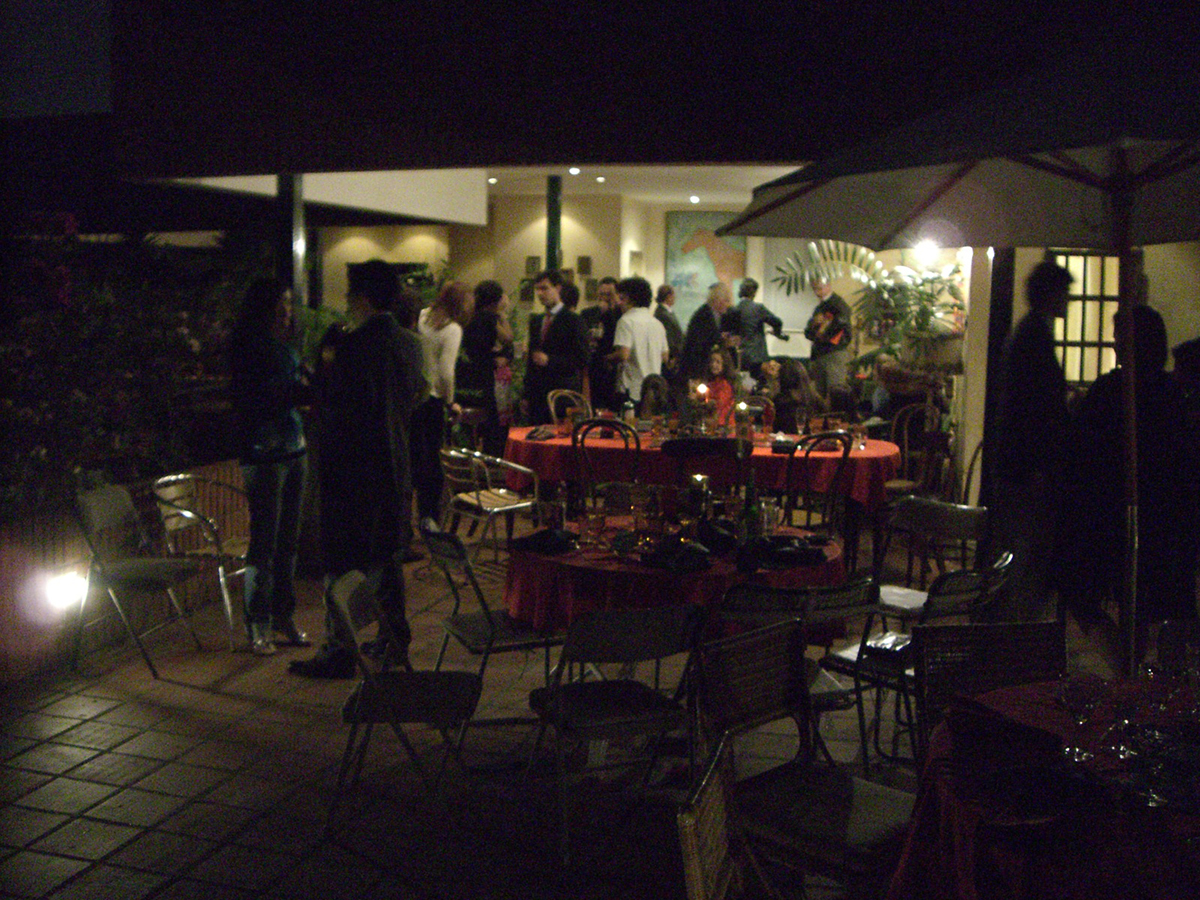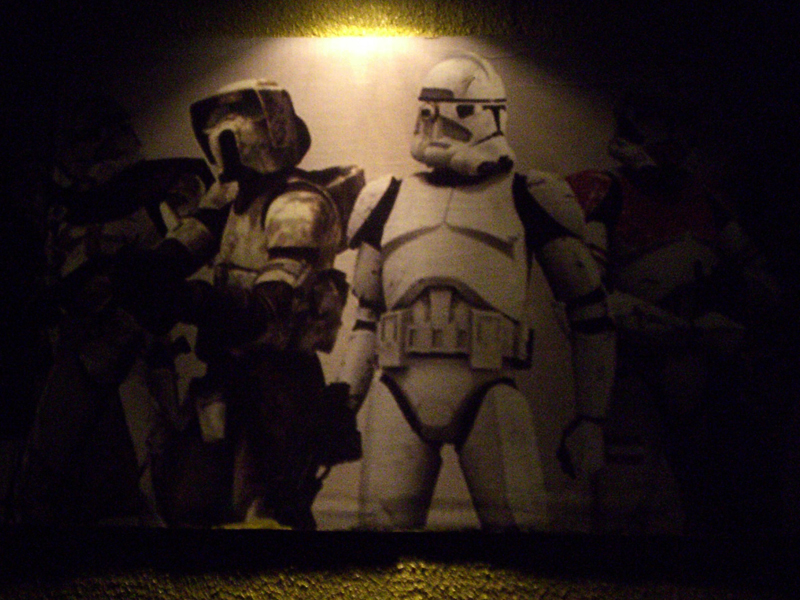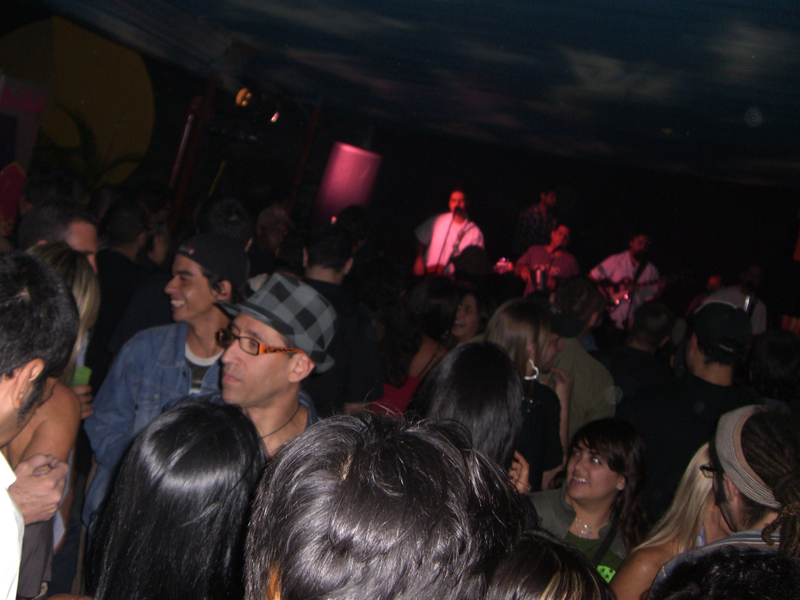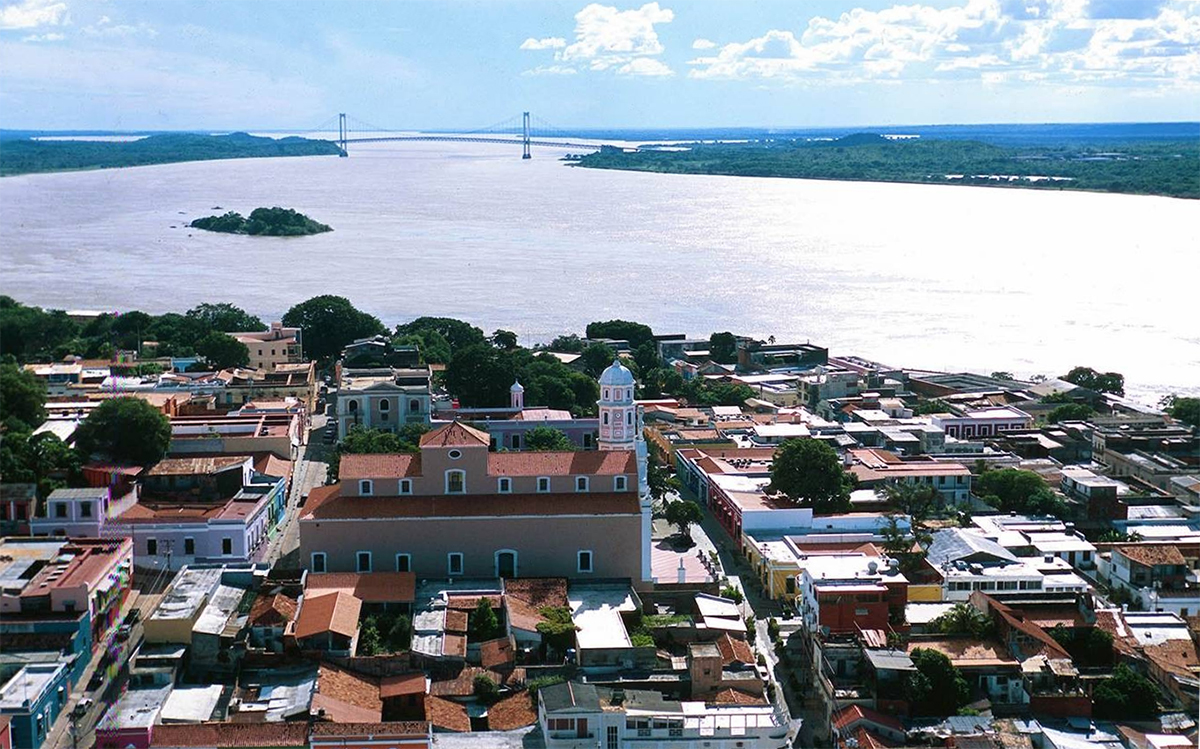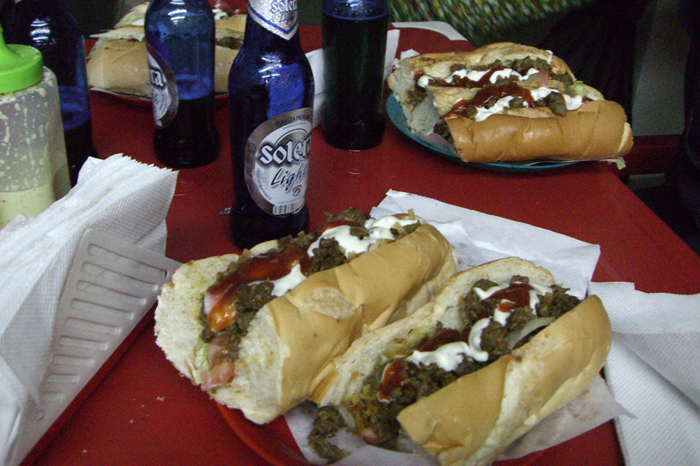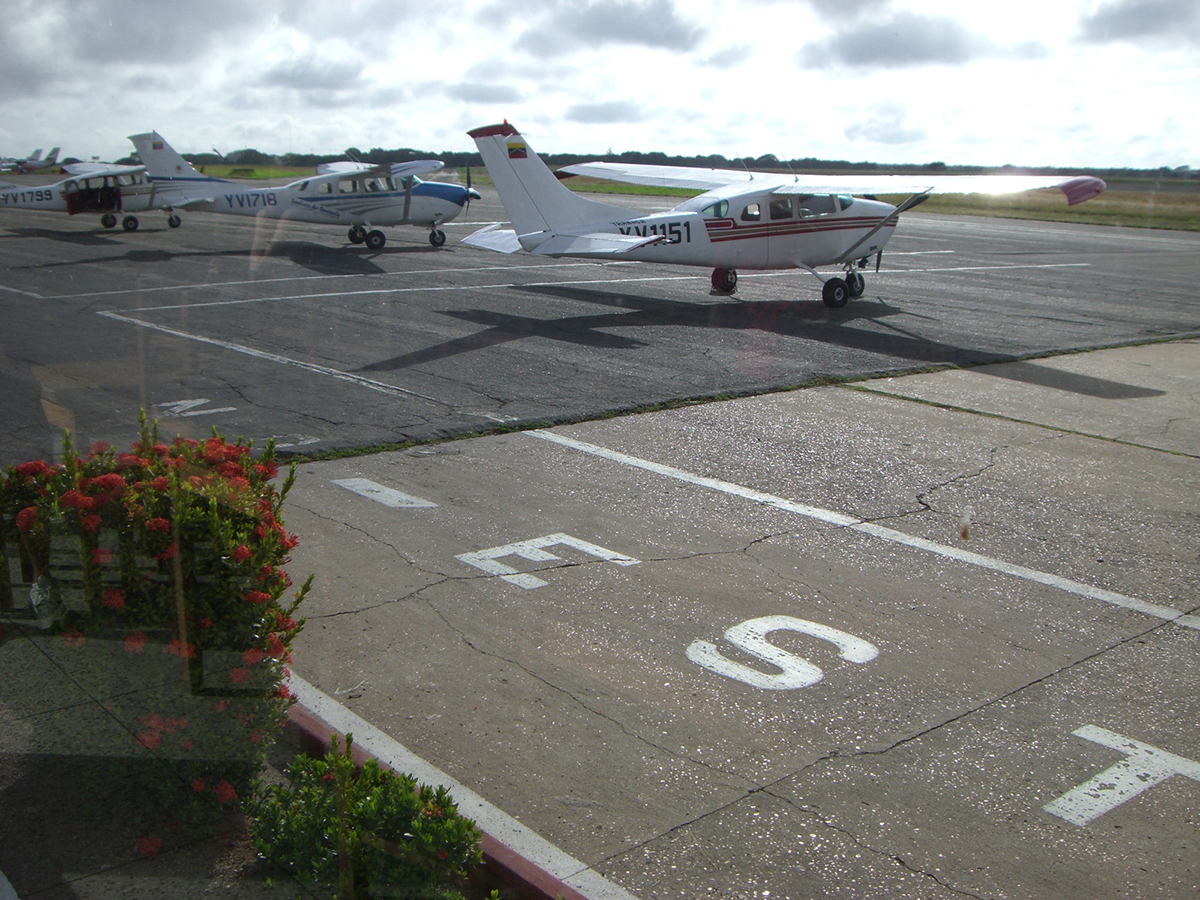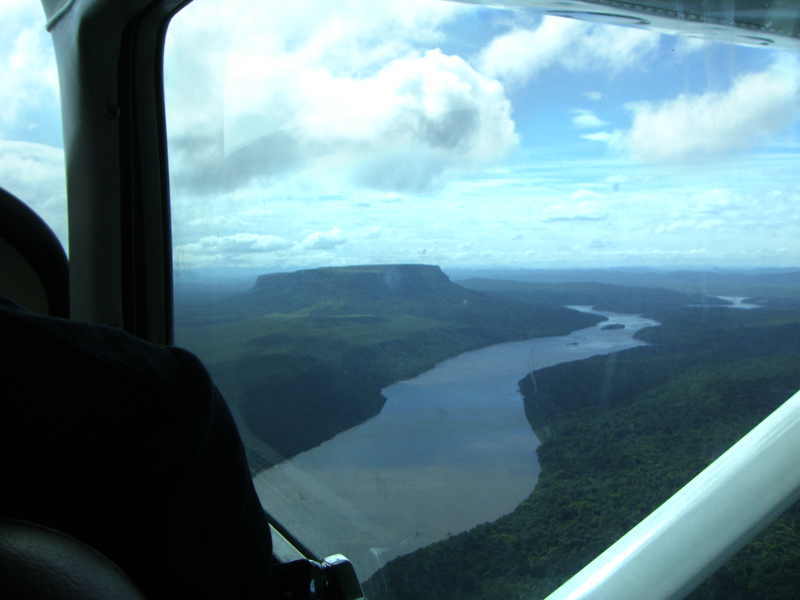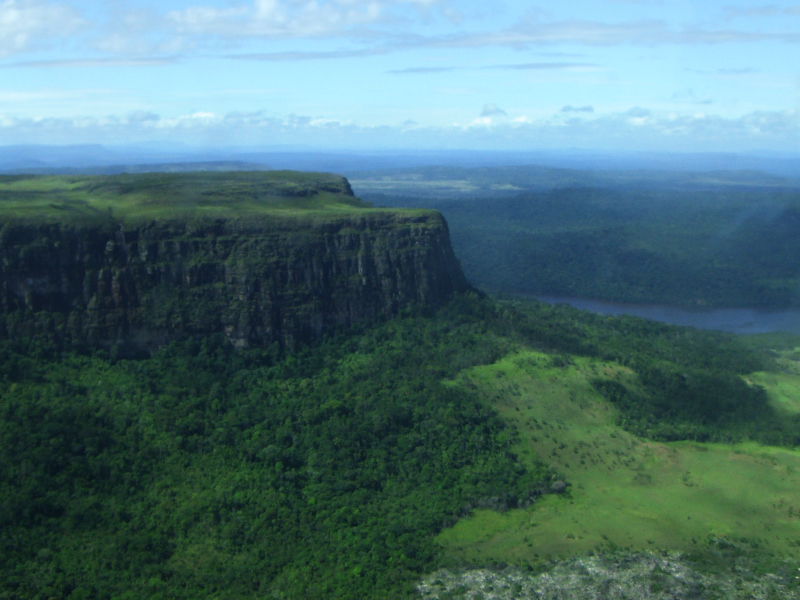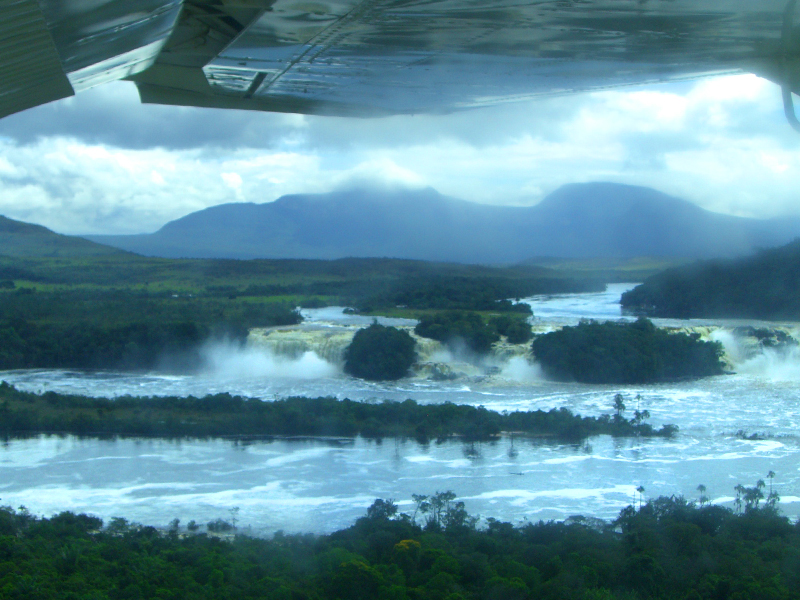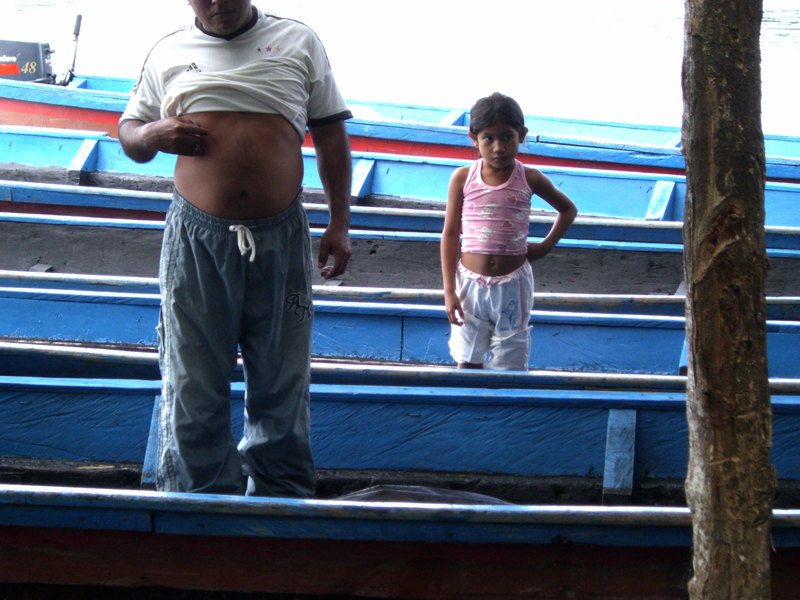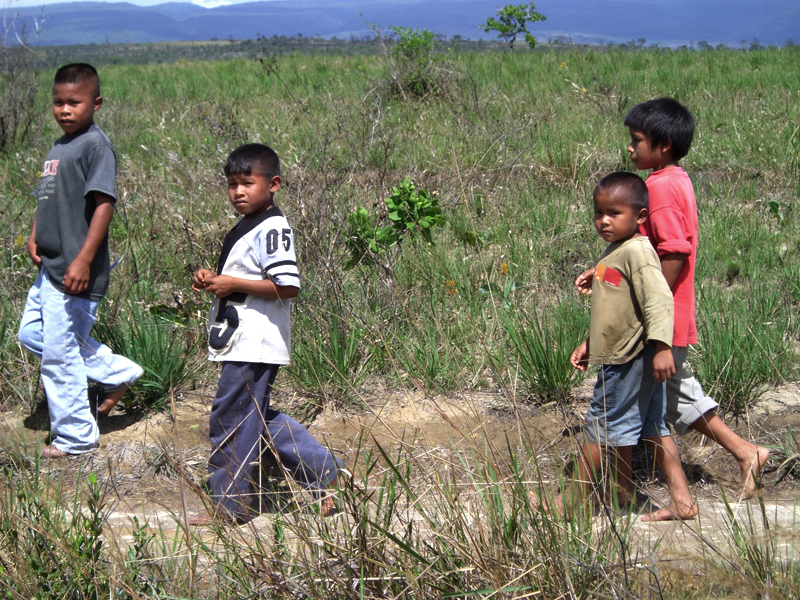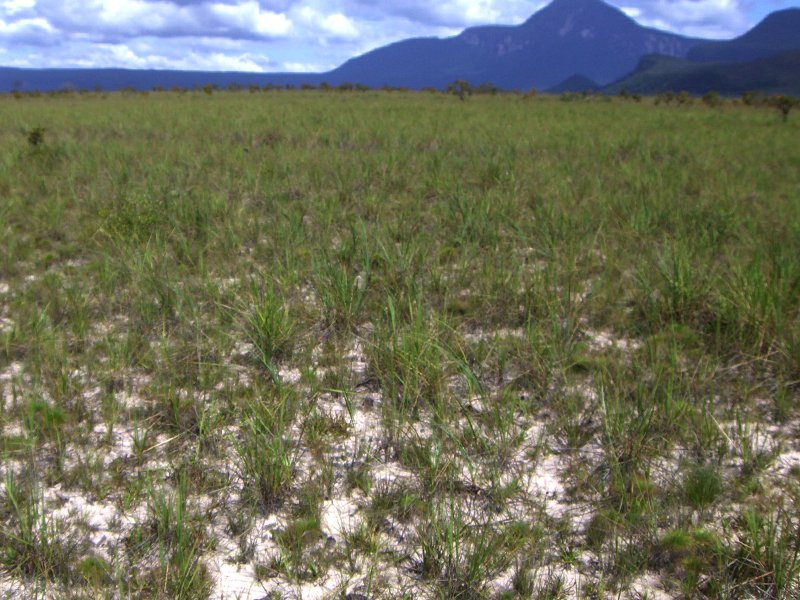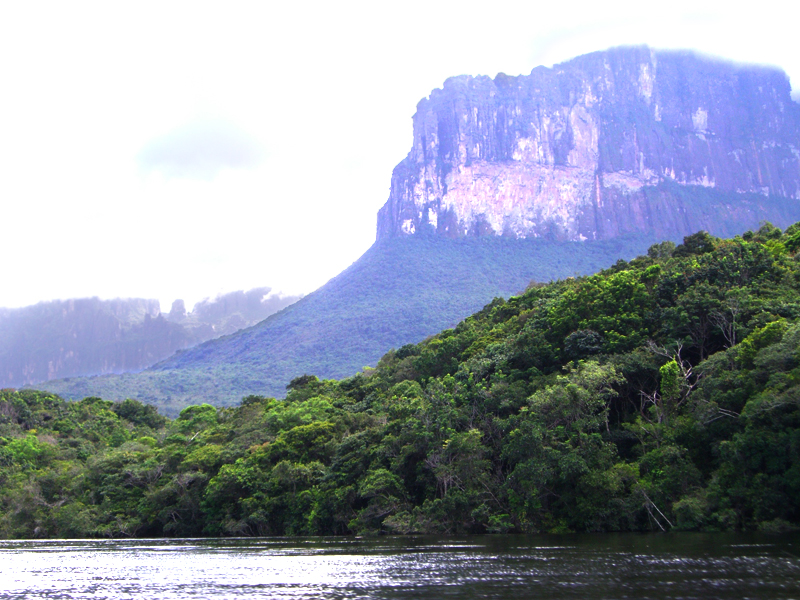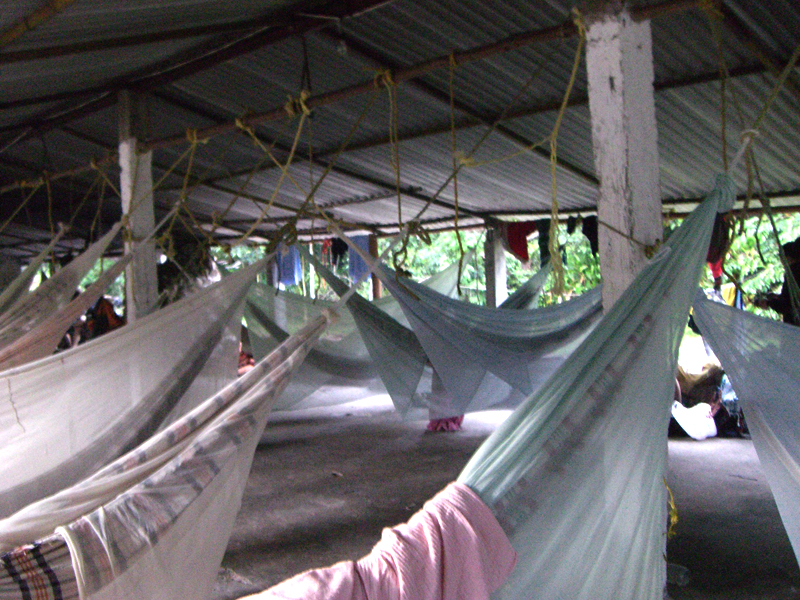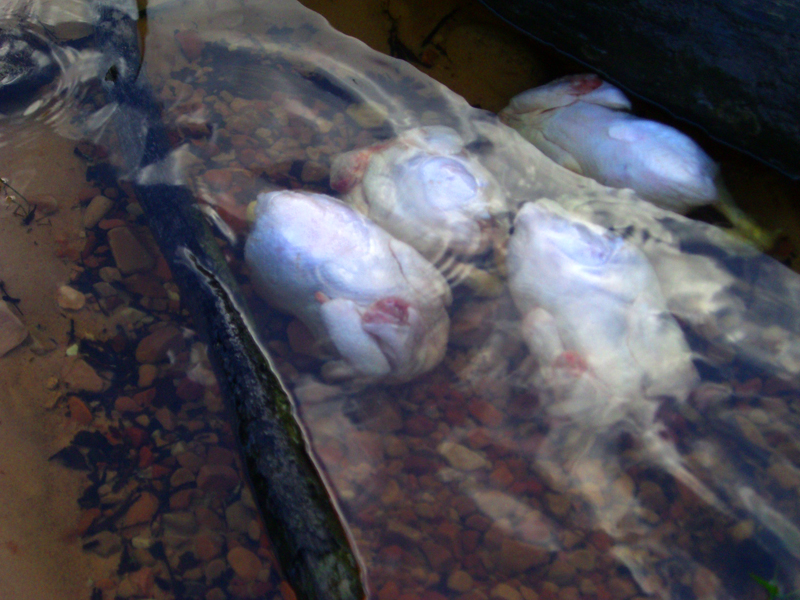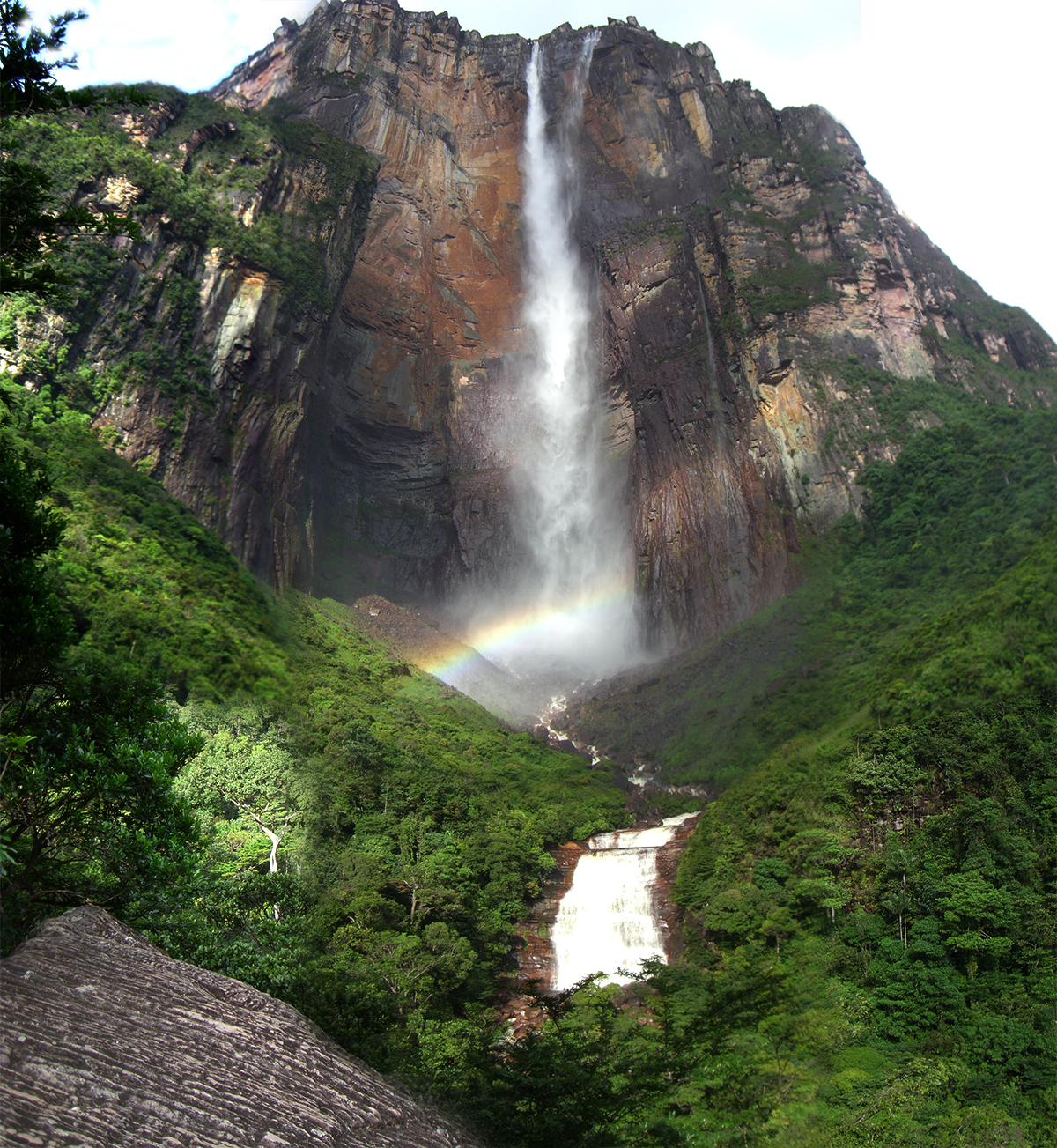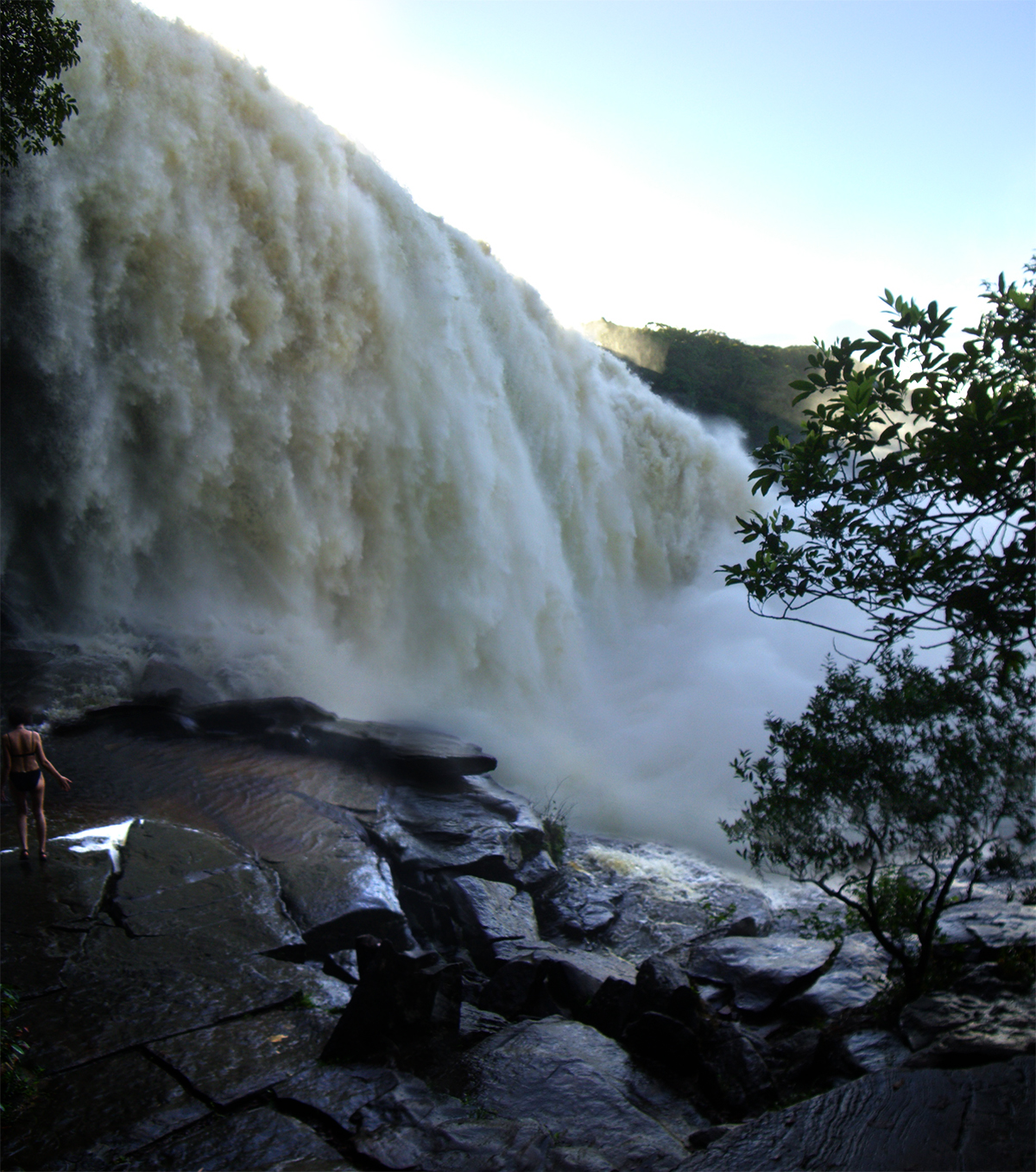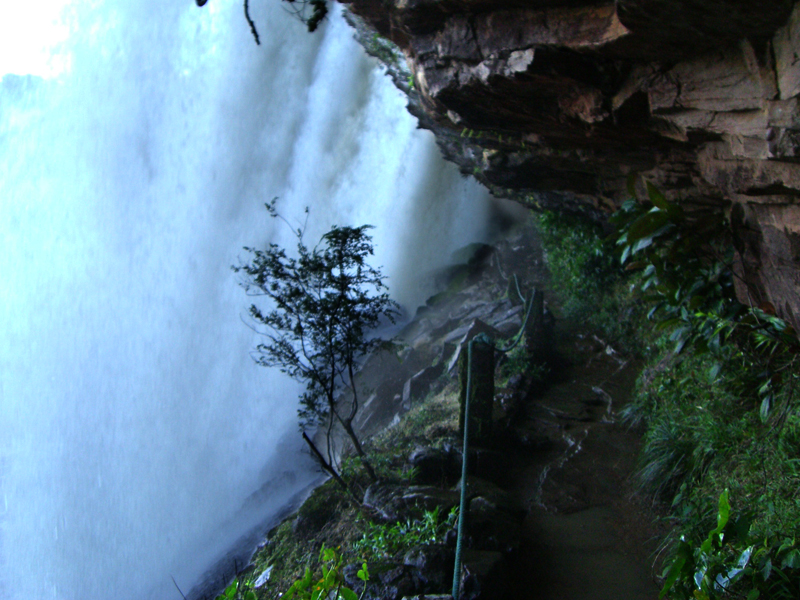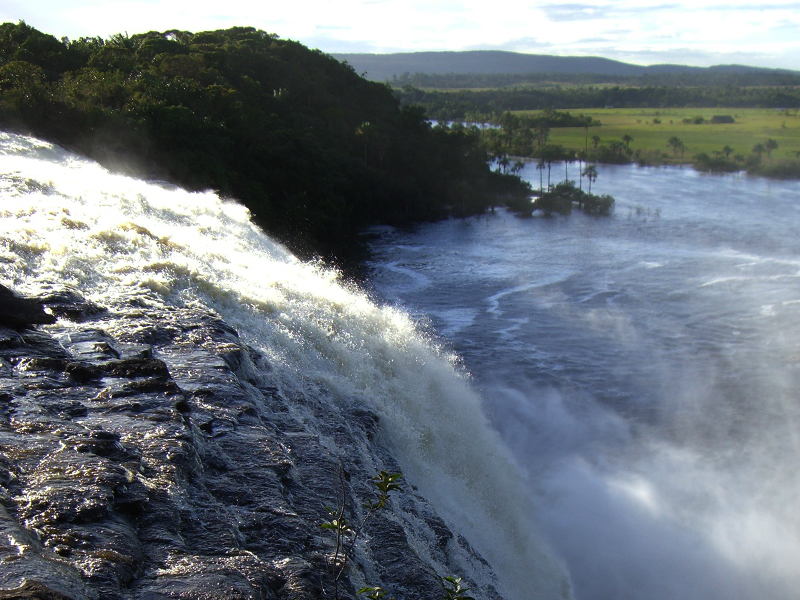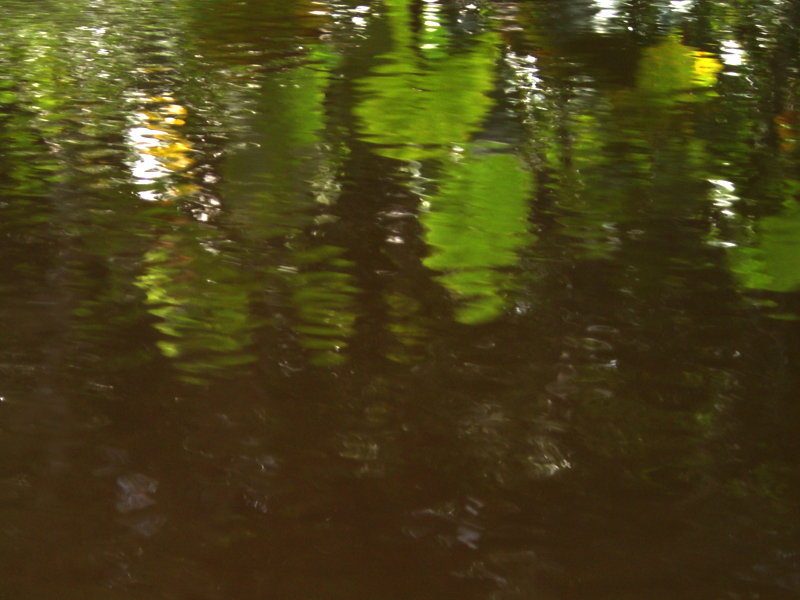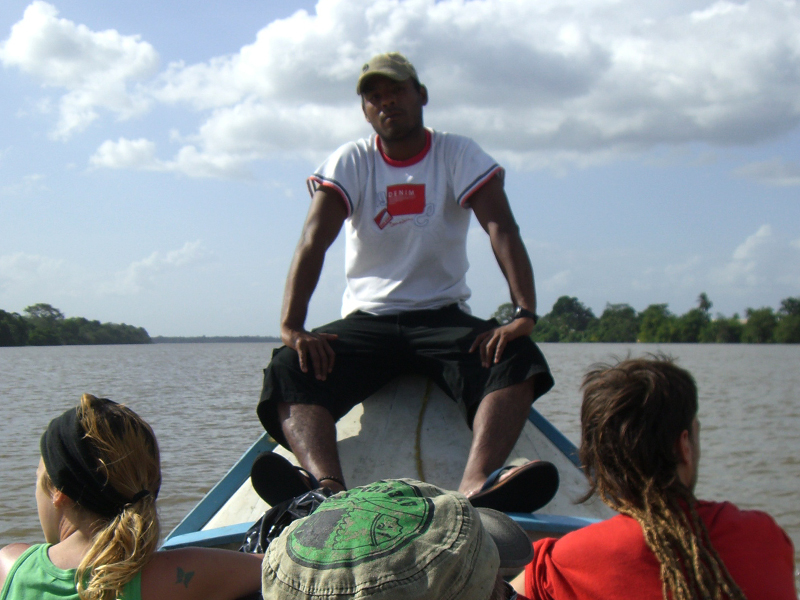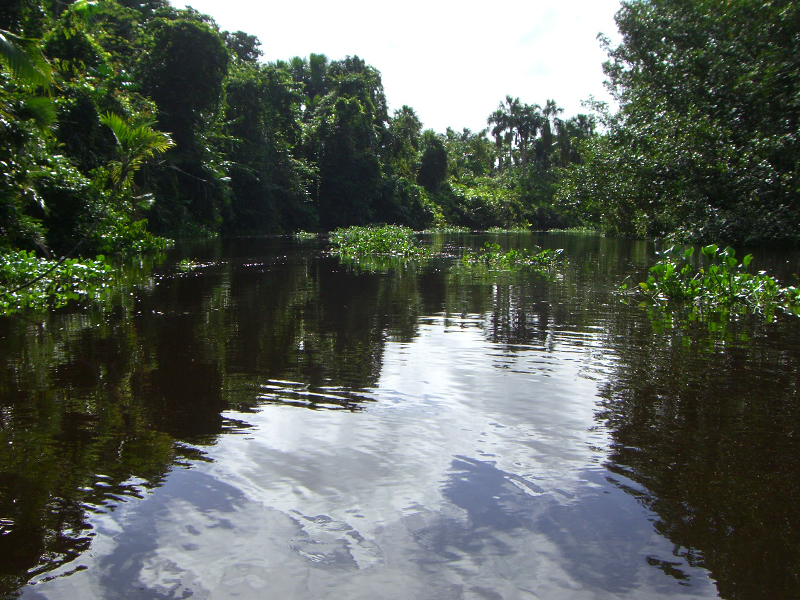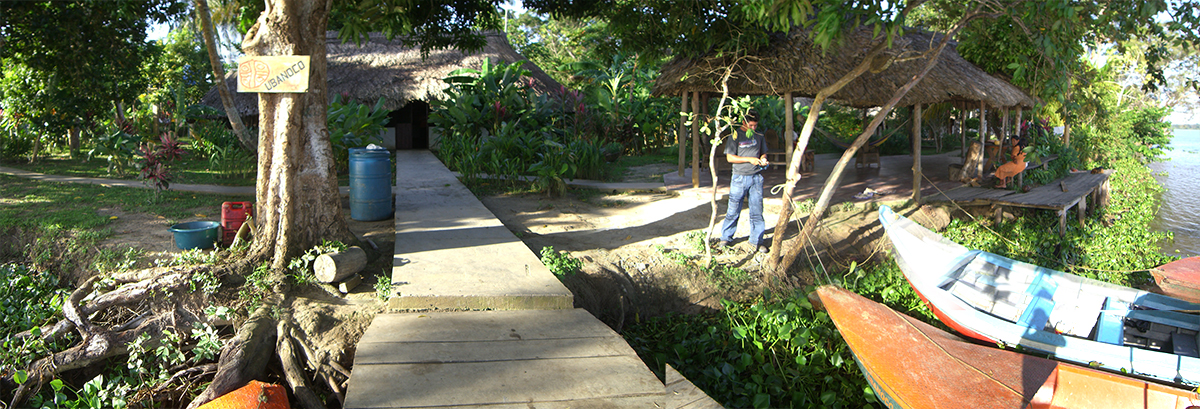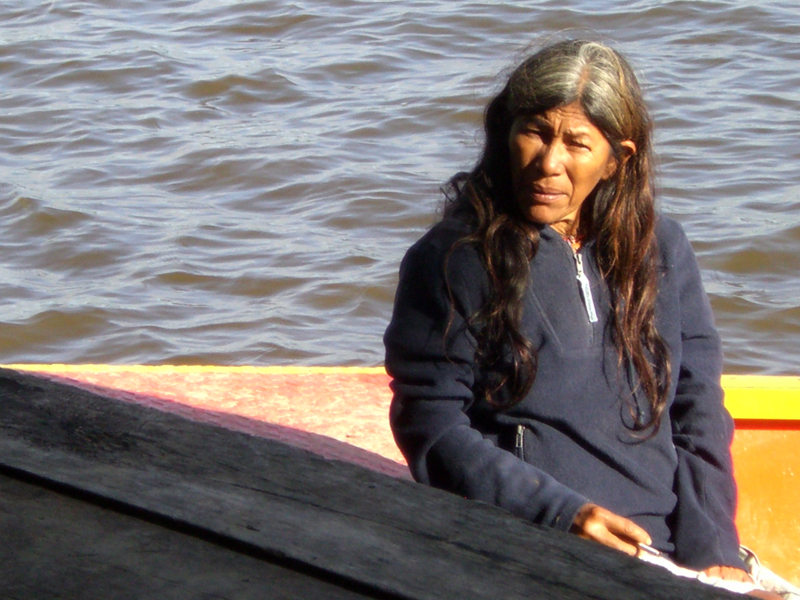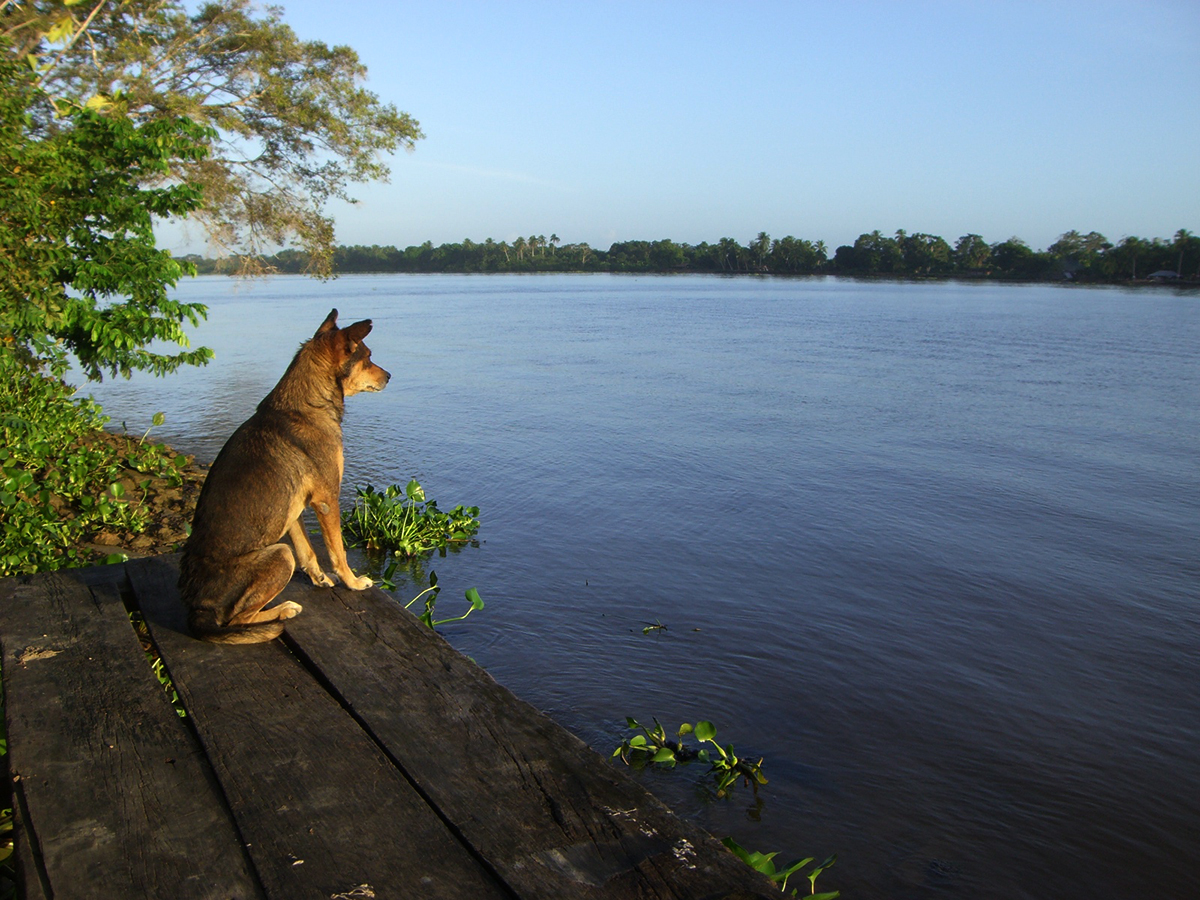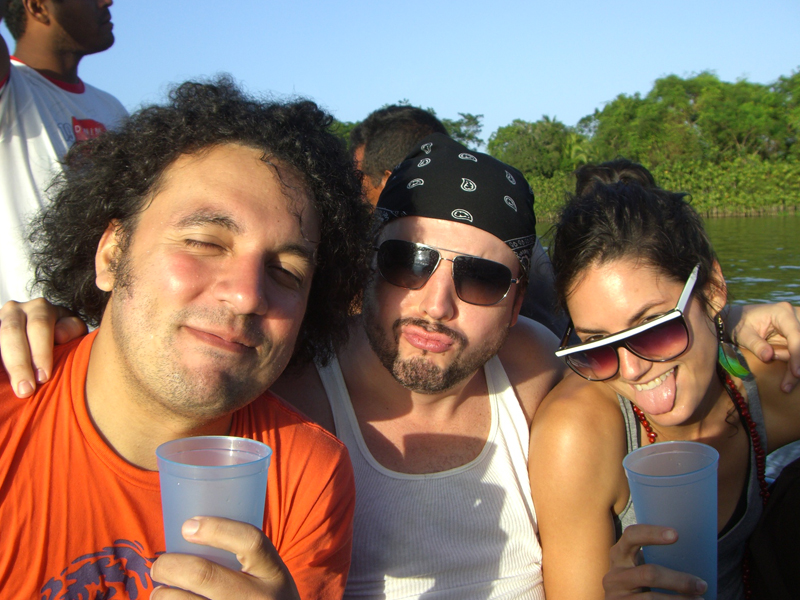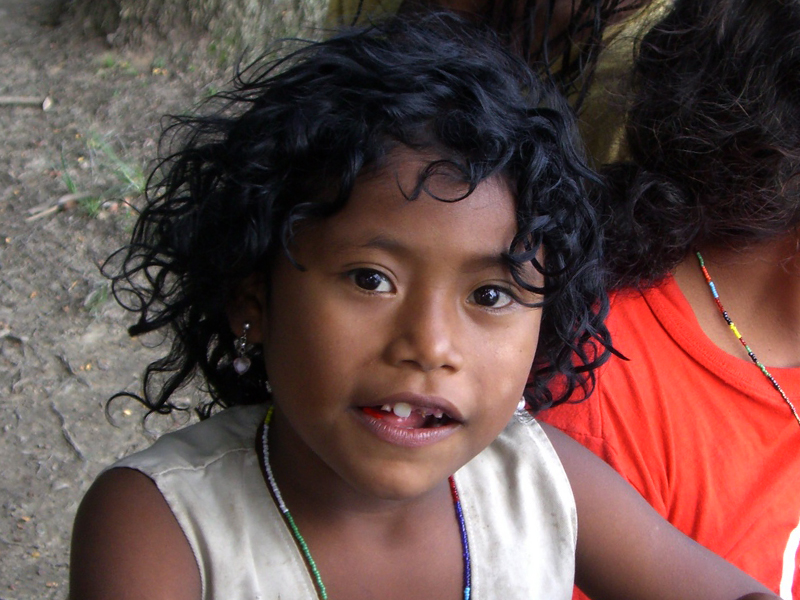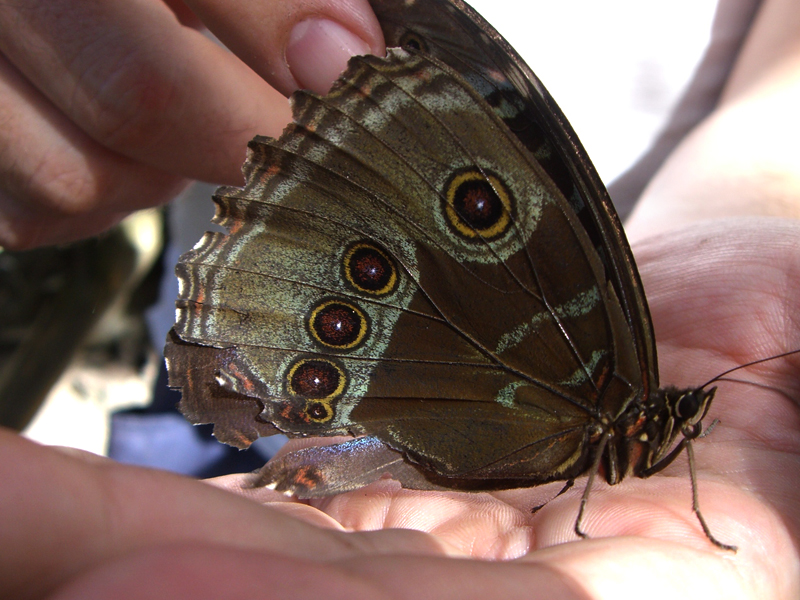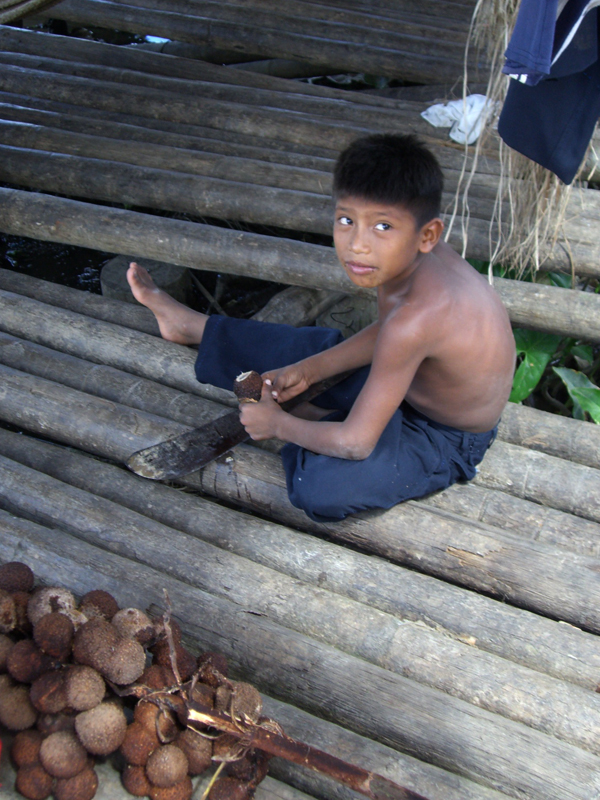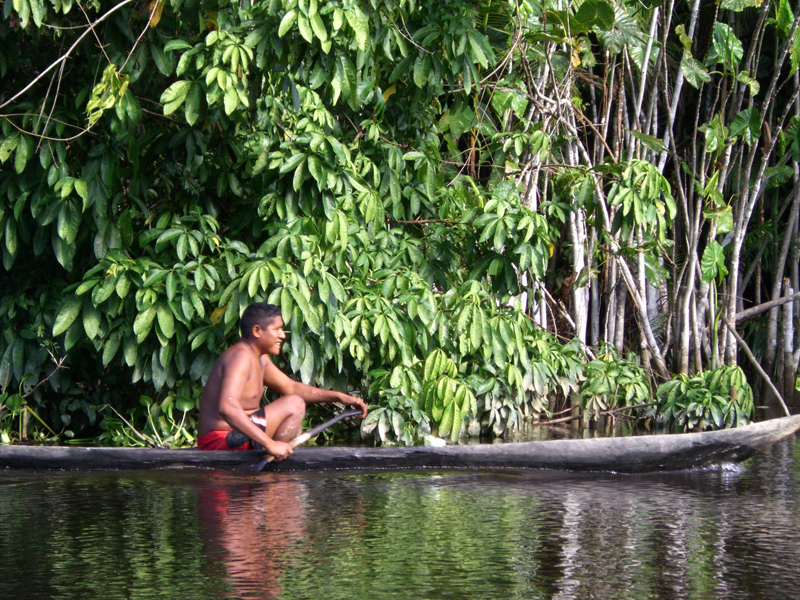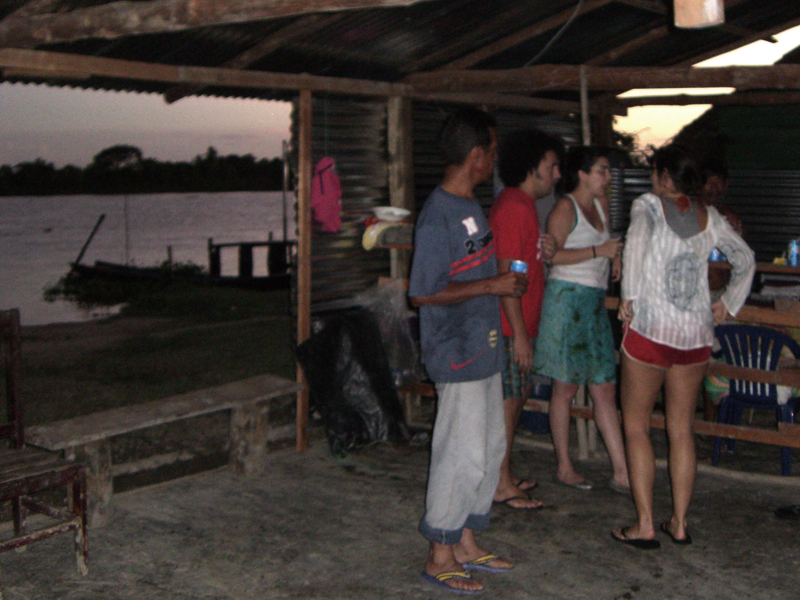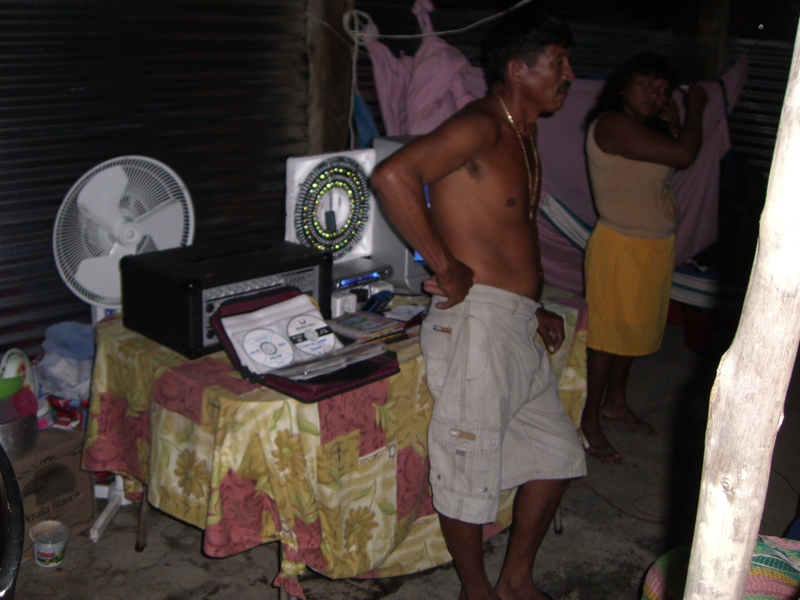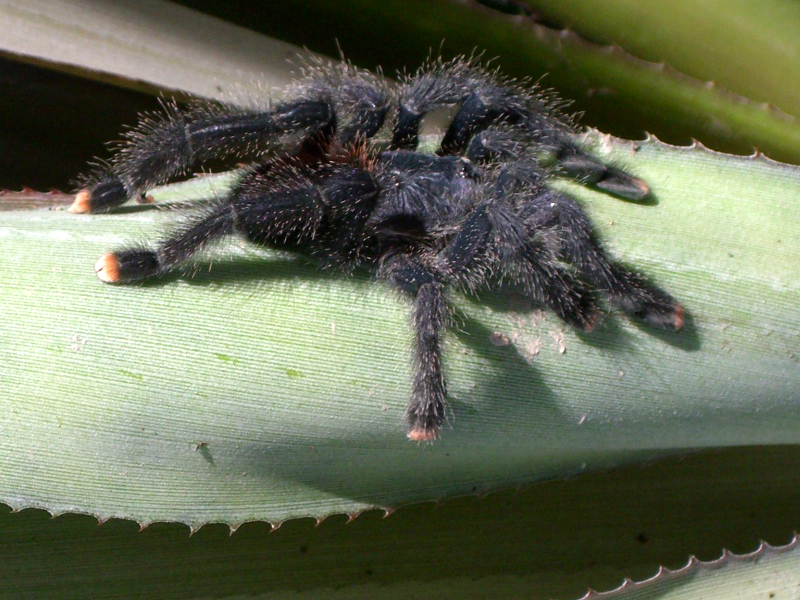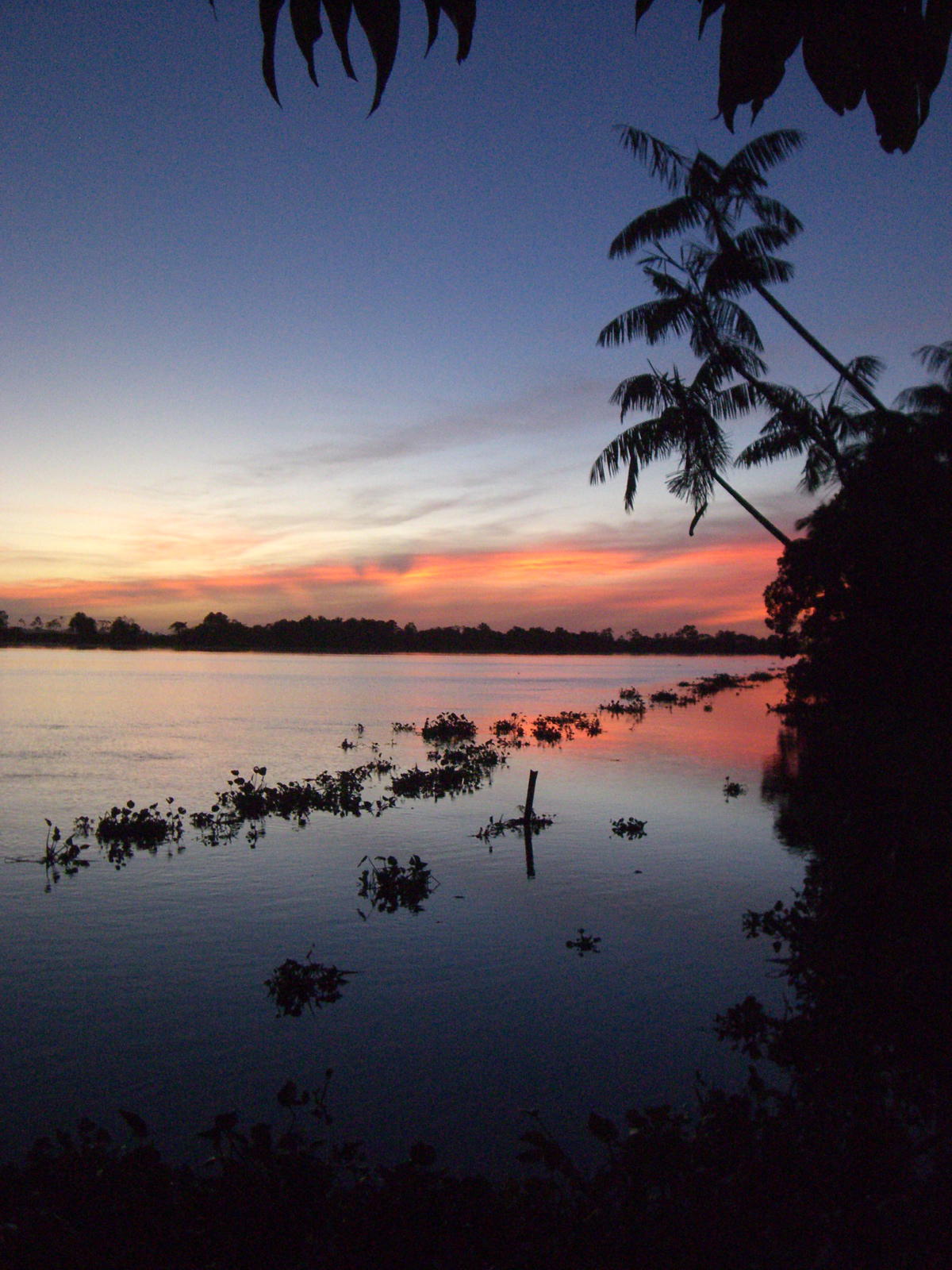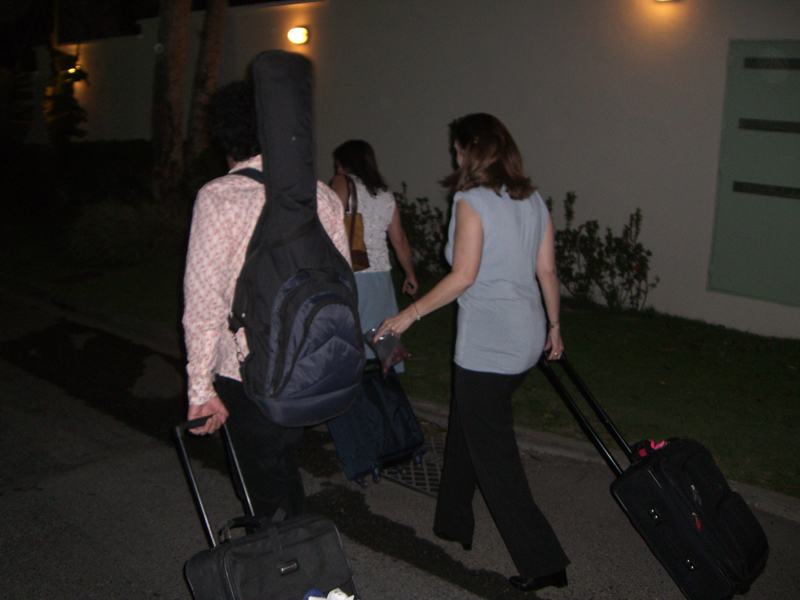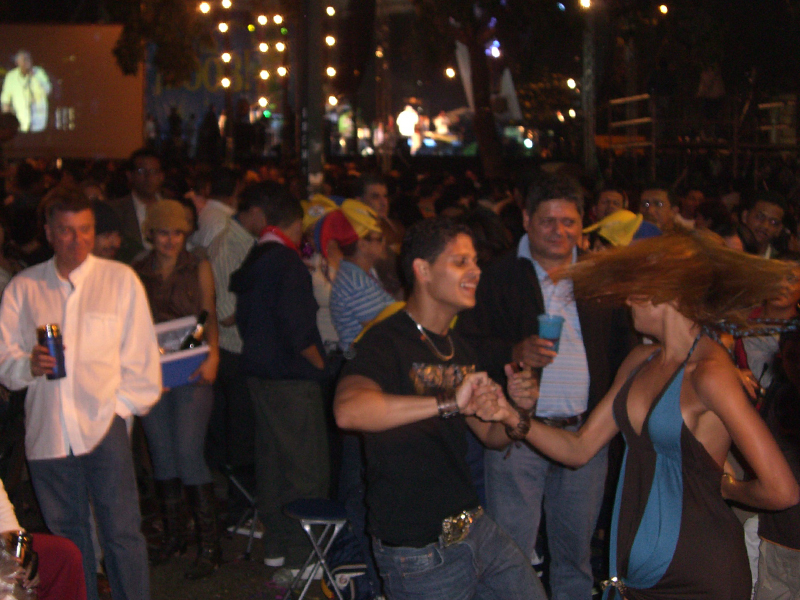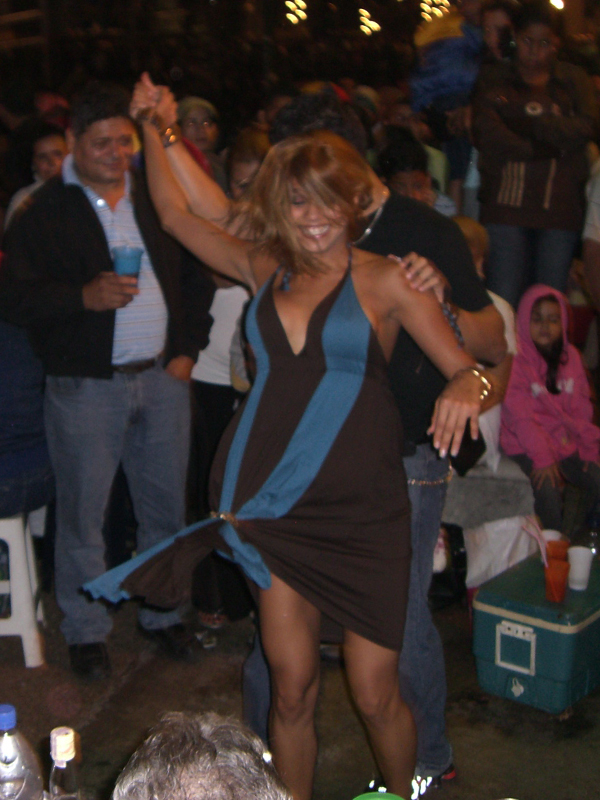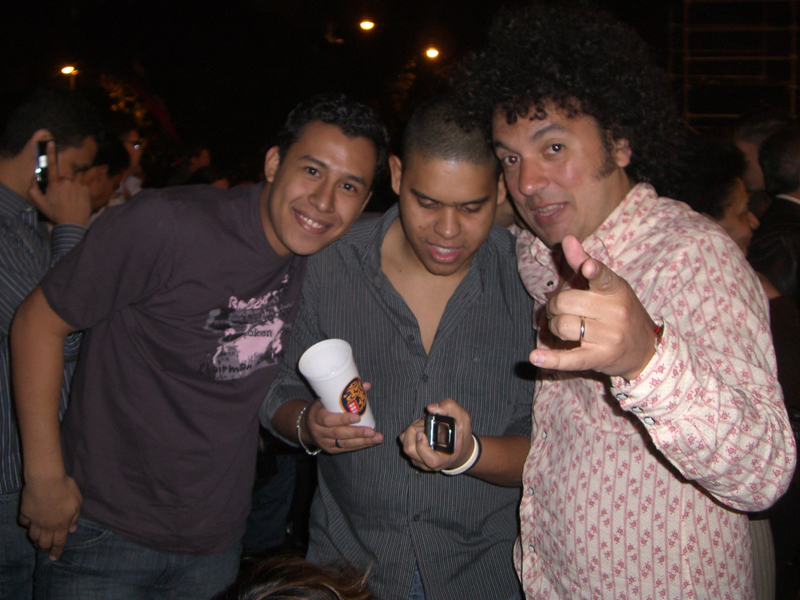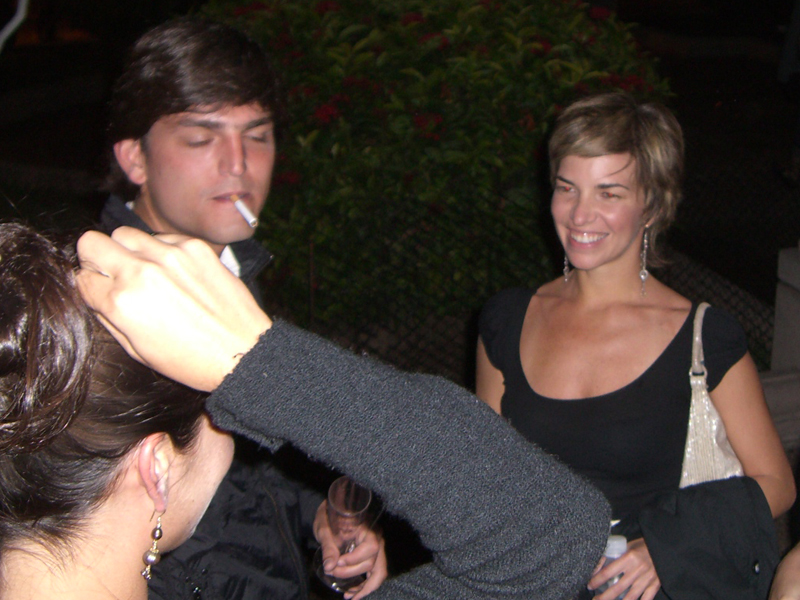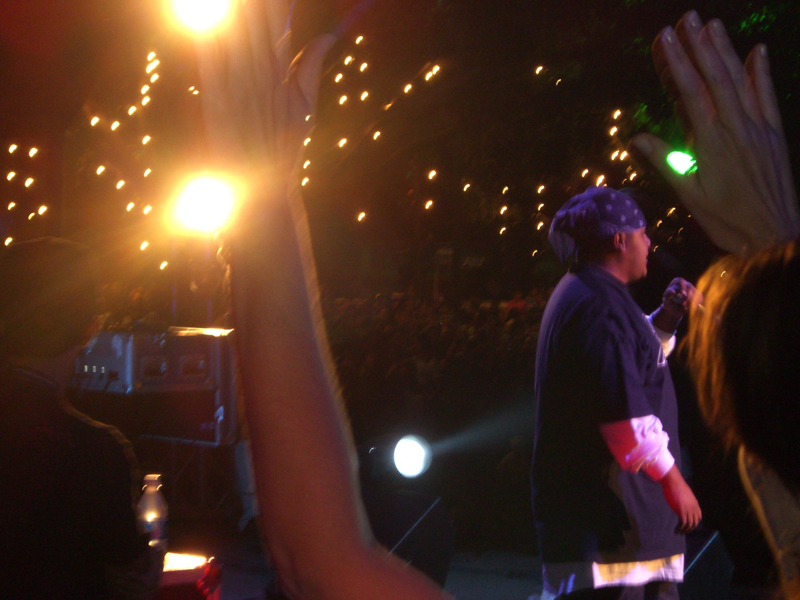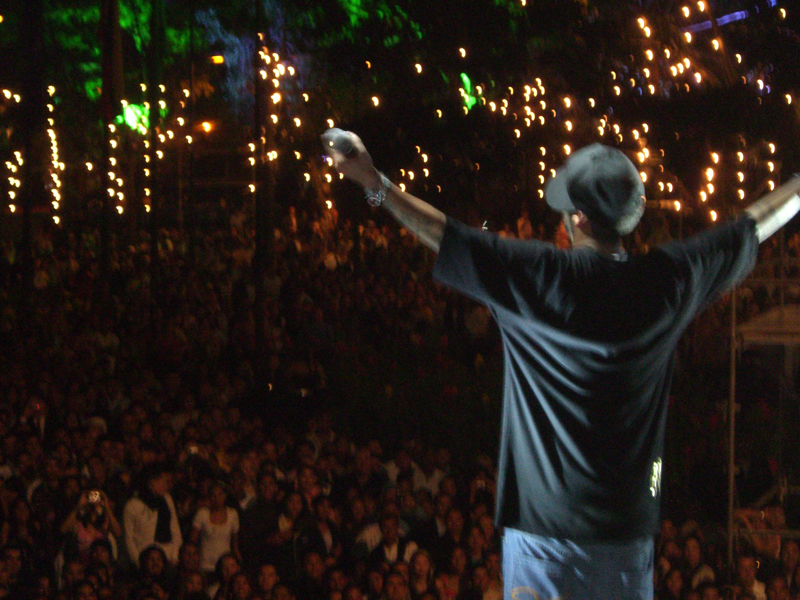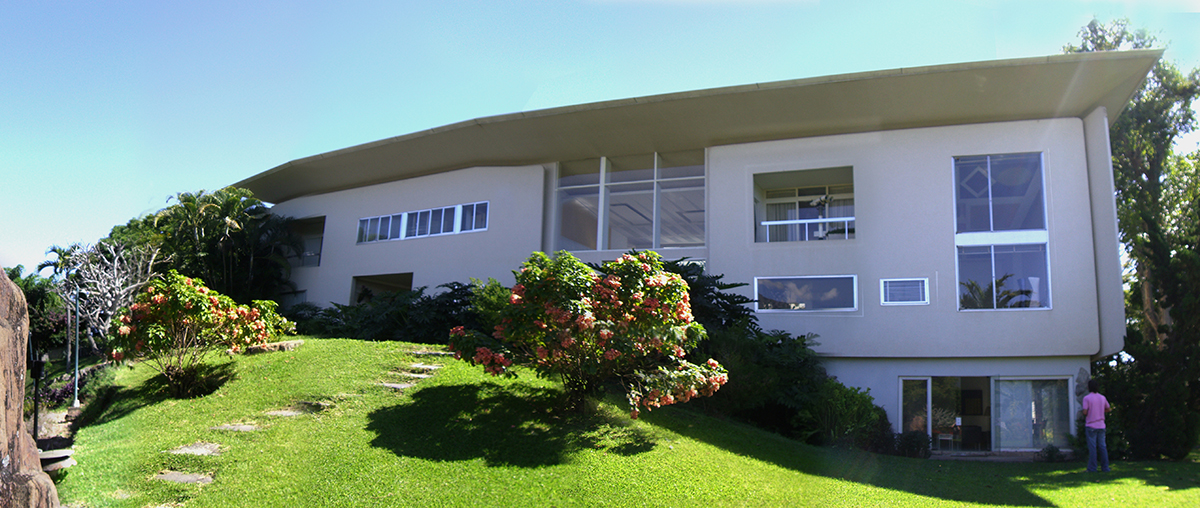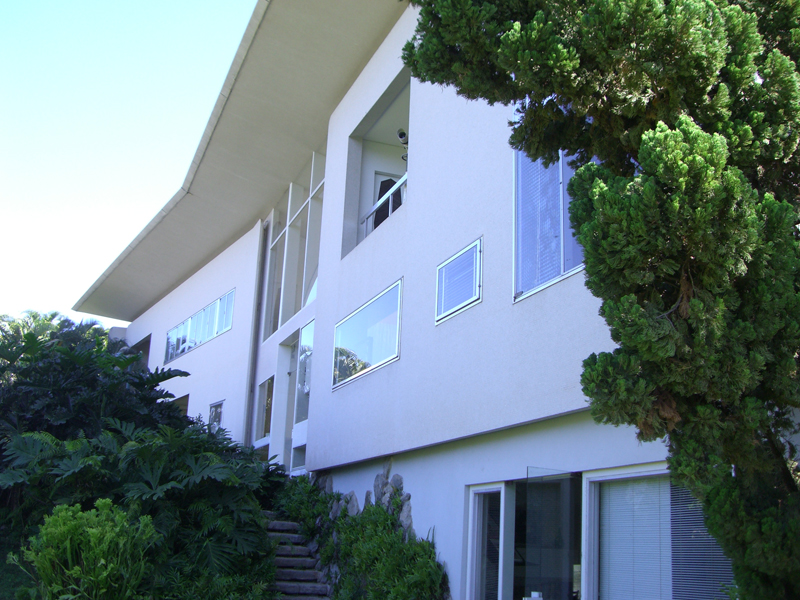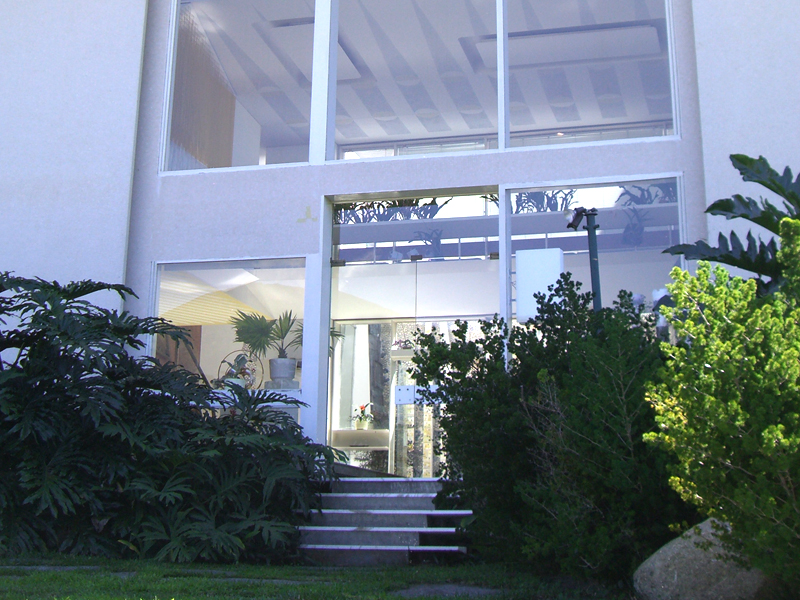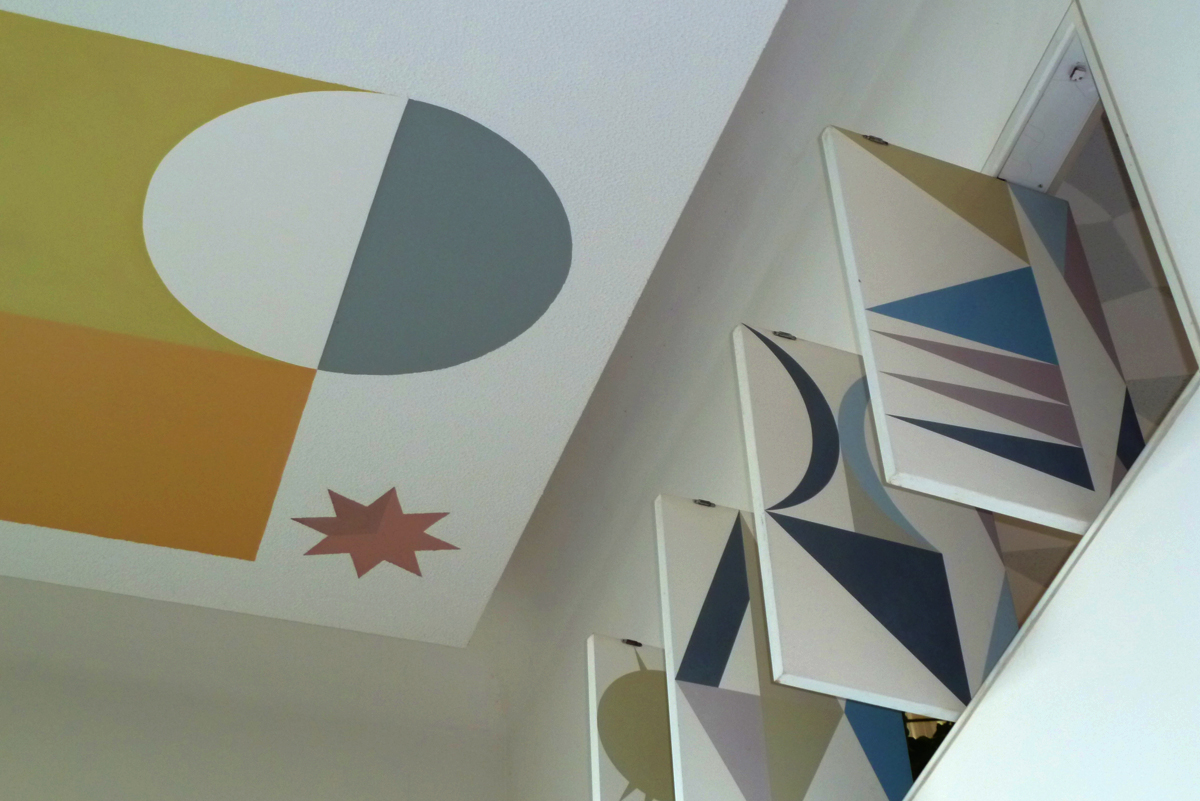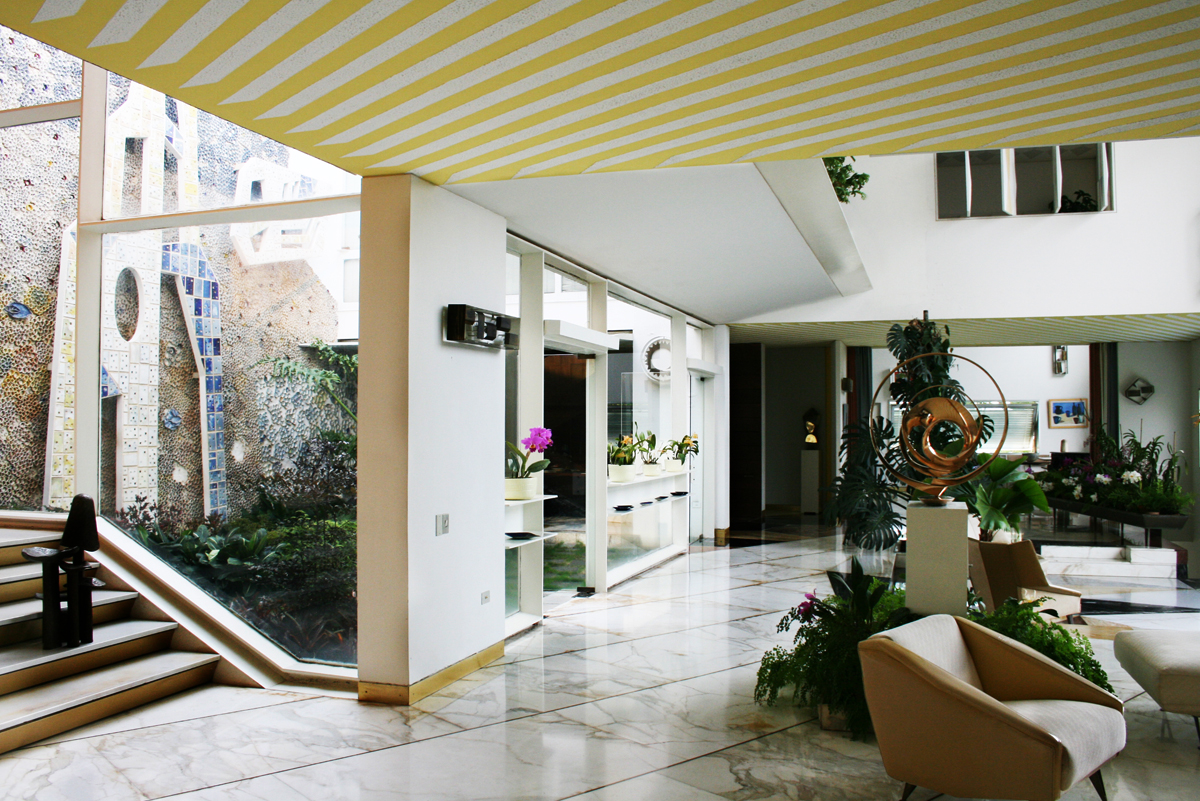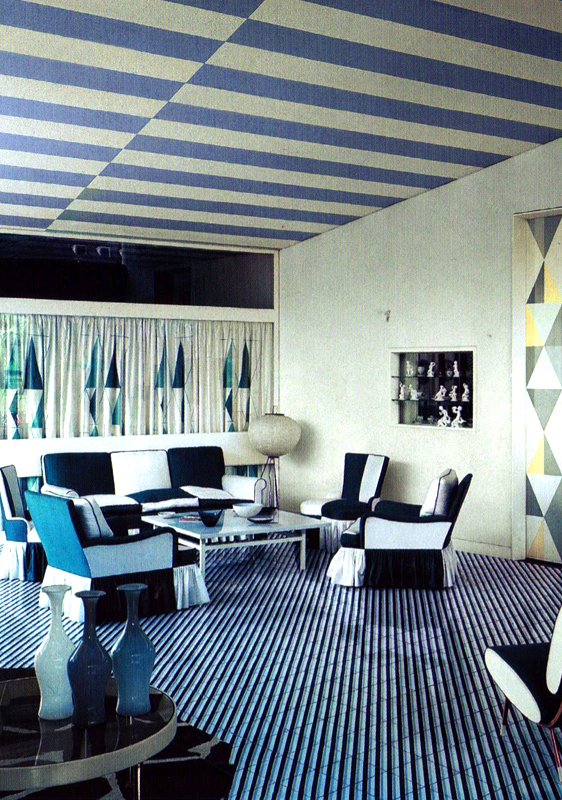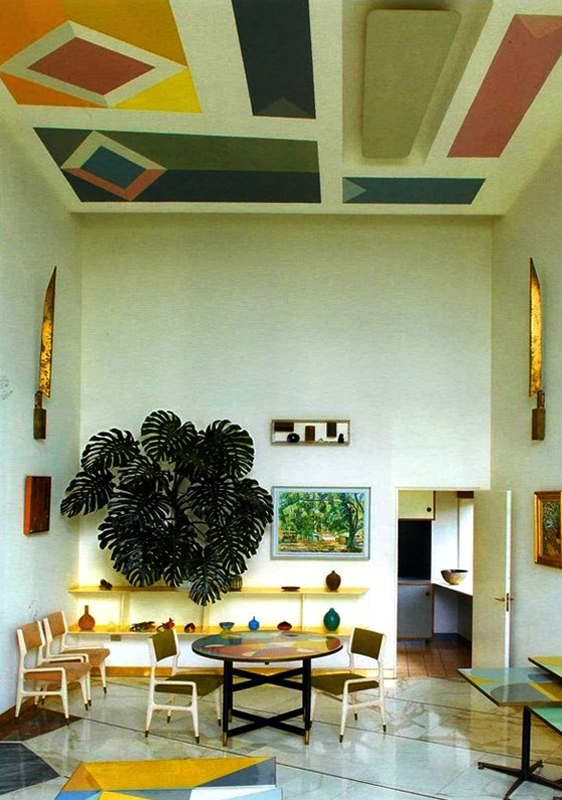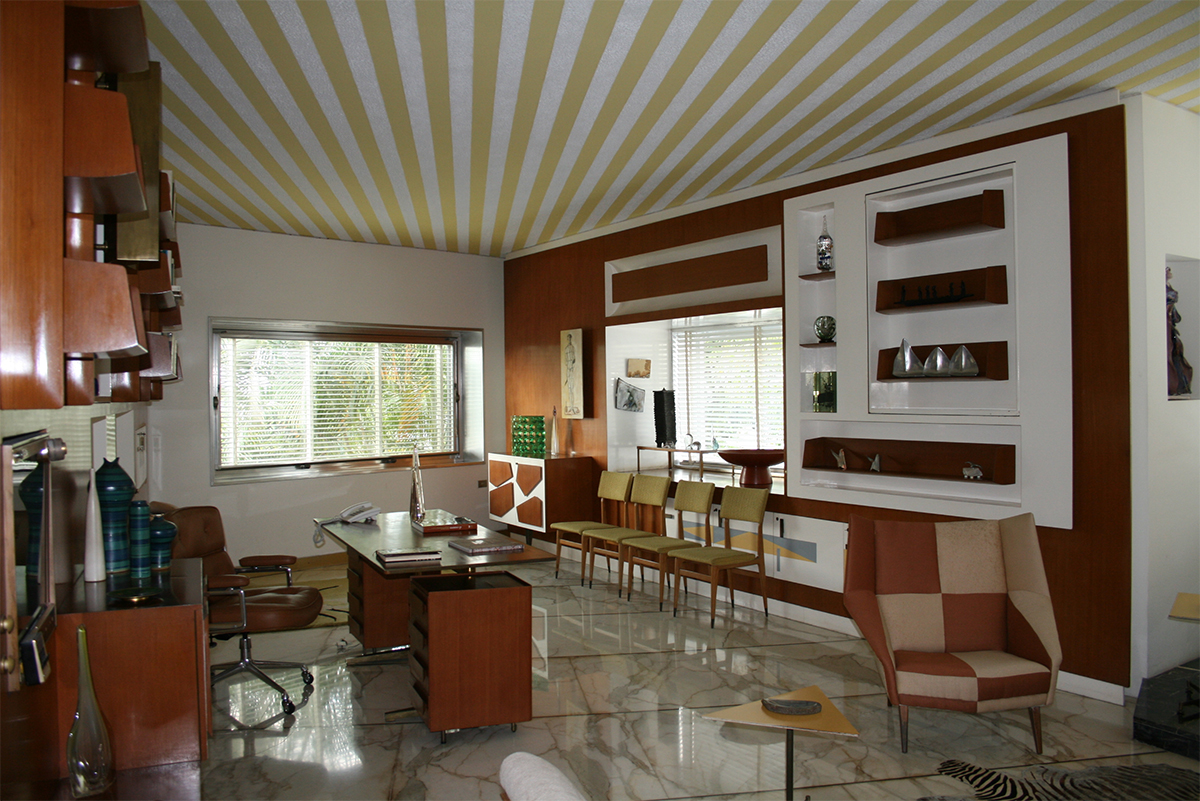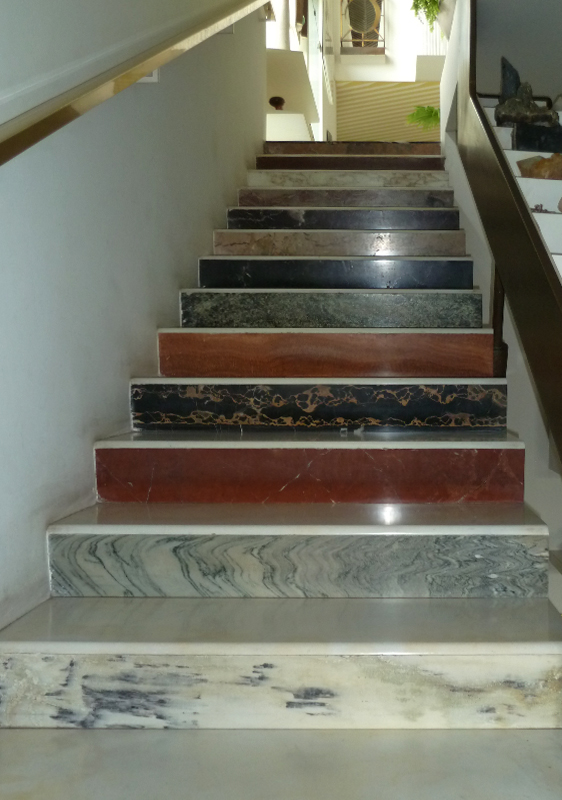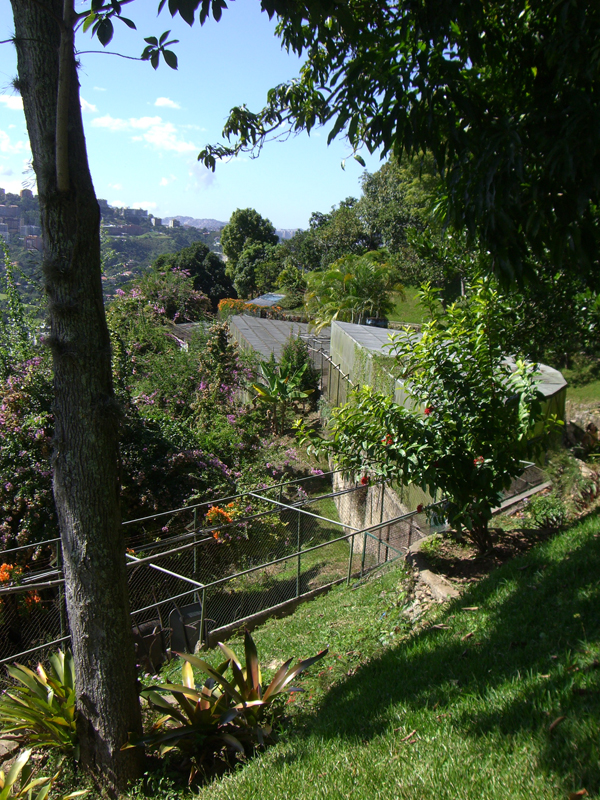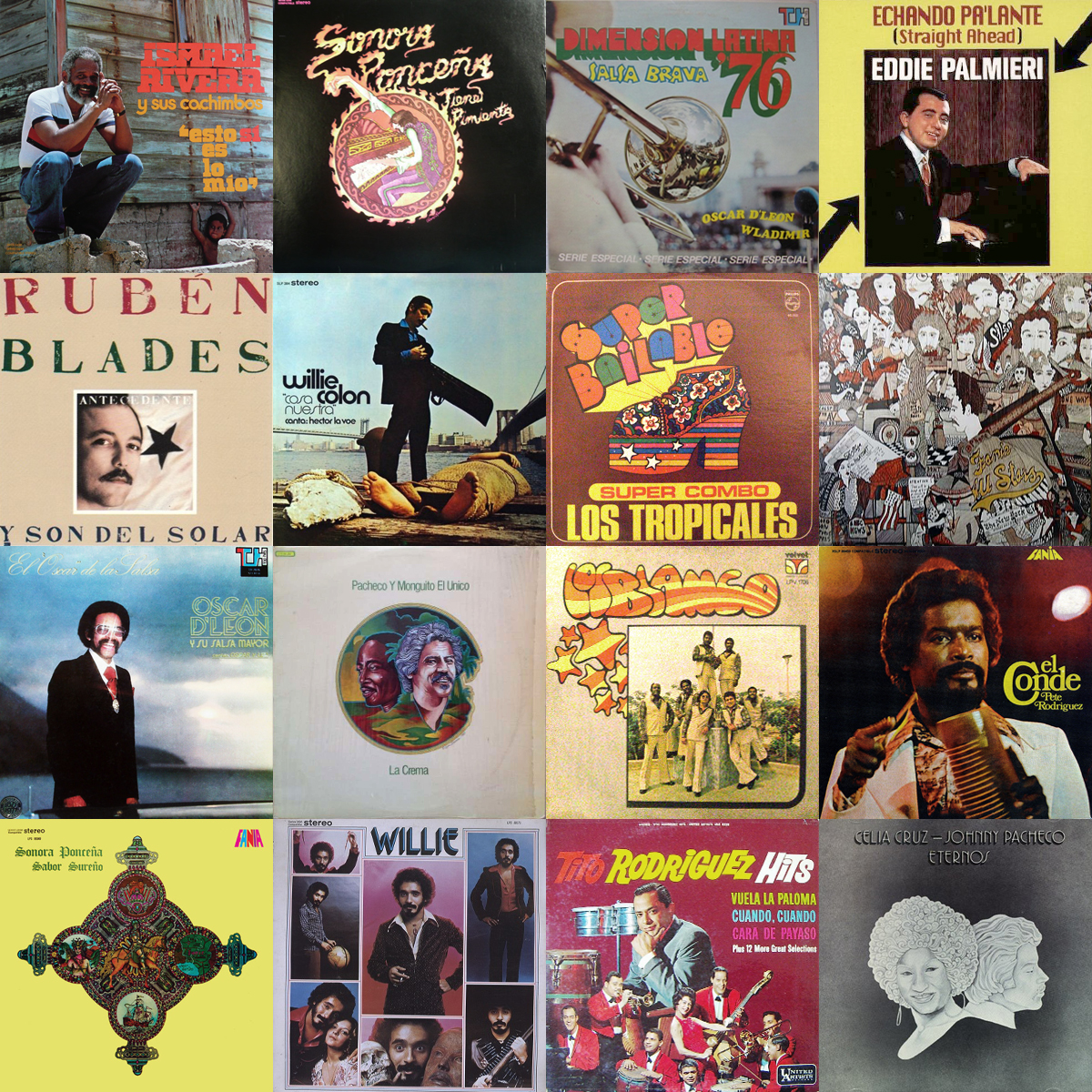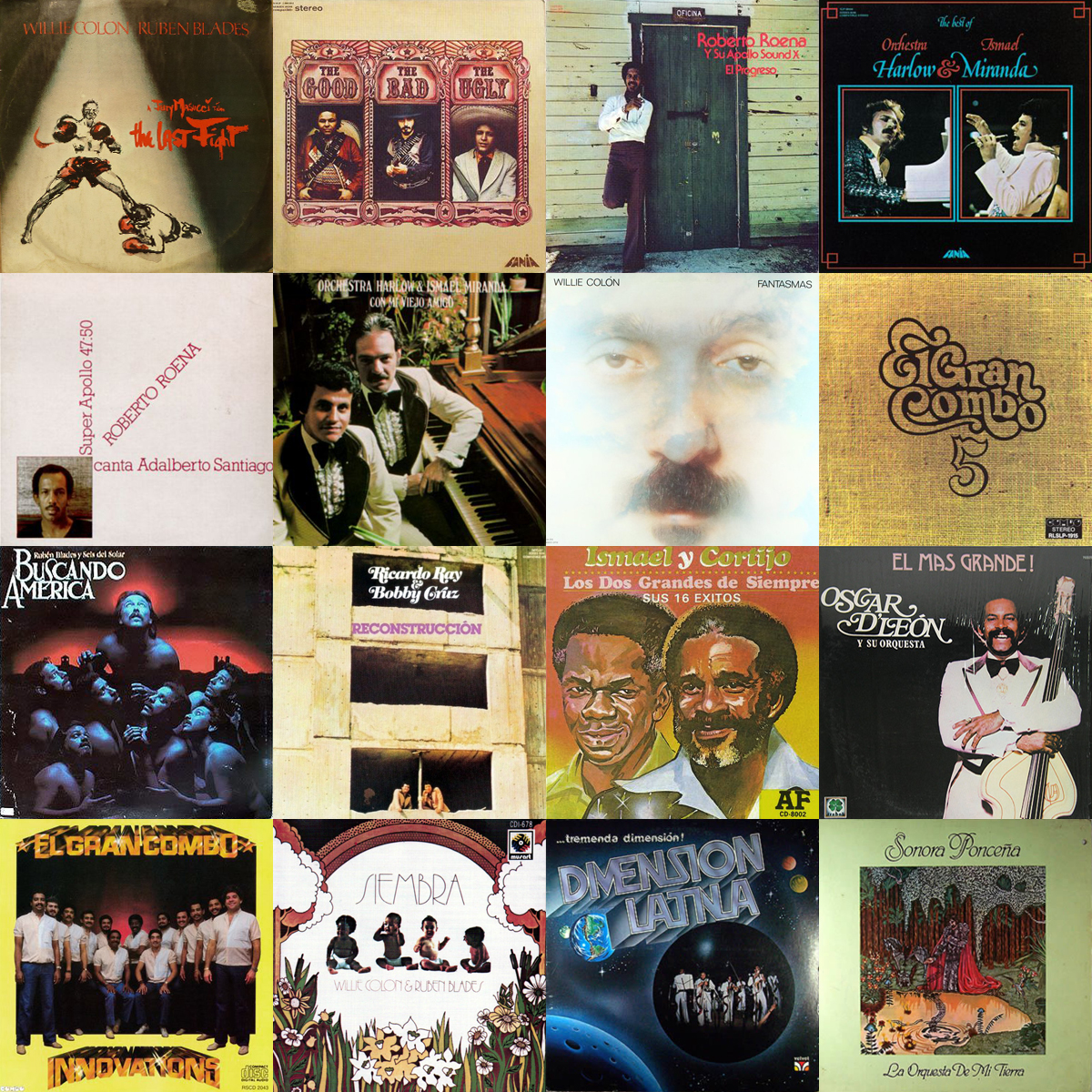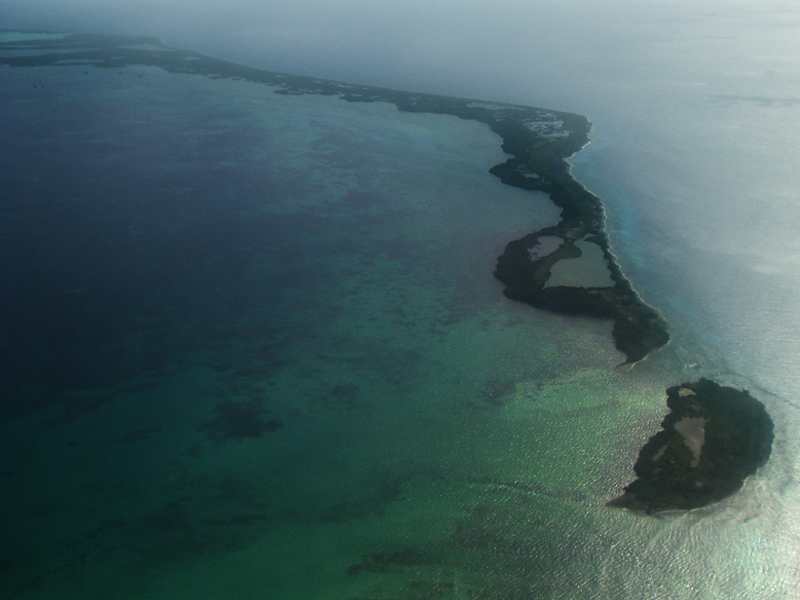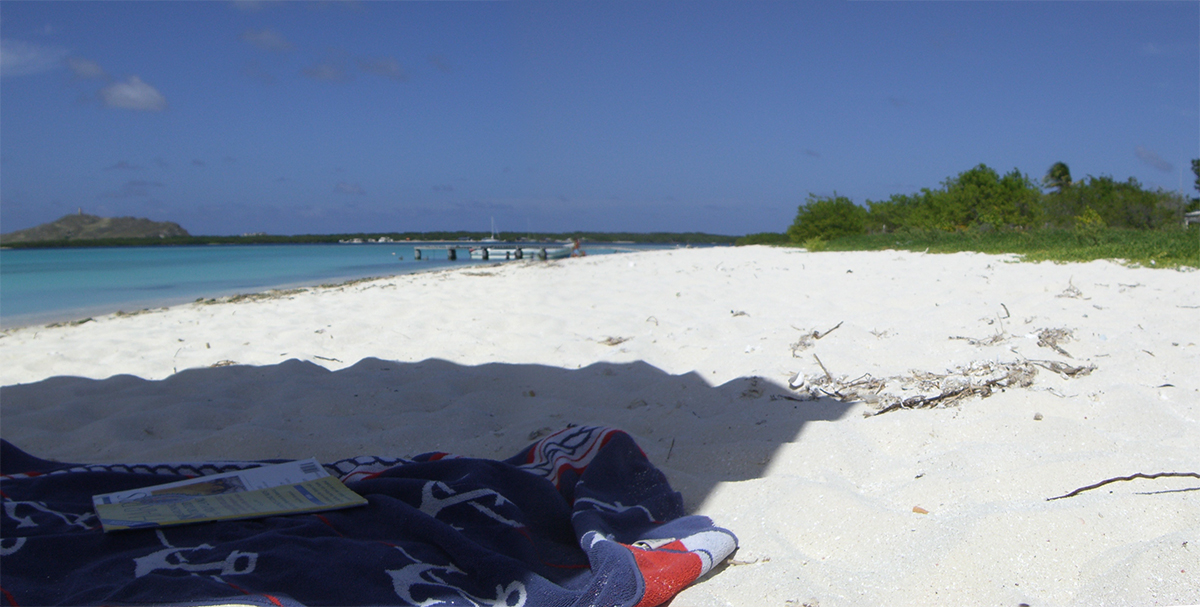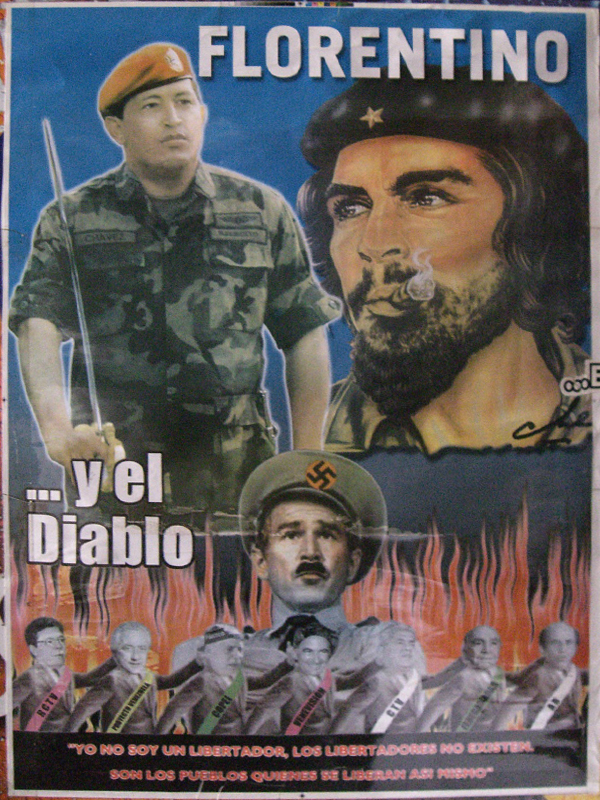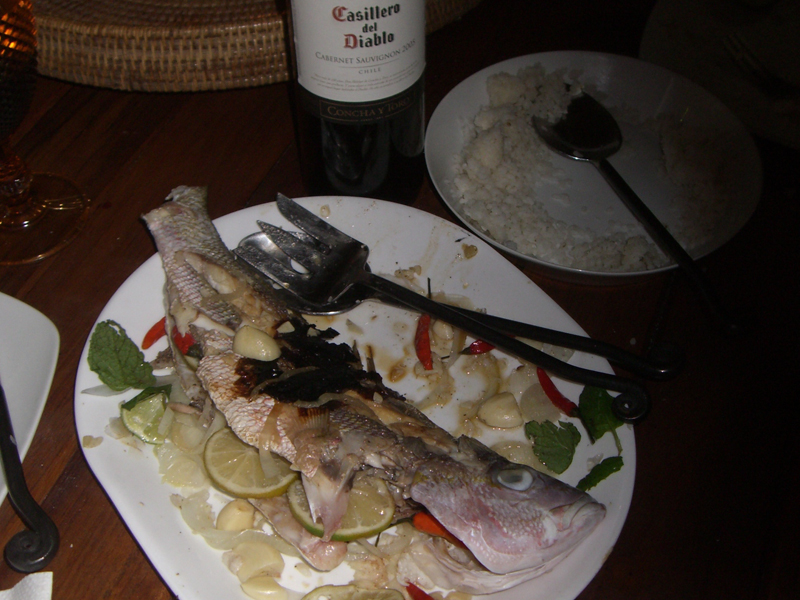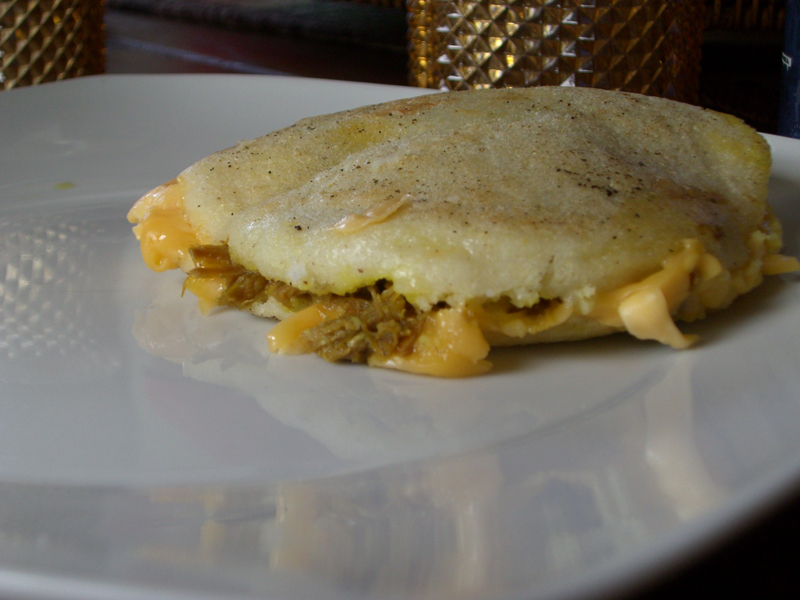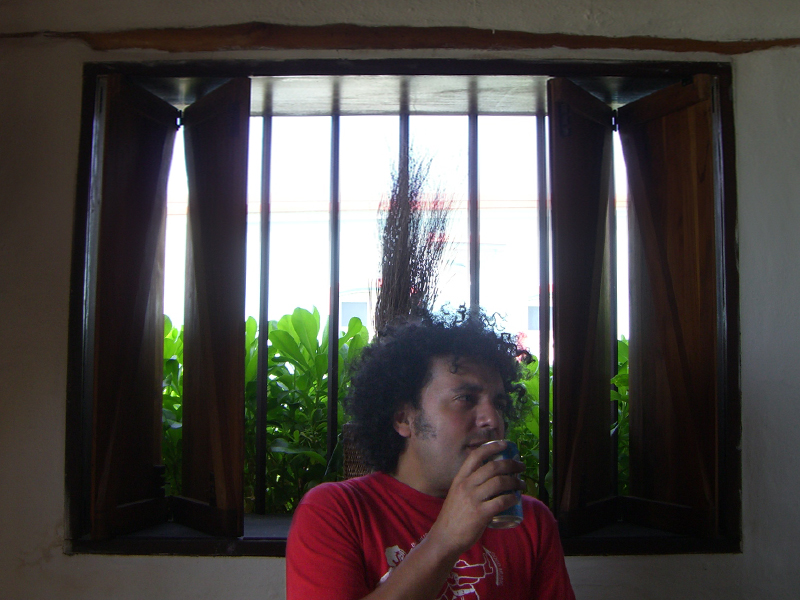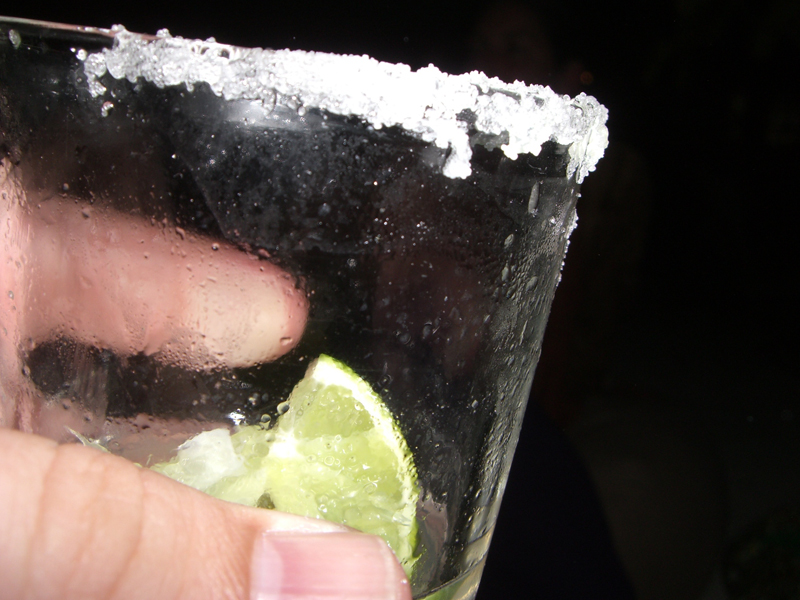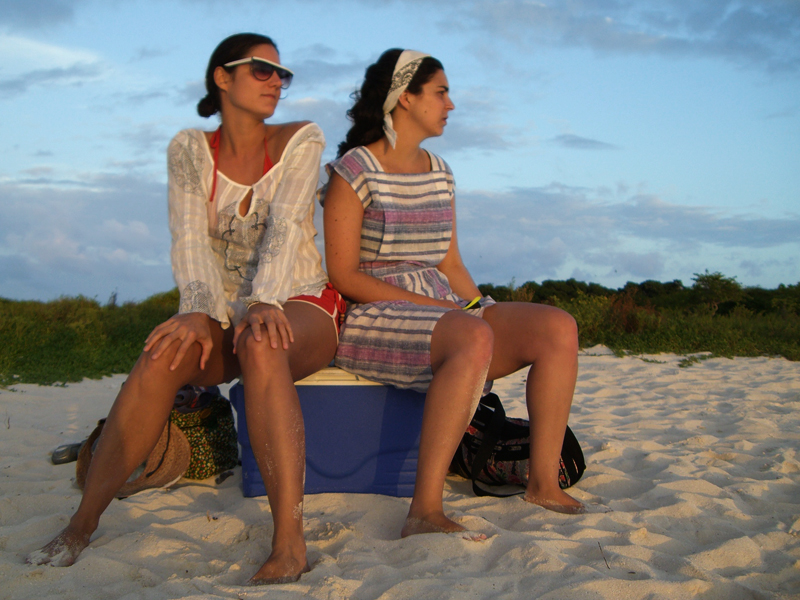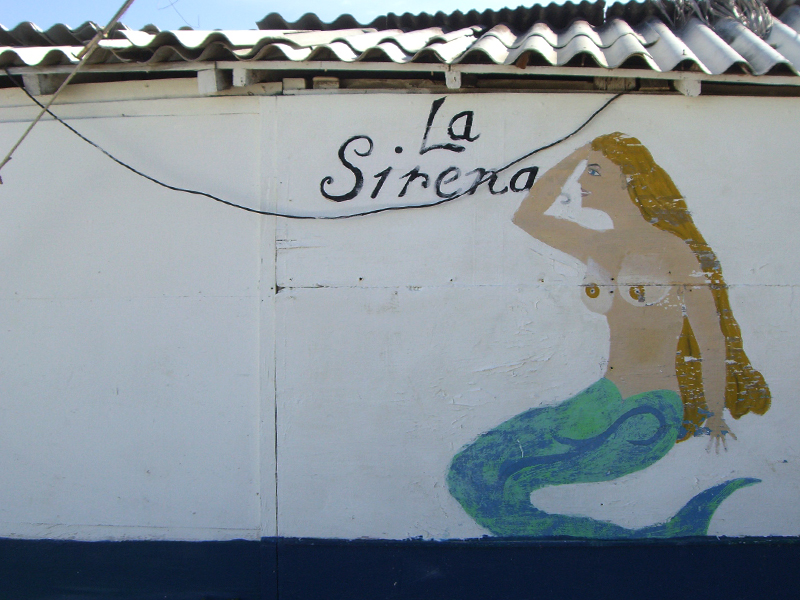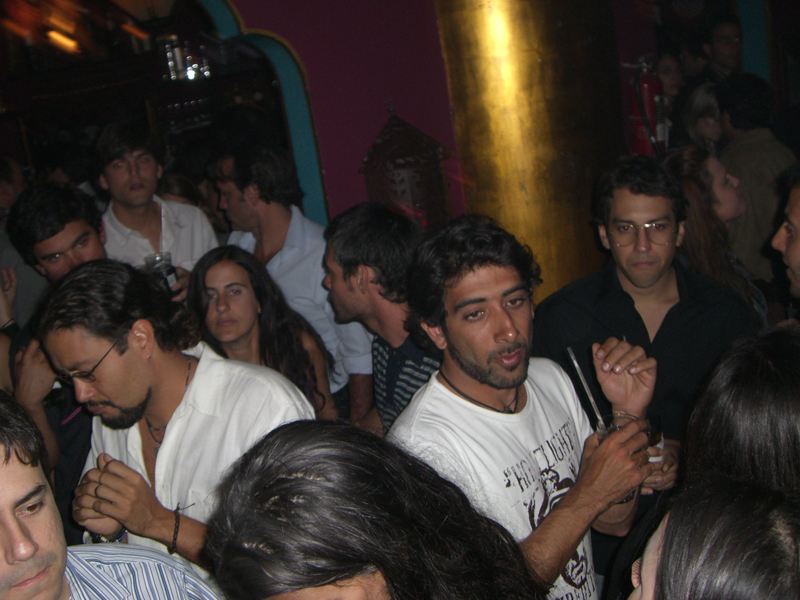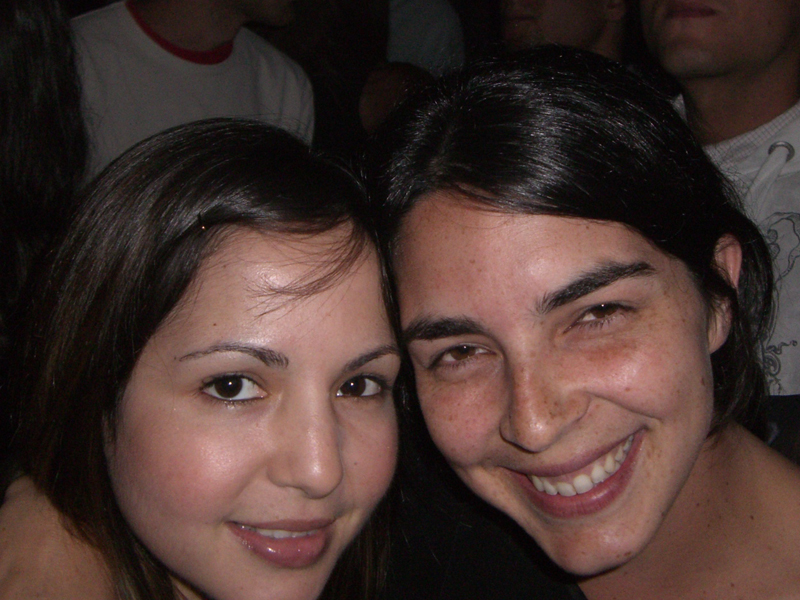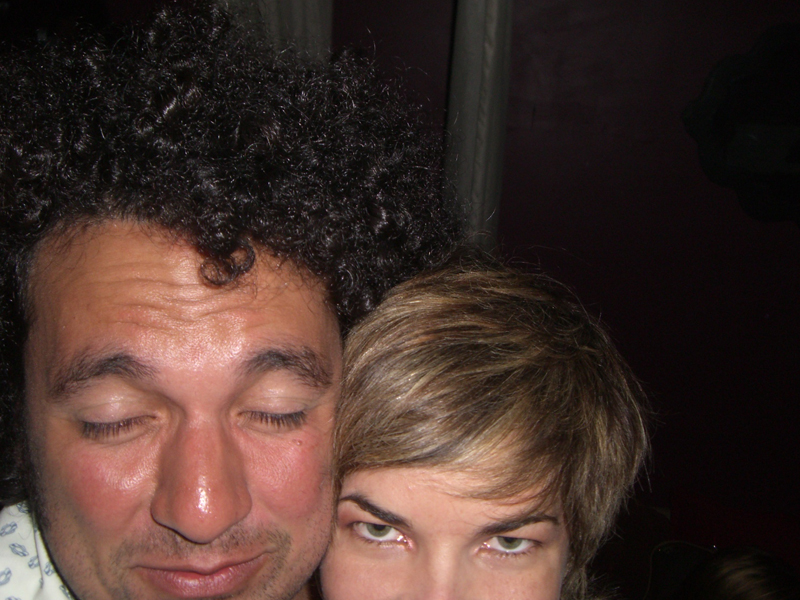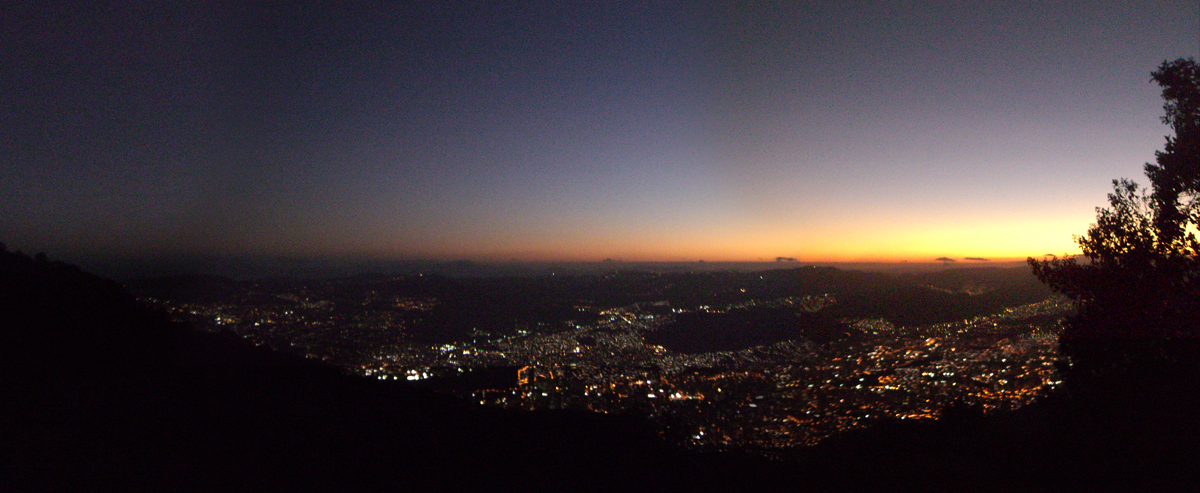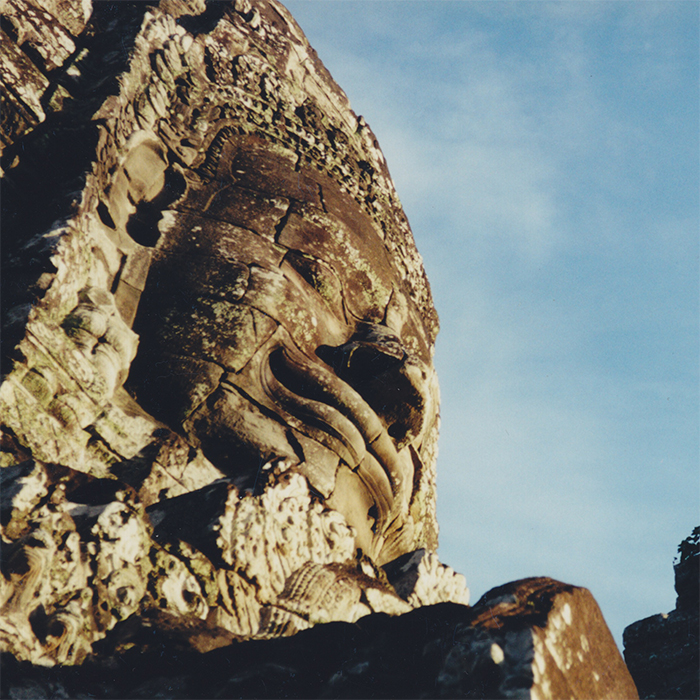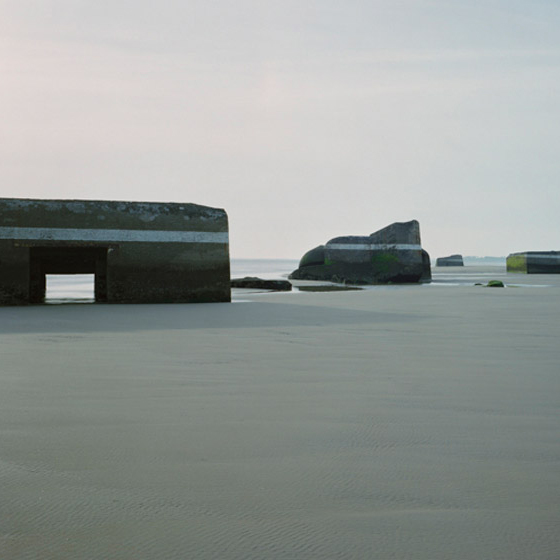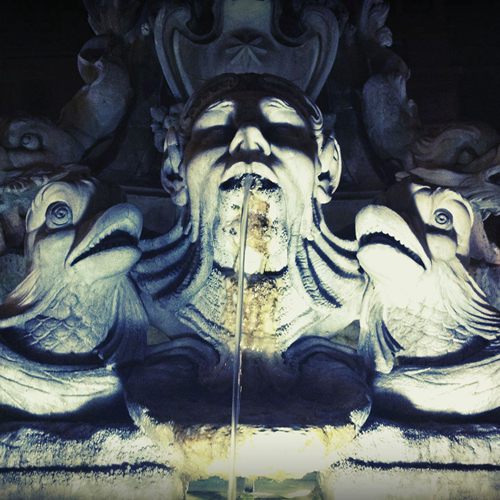VENEZUELA
Venezuela! Hot damn! Finally! This trip has been three years in the making, ever since we shared a cab home from a Miami Beach nightclub at 6am with Anabella Zubillaga and Jose Luis Pardo aka “Cheo”. We were all in town for the Winter Music Conference, a four day orgy of music and booze and no sleep and previous night’s hangovers that are aaaaaalmost gone by the time you order your first drink of the day. We had all been introduced earlier that day at a yacht party thrown by Alex Moulton, a mutual friend. Eleven hours later we ran in to each other on the street outside of a Tiga/Tiefschwarz/2ManyDJs gig and we decided to share a cab. Sensing that these two clearly fell in to the “cool people’ category, Anne invited them back to our room for a bit of wind-down and to watch the sun rise. They accepted without hesitation, and a friendship was forged in the early morning hours of South Beach.
The three years since have been filled with lots of hang outs. Restaurants, Bars. Clubs. Dinners at home. Fire Island. Etc. Somewhere along the way it became a given that we would one day accompany them to Venezuela.
“Just tell us when you want to go!” they would say.
“Just plan the trip, and we’ll come” was our response.
This buck got passed back and forth for the last few years.
The day I was leaving for Peru, I was walking through JFK making all my last minute calls. Tying up loose ends. I left Anabella a message, in no uncertain terms, declaring our intentions:
“Anabella! OK! Let’s cut the bullshit! We’re DEFINITELY coming with you guys to Venezuela for Christmas and New Years! Tell us the best way to get tickets, and we’ll make it happen!”
And that was that.
By Thanksgiving, the deal was sealed. Anabella’s sister Mariana, a travel agent in Caracas, had bought us tickets. They were bought in Venezuela so as to take advantage of the true value of the American dollar. I never understood it all, but I wouldn’t be surprised if I could get thrown into a Venezuelan prison for what went down.
The week prior to departure was extremely hectic. I had to DJ on Wednesday night. We hosted a big Christmas dinner for my entire family on Friday night. Every waking moment we were not at work was spent furiously shopping for food and Christmas gifts and Venezuelan trip supplies. We were going to be spending Christmas with both families in Caracas and we simply could not show up empty handed.
Saturday and Sunday were equally as manic. We both had to work on Saturday. Last minute shopping. Packing. I had to collect a handful of carefully chosen CDs on the off-chance I might get to DJ in Caracas. Made forty dubs of a mix to give away. Decided to at the last minute to make a brand new mix to bring as well. More dubs of that. Then, there’s the social obligations: Dinner Saturday night with Andreas and Ayo. Ayo has been dancing with a company in the South of France for the last year, so any opportunity to catch up can’t be missed. Make dubs like crazy on Sunday afternoon. Pack. Drinks in Brooklyn Sunday evening with my friend Kenny, who I haven’t seen in months. Then my boy Brian was DJing at a club in Bed Stuy that same night. Had to see him too. Ugh.
Somehow that all went off with a snag and we made it to the 6:30am plane on Monday morning. The flight was painless. Five hours to Puerto Rico and and another on hour hop over to Caracas. BOOM! Done.
CARACAS
Cheo and Anabella meet us at the airport. The heat, humidity, and ocean air wraps me in a big, fat, blanket of “relax, you’re on vacation”. Back in the tropics. Thank God.
The Caracas airport is just off the beach, while the city itself is several miles inland, just on the other side of Avila Mountain. The airport road cuts through a tunnel in the mountain and winds down through the outer slums to the valley floor – downtown Caracas.
Chavez’s cult of personality is immediately evident in numerous billboards and murals along the highway, though from all the hub-bub in the States about him being the next Sadaam Hussein, I quite honestly expected the public megalomania to be a lot worse. His legacy may be more Che and Fidel, but his image is very Mao – a chubby, eternally smiling, man of the people. Though, truth be told, the public mural pecking order seems to give Simon Bolivar a commanding lead, with Chavez a strong second, and Jesus and Che Guevara neck and neck for third place.
This building below is the Teatro Teresa Carreño. Kind of like the Lincoln center of Caracas. It looks like something straight out of the film “Logan’s Run”. The anti-government graffiti above was tagged on to a pillar of this theater. According to Cheo, my trusty translator, it is essentially saying, “Farruco (minister of culture), our culture is not your farm” – a message to the government, telling then to keep their hands off of this theater (and Caracas high culture in general, I suppose).
We are all starving, so our first priority is stopping for food. Being new arrivals, it is agreed that the most typical Venezuelan meal possible should be our first meal in Caracas. We drive to Cheo’s favorite spot, an arepa chain called Mundo Del Pollo (Chicken’s World).
As soon as we sit down, several diners from various tables make their way over to pay their respects. I am guessing this is just the tip of the iceberg. You see, Cheo is a bona fide South American rock star (he’s the guitarist for Los Amigos Invisibles). He also DJs and produces under the moniker DJ Afro. Anabella, on the other hand, is an effortlessly charismatic creative networker and social butterfly who attracts an entourage of cool, beautiful hipsters the way most people attract credit card debt. She works in television and advertising in New York City. She also seems to have a million creative interests on the side that I can’t even begin to keep track of, though I have known her to be a stylist, a costume designer, a club promoter, a photographer, a video disc jockey, and a puppeteer. Together, they are a force to be reckoned with. Hanging out with them in Manhattan is a cross between Blake Edwards’ “The Party” and that scene in Fellini’s ‘La Dolce Vita” where Nico and her entourage wander around the old villa looking for ghosts. You never known who you’ll meet, but chances are they will be interesting, and often wearing at least one item of clothing or accessory that you really wish you owned (i.e. strawberry shortcake FAT laces!).
The third guy to visit our table is a local musician. He introduces himself with a firm handshake and the words ‘Franco. Pana”. As soon as he leaves, I inquire about the greeting. “Pana”, it seems, is the Caracas version of “bro”, or “dude”. It is a colloquial evolution of the English word “partner”, which was in heavy usage by texas cowboys who saturated Caracas during the oil boom of the 1970s. My first Venezuelan slang word! Cool. I wonder if they have elaborated on “pana” the way Americans have with “bro-seph” and “bro-seephus” and “bro-tato” and “bro-ham”, Etc. We shall see.
The food is pretty plain, as Anabella had foretold. Before we came to Venezuela, she warned us about Venezuelan cuisine.
“Don’t expect much from the food” She said. “It’s meat and cheese, and that’s about it. Eat something spicy before you come, because you won’t get any of that in Venezuela”.
First course is a large, round, hunk of moist, white, cheese about two inches tall. Then a plate of sweet platanos with the same white cheese sprinkled on top. Ample cuts of grilled steak are delivered on individual cutting boards. A basket of small, fried arepas appears as well. Arepas are the moist, corn-meal bread that is the staple of much of South America. These particular ones are called “arrepitos”, because they are deep fried, small, and cute. Venezuelans seem to have an obsession with making everything cute by adding the “ito/ita” suffix on the end. My hands-down favorite example of this is that they refer to Star Wars’ R2D2 as “Arturito” – “little Arthur” – simply because of the phonetic similarities. Fucking hilarious. And it totally works too!
The next stop is Anabella’s house, to drop our bags off and get acclimated. The Zubillaga/Zuloaga compound is situated comfortably in one of the more prestigious neighborhoods in the city: “The Caracas Country Club”, in the Chacoa district. A mixture of colonial and modern mansions hide behind high walls and gated driveways. These stately homes and foreign embassies line the winding, shady streets that surround the Caracas Country Club golf course. Anabella’s house, like all others, has a name rather than an address – a practice quite common in Venezuela. The plaque on the gate reads “San Tome”.
A huge, complex fica tree fills most of the small front yard between the semi-circle driveway and the front edge of the property.
Once inside, smooth, checkerboard terrazzo floors stretch from room to room. Dark parquet wood covers the living room and dining room. Each room is beautifully furnished with ornate family heirlooms of unquestionable antiquity. Passing through the living room and dining room, you step out on to a large veranda that wraps around the side and runs the entire length of the back of the house. Tall, trimmed hedges and beautiful, tropical shade trees line the edge of the back yard, which contains a trampoline and small swimming pool. The master bedroom is on the ground floor. There are three children’s rooms upstairs. A doorway exiting the kitchen leads to the laundry and the domestic workers quarters. Nobody is home when we arrive.
What immediately captivates me most of all is the family photos. Frame after frame of the Zubillaga and Zuloaga women. Generation upon generation. I have never seen so many portraits of alluring, regal brunettes in my entire life. All those dark eyebrows and long dark hair. The entire collection brings to bear a matriarchal mystique that demands your respect and awe. I went nuts snapping photos of every detail I could.
This was my first glimpse in to the family history of my good friend Anabella – a history I had thus far only speculated about. Despite her aristocratic legacy, Anabella is very down to earth and an extremely cool human being. I fear my voyeuristic ogling of her family roots is bordering on embarrassing and/or just plain bad form, but she is, of course, cool with it.
The historical facts I have pieced together so far are this: Both her father’s family (Zubillaga) and her mother’s family (Zuloaga) come from the Basque town of San Sebastian. They began emigrating to Venezuela as early as 1680. The Zubillagas established a prosperous trading company around 1720. Since then, the family history on both sides is littered with industry giants and legendary politicians. These figures come to light during random conversations or simply as we drive through the city.
We drive past the Caracas power plant and Anabella off-handedly remarks “Oh yeah…my great grandfather was the guy that brought electricity to all of Venezuela”.
When I ask why in the hell the clocks here are half hour off the rest of the planet, she tells me it was her great uncle (or some such relative) that wrote the law getting Venezuela IN synch with the world. Chavez, however, recently changed it back, OUT of synch – for what reason, nobody can quite figure out.
Anabella’s sister Mariana comes home. This is the same sister that arranged the entire trip for us. She is the eldest of the three sisters. The middle sis, Ana Maria, is vacationing in South Africa, and will be for the duration of our visit. Mariana seems extremely sweet. She speaks English with virtually no accent, the result of going to boarding school in the Northeast, no doubt. Mariana has two children, but we will not meet them until later in the evening.
We hang around the house for a bit longer, decompressing and being briefed on the details of the impressive itinerary that has been prepared for the four of us. In short, this is the plan: Caracas, Canaima National park, The Orinoco River Delta, back to Caracas, and finally, Los Roques. Not too shabby.
Anabella’s mom, Ana Maria, shows up for the formal introduction. She seems lovely, and exudes a grace and confidence that leaves no doubt about the matriarchal presence so evident in the family photos. She runs a non-profit foundation that provides wheel chairs to people in need. Her English is also very good.
A list of family telephone numbers in the kitchen indicates that there is an unmistakable trend of incorporating the name “Ana” in to as many Zuloaga names as possible. Let me break it down for you:
And these Anas are only the ones I know about…
Cheo takes us for a quick drive around the city before sundown. The air is filled with thunderous BOOMS! – fireworks exploding in every neighborhood, all over town. We stop by Annabella’s Aunt Emiliana’s house to meet two of her cousins, Carlos and Emiliana. We also pick up some Venezuelan landing gear to ease our transition to this new longitude and latitude. Our two hosts, of course, have thought of everything.
We drive around the city a bit more before heading home to prepare for Christmas dinner. We meet Anabella’s father John. They pronounce his name just like the American “John”, since it is a western name (no Y for J thing). He is also called Johnson and Joncito and a million other nicknames. He wears a wide, welcoming grin, but seems a bit reluctant to speak English. Anabella scolds him for his reserve. His English is far superior to my Spanish, I can assure you.
There is no rush getting ready for dinner whatsoever. From what I can tell, evenings in Caracas run very late. Christmas dinner at Cheo’s family house is not until ten or eleven, then another family gathering at Anabella’s great aunt’s after that, then maybe some clubbing for us after that. So, basically, we’re still on NYC time, which suits me just fine.
Cheo’s family apartment is in the Southeastern part of the city in a neighborhood called “El Cafetal”. His mom, Egilda, his father, Jose Luis, and his sister, Geicce, greet us upon our arrival.
Cheo’s mom is adorable – as cute as the tiniest little figurine that you find once you have opened each layer of those Russian egg-people dolls. Matrioshka nesting dolls I think they call them. You know the ones I mean. Like that, but cuter.
Jose Luis the elder gave us a warm, smiling welcome. They both seem immensely proud of Cheo and ecstatic to have him back home. Geicce is an eye-surgeon. She has a very pleasant demeanor and seems constantly on the verge of a giggle. She is the most fluent in English, so she leads the conversation.
I gotta say, I really feel like such a loser in these situations. Everyone speaking English for your benefit. This happens with Anabella and Cheo in New York all the time. I’m often in a room full of Venezuelans and Colombians all speaking English, simply out of courtesy to the Amweicans in the room. Ugh.
This is the apartment where Cheo grew up. Just like Anabella’s house, it is such a treat to get a glimpse of somebody’s real childhood bedroom. They’re like those rooms you seen in museums, when they re-create some famous person’s studio. Perfectly preserved time capsules. Cheo’s room is a frozen moment of his youth. Stacks of CDs and cassettes. Crates of salsa records. Old keyboards. Samplers. Drum machines. Sports trophies.
Like Anabella, Cheo lived at home until he moved to the States. Almost all Venezuelans live at home until they marry or move away. It’s a very Catholic country. Besides, living in an apartment in Caracas is considered somewhat dangerous for single people. Especially women.
I must admit, I am curious to see just how dangerous Caracas is. A guy I used to work with, who was born here, seemed to be terrified of the place.
“Dude!” he would say “They don’t just rob you in Caracas. They rob you…..then they STAB you….just for the fun of it!”.
He tried many times to convince me that a visit to Caracas would result in my immediate stabbing. Step off the plane? BOOM! Knife right in the gut! This always sounded a tad alarmist to me. Cheo has long insisted that Caracas is dangerous, but quite manageable if you keep your wits about you. I suspected as much. I live in Brooklyn. I ain’t scared of shit.
After getting acquainted over a few glasses of wine, it is time to open presents. They are opened one at a time, with much fanfare. None of them are wrapped. Anne and I give out some Jacques Torres chocolates. Cheo’s Dad gives us a bottle of Venezuelan eggnog. Geicce gives us two sets of towels embroidered with the logos of the two opposing Caracas baseball teams: The Leones and The Magallanes.
“Like your Yankees and Mets” she explains.
“The team you like, this towel is for the face. The other? The ASS!”
Brilliant!
We don’t sit down to dinner until almost midnight. The meal includes roast pork, platanos, chicken salad, another moist, white cheese (more like salty brie), and a cornmeal tamale filed with chicken and olives.
We finish around 1am and make a hasty exit. Next stop is the Christmas eve gathering of the Zuloaga clan, taking place at the penthouse abode of Anabella’s great aunt.
On the way there, we pass a huge tree growing right in the middle of the street. They simply paved around it.
“What the hell is that tree doing in the middle of the road?” I ask.
“It’s nothing” Cheo assures me “That happens all the time. Roads in Caracas….man….they crazy!”
I also ask him why he is running every single traffic light.
“That’s just how we drive here!” he explains. “You just slow down a little bit….you don’t see a car….you GO!”
This is true. Every intersection is a negotiation. Sometimes there is an honor system in play of ‘who arrived first’. Other times, it is simply about who is least willing to slow down. Anabella adds that this practice has become more and more standard as car-jackings increased throughout the city. I do notice that all the doors are locked. All windows rolled up. Clearly, they are always aware of the danger.
An armed guard lets us in to the lobby of the great aunt’s apartment building. We wait in the elevator until called up from above.
The elevator opens in to a sprawling carpeted apartment with so much discarded Christmas wrapping paper on the floor, you’d think you were at the going-out-of-business sale of a 14th St. appliance store. Anabella’s cousin, Carlos, dressed in a rather sharp looking suit, leads us through the apartment, up to the rooftop terrace.
It is 1:30am and the open-air, penthouse terrace is in full swing. It is full of elegantly dressed revelers of all ages. I really feel like I am walking in to one of those fabulous Central Park West parties you see in Woody Allen movies. It is all a bit surreal. A man in a white tuxedo is serving drinks behind a small bar. Everyone knows him by his first name. A long-time employee, no doubt. He keeps his eyes downward and says almost nothing. The fancy elder ladies hold court on the couches, tending to weary grandchildren and engaging in civil conversation. The men stand by the bar, drinking whiskey on the rocks. The 35 and under crowd gravitates towards the open terrace at the back, smoking cigarettes and chatting loudly. Wait staff maneuver silently through the crowd, picking up empty glasses. An elaborate manger scene is sandwiched between a table of booze and a long banquet array of silver trays. We have just missed dinner, apparently. Caracas is in a fireworks frenzy of earth-shaking explosions every few seconds. Nobody seems to notice.
Anabella warned us prior to our arrival that the two American visitors were to be the evening’s entertainment. We are the very first of their Gringo friends to visit, and they get few American tourists, so we are a rare species indeed. We can barely get past the bar because, one by one, everyone is stepping forward to welcome us. All in attendance are fluent in English, many with almost no accent whatsoever. It seems as though the entire party switched to English the moment we entered the room. As facilitating as this will undoubtedly be to our participation in congenial conversation, it has made me keenly aware that the entertainment has begun, and that entertainment is US! This is not to imply that we feel ill-treated. On the contrary, every member of Anabella’s family is extremely gracious and welcoming.
Both Annabella’s mother and father are in attendance. Her father, John, intercepts me by the bar for a scotch on the rocks. Scotch is just about the only drink that men consume here, from what I can tell.
John is an odd bird, for sure. He is always in a good mood, he doesn’t say a whole lot, and he always has a big, wide grin on his face that makes one think something about you is immensely amusing to him, but he has no intention of telling you what it is. He is very cool with me, and doing his best to ease my transition in to Venezuelan culture.
We chat with Anabella’s uncle Tommy. He moved to Caracas from Prague just after World War 2, marrying her great aunt. He tells me he started the first ad agency in Venezuela.
“What brought you to Venezuela?” I ask
“The women, of course!” he says, with a sly smile.
This is a wise man.
I wander in and out of several conversations. Almost everyone, it seems, has been educated and/or lived in in the United States at some point in their lives. Boarding school. College. Whatever. Most seem to know New York City rather well. And the women….what can I say? each woman I meet seems more beautiful than the last. Good genes, these Basques.
Ana Helena, a second cousin, lives in New York City on Riverside Drive with her husband. She attends Columbia. He is a sportswriter covering Venezuelan major league baseball players in the States.
Baseball, to my surprise, is the number one sport in Venezuela.
“Not soccer?” I ask. Silly me, I thought South America = Soccer.
Cheo explains that there is a distinct lack of enthusiasm for the national soccer team. This is because of the division they are in. In order to get to the world cup, they must defeat both Argentina and Brasil – a virtually impossible feat.
Cheo tells me “They once scored a single goal against Brasil and the whole country partied for a week!”
Hilarious.
I am eager to discuss Chavez, but it seems pretty apparent that most of Anabella’s family is either weary of him, angry at him, embarrassed by him, or all three. Pretty much exactly how everyone I know feels about George Bush.
The most I get out of anyone is a succinct statement from Carlos: “We are paying the price for years of decadence”.
The party starts to break up around 2:30am. Every single family member comes over to say goodnight. Venezuelans, from what I can tell being here less than 24 hours, are extremely polite. Social etiquette seems ingrained in every person we meet. We leave the party with two of Anabella’s gorgeous cousins, Emiliana and Ana Helena, heading for “a rock n roll bar” where some friends of Cheo’s will be playing live.
The rock n roll club is crowded. It’s about 3am. We drink “Polar” beer and attempt light conversation with the cousins over the DJ’s loud, 90s rock soundtrack. Nirvana. Spin Doctors. Rancid. Some Latin rock. Crowd is very East Village-looking. The live music hasn’t started yet. I go backstage to smoke a joint with the band. They are nice enough guys. They introduce themselves, following their name with “pana”, just as the guy did earlier at lunch. It seems hanging with Cheo has rendered me everyone’s pana. I expected nothing less.
We drink more beers and wait for the band. They finally get on about 5:15am. They are a popular Caracas rock band, but tonight they are doing a special Christmas-Eve set, performing their usual rock songs in a more traditional bachata style. Bachata is the Latin guitar-based music that originated in the Dominican Republic in the 60s. It has plodding, mid-tempo beat that can almost sound like some kind of slow polka if you’re not paying attention. It is immensely popular all over Latin and South America, though it never did much for a gringo like me. Basically, the band is having a bit of fun and trying to change shit up for the holidays.
They open with a bachata version of Iron Maiden’s “The Number of the Beast”. Kick ASS. After that, they do their own songs, but the crowd seems a bit bored. The girls are weary of the place, so we only stay for about five songs before calling it a night.
As we drive back through the Country Club neighborhood in the pre-dawn light, there are still several huge parties going in. Streets lined with cars. Stumbling socialites. Reggaeton blasting from sprawling, gated estates. We drop Emiliana off and finally get to bed around 7am. So far, this is my kind of town.
DIA DOS
We all sleep late and head downstairs around noon to find a wonderful brunch already prepared and waiting for us on the patio. Traditional chicken/corn/potato soup called chupe, some bread, ham, and more white cheese.
“Meat and cheese, and that’s about it”. So far, Anabella was right.
After brunch we open Christmas gifts with the immediate family. More Jacques Torres chocolates from us for her folks. Anne gave Anabella this cool book of art made entirely in the Excel program. I gave Cheo a book of 12″ record covers and five CDs: The Bad Brains first album, “Machine Gun Etiquette” by The Damned, and three classic Jeff Beck albums from the 70s.
Afterwards we run some errands and pack lighter bags for our five-day excursion to Canaima and the Orinoco River Delta. We have a 5:30pm flight to the southern City of Ciudad Bolivar, where we will spend the night and take an early morning connecting flight to Canaima.
CIUDAD BOLIVAR
The flight was about an hour on a small Rutaca airliner. We were met at the tiny Ciudad Bolivar airport by the tour agent, Ruben. He didn’t seem to own a car, but he brought two taxis to pick us up. A family of three was already sitting in the two-door Jeep. Rueben and a driver filled the front seat of the old, beaten-up, American muscle car coated in rust. Some kind of Chevy from the 70s I’m guessing. The driver opens the trunk by slowly picking the lock with a screwdriver. Hilarious.
Ciudad Bolivar is the capital of the state of Bolivar, which occupies the south-eastern chunk of Venezuela. It sits on the banks of the Orinoco river, which originates in Colombia and snakes north-eastward through Venezuela to the Atlantic Ocean. It is best known for the modern Angostura suspension bridge, built in 1967. It is hot and humid.
Our driver tells us it was once a nice place to live, but has been recently over-run by Colombian drug traffickers who use the river to ferry drugs from Colombia, through Venezuela, out to the Ocean and beyond. He volunteers a rather fucked up story about his brother, the chief of Police. His brother recently replaced the last chief of police, who resigned in terror after he orchestrated a big drug bust that got his entire family killed in retaliation. Soon after the driver’s brother reluctantly took the job, a fat Colombian man strolled in to headquarters, sat on the desk, and told him how things were gonna go.
“The city is yours, but the river belongs to me” the fat man declared “Don’t fuck with me, and we won’t have a problem”
He then proceeded to rattle of the addresses of the police chief’s entire family in Caracas, just in case he was thinking about calling his bluff. Damn.
We drop our bags off at a quaint posada (bed and breakfast) in the hills overlooking the city. We quickly get another taxi in to town to get some grub. As soon as we get in the car, the driver puts in a DVD that plays on the small flatscreen TV mounted on his dashboard. It’s a Backstreet Boys video. That song that goes “Every-baaaaahhh-day………Rock yo baaaaaahhhh-day!!!” The next video is by Dido.
“She is my girlfriend!” he excitedly announces.
Whatever hombre. This must be the DVD he puts in for Americans or something.
He takes to us to “calle del hambre”, the “street of the hungry” – a long strip of open air restaurants and food carts, interrupted here and there by makeshift tarp-covered stands selling boot;leg CDs and DVDs.
“Every city in Venezuela has a calle del hambre” Cheo explains. What a great name for a street.
It’s Christmas night and the calle del hambre is jumping. The streets and parking lots are a mess of gridlock traffic, as every local with a pickup truck or muscle car is cruising the block, blasting reggaeton, bachata, and merengue. We sit at one of the stands and eat grilled meat sandwiches on a huge hot dog bun. A cross between a Philly cheese steak and a hot dog, I guess. There are crunchy, super-thin french fries under the meat. The whole thing is smothered in ketchup and mustard and it’s fucking delicious.
I start to notice a few locals recognizing Cheo, but they keep a respectful distance. I was wondering what the level of rock stardom would really be out here in the sticks. So far it seems quite manageable.
We stroll around for a bit after dinner, checking out the bootleg DVDs. They put four or five movies on each DVD. They usually group these movies by genre. I notice one that has five Nazi movies for the price of one. Cinco para uno! American History X and a bunch of other skinhead jail movies. Fun!
Being wary of hailing a cab off the street, we call the Backstreet Boys guy to come pick us up, so we can get some sleep before our early morning flight to Canaima.
DIA TRES
The plane ride to Canaima is cool. A tiny 6 seater Cesna. The pilot keeps slamming the dashboard with his fist, because it is falling in to his lap a bit. He is speaking Spanish and another language that sounds a bit like Chinese. Apparently it is the local indigenous dialect, Pemón. We fly over vast, flat forests, lakes, and plains, with few roads and only an occasional farm house in sight. Apparently you cannot drive to Canaima, as there is no road. That sounds crazy to me. I guess the rivers are the roads way out here.
We see the Canaima lagoon from above as we fly in. A sight to behold indeed. A long, winding wall of incredibly powerful, roaring waterfalls feed the lagoon, creating hazy clouds of mist roving over the water.
Canaima is a giant national park about the size of Holland. A small town on the edge of a giant fresh water lagoon is the base of all tourist operations in the region. It is best known for Salto Angel (Angel Falls), and the giant table-top mountains called tepuis (teh-pooheys) that define the landscape. These tepuis are believed to be the oldest rock formations on the planet; remnants of the great land mass that once joined Africa and South America two billion years ago (!). They tend to be isolated, rather than clustered like mountains, which has allowed the ecosystems on the top to remain practically unchanged since pre-historic times. Thus they are host to all sorts of weird flora and fauna found nowhere else. I was dying to hike to the top of Ayuantepui, from which angel falls originates, but this takes ten days. Instead we will take a canoe up the Rio Carrao and view the falls from below, as so many tourists have done before us.
Once we land, we wait under the grass hut airport terminal for our guide to show up. There are about forty people – tourists and locals – hanging around. Women with babies on their laps are selling beads. A guide from another tour group asks Cheo if she can take a picture with him. Several people in the airport seem to recognize Cheo. He obliges without hesitation.
Our guide eventually emerges from a trail in the woods off to the side of the runway. We pick up our gear and follow him, heading towards the posada where we are to stay. I figure the guide will have some kind of big, gnarly, jungle jeep to drive us there. He does not. We walk. I find it hilarious that the main access to the airport is a dirt footpath through the woods. No taxi. No bus. No monorail. No “train to the plane”. Oh well.
Our posada is only about a quarter mile away. It looks more like a small, one story motel. It has thatch-covered walkways between white, concrete buildings. The posts supporting these thatched rooftops are oddly adorned with spiky palm leaves, jutting perpendicularly out in to the walkway. Many of these palm leaves are precisely at eye level, positioned perfectly for stabbing you square in the retina. Without my sunglasses I would surely be blind. What a fucking strange way to decorate.
We drop our our big bags in our assigned rooms and pack a small bag for the overnight excursion to Angel Falls. We are now in the tropics, only a few hours from the equator. It is hot and humid and it feels great. Within the hour we rejoin Angel, our guide, and a few others: three Italians and four Germans.
We take a five minute jeep ride around the lagoon and up past the waterfalls. From here we will to get in one long canoe and head upriver.
The first thing you notice is the water. It is dark orange. “Like a cuba libre” our guide jokes. This is the result of tannin in the soil.
As we travel upstream in to the jungle, the second thing you notice is that there are almost no birds. The occasional vulture, and a few, small, rust-colored birds, but that’s about it. Angel explains that the tannin in the soil prevents fruit trees from growing, which basically means no animals.
An entire rainforest jungle with no animals. Something kinda creepy about that.
Our guide, Angel, really seems to know his shit. He talks to each group fluently in their own language. He says he speaks eight languages, including Japanese. His Italian sounds a lot like Spanish. Actually, I think maybe it is the Venezuelan Spanish that sounds a lot like Italian. They speak with a similar bouncy rhythm here. Angel is a small, compact fellow with dark chocolate skin. His mouth, eyes, and nose seem a bit too small for his already small head. He totally reminds me of the oompa loompas in the Johnny Depp version of “Willy Wonka” (side note: they had one Indian midget play every single oompa loompa in that entire film. Apparently the midget community was outraged that they had only employed one single midget, duplicating him over and over. Outraged! The world has gone mad.).
Angel speaks very, very clearly and repeats everything he says at least four times. I guess dealing with dumb-ass tourists will do that to a person.
“All you need is four things: bathing suit, sun block, mosquito repellant, and a camera”. He says this more like twelve times, counting on his four fingers each time, for each item. His delivery was that of a kindergarten teacher speaking to slow kids.
HEAD UP RIVER
The journey up the river is beautiful. There is nothing else around. No houses of any kind. Just the occasional long boat passing us in the other direction. For being the number one natural landmark in all of Venezuela, it sure is quiet.
Why I love jungles so much, I have no idea. I suppose I feel as far from civilization as I can possibly get. It reminds me that the entire earth is not concrete and cellphones and sky scrapers and Photoshop. There is a whole jungle ahead of me that couldn’t care less about those things. This is comforting.
We get out of the boat after about an hour, because the rapids are going to be too strong to navigate with such a full load. The driver will take the boat through the rapids and meet us in 30 minutes, on the other side of a wide stretch of savannah. Everyone is glad to be getting out of the boat, having run out of positions that will keep our butts from falling asleep. the Italians seem particularly relieved, as they can now smoke, which they are inclined to do whenever possible.
The savannah is peaceful. A wide open plain that looks like something straight out of Africa. Tall, dry grass, white sand, and the occasional solitary, twisted, stunted tree offering the least amount of shade possible. And still, no birds. Just little yellow and green butterflies. One forgets how seldom one gets to stand in truly wide open space. Ayuantepui is now closer, the tallest reaches of the mountain obscured by low, misty clouds. You really feel like you are walking in to the wild.
Four indian boys appear on the horizon and pass by silently.
Angel stops to overturn a large termite nest.
“The indians eat these for protein” he says. “they also make medicine with them. It eases breathing”
He lets his hand be over-run by about 100 termites and holds it up for us to smell and/or eat. His termite-covered hand actually does smell like Ben Gay.
The Italians step forward and start popping termites in their mouth like sunflower seeds.
“Crunchy!”
The four of us stand and watch with low-grade revulsion. Anabella, embarrassed that she is being shown up by a bunch of tourists, steps forward and quickly eats a few. The grimace on her face is priceless. She did it for Venezuelan pride, dammit! The United States got no such gesture this day.
Once across the savannah, we get back in the boat for an additional three hour stretch.
As soon as we leave the beach, Angel hands our lunches to us. Two stale hot dog buns with a paper-thin slice of ham and a paper-thin slice of cheese and no condiments whatsoever. It is like eating a big, long, wad of cotton. There should be a universal law banning sandwiches without mayonnaise or mustard or some god damned condiment. I mean, NOBODY likes a bone-dry sandwich. Nobody.
The further up river we go, the closer we are to Ayuantepui. It is a huge, complex mesa, with seemingly countless outcroppings. As we come to various clearings, we think we’re seeing another tepui, but really it is all the same mountain. The river just winds in and around each canyon, following the contours. Sometimes the mountain lies ahead of you. Sometimes on your right. Sometimes behind you. It’s very disorientating. When we reach a wide stretch of river, we can see a great, long chunk of it. And this is only one little piece. Crazy.
We reach our destination just as the sun is dropping behind the mountain. Our camp is situated at a fork in the river, directly in front of Angel Falls. Angel tells us the morning hike through the jungle will take about an hour. The camp is pretty bare bones: a 40×20 foot, corrugated tin shelter about 100 feet from the riverbank. The broken up remnants of stairs, destroyed by a high tide, block the entrance. Previous travelers have worn a trail that circumvents the rubble in order to get in to the shelter.
About twenty hammocks covered in mosquito nets hang from the ceiling. There are two small bathrooms in a shack off to the side, a long picnic table, and a tiny kitchen with a wood burning stove. There is no electricity and no running water. I am starting to understand why this place is so devoid of tourists. It is relatively unaccommodating and most decidedly unapologetic. Don’t feel like roughing it? Don’t bother coming. I suppose I am thankful for this. Were this America, there would be a parking lot full of SUVs and mobile homes right at the base of the falls.
After claiming two hammocks for Brooklyn, we head back down to the boat. Angel offers to ferry us to the other side of the river, so we can get a better view of the falls and take some photos before sundown. It was starting to get cloudy.
I wander in the shallow water as some of the others come down to the river bank. I was looking for fish. Instead, much to my surprise, I found chicken. Four chickens to be exact. They were just floating there, bobbing up and down in one foot of water, between two wet logs.
“I think I just found tonight’s dinner” I announced.
Everyone thinks I am joking.
I am not.
The river was clearly the de-facto fridge as well.
“Pollo de Rio!” Cheo exclaims.
Hilarious.
Everyone has a look on their face that says “I REALLY wish you hadn’t told me about that”.
After taking a few photos and being ferried back to our side, we hang out on the river bank as the sun goes down and wait for our river-chicken to be cooked. Two local Indians are the kitchen crew. They have split open the birds and impaled them on four sticks suspended over a makeshift bonfire. They smell good already.
Either that river-chicken is really delicious, or we are all just really hungry. Maybe it’s the cube libre brining process. Either way, there are no complaints.
The whole day of travel: first in the tiny plane, then sitting in the hot sun in that cramped canoe, has left us rather exhausted. We gobble down the pollo de rio by candlelight and hit the hammocks immediately afterward.
“The trick to sleeping in the hammock is to… ‘vvvvvvvttt’…sleep on an angle”.
Angel says this about six times, making a little sideways motion with his index and middle finger when he made the ‘vvvvvttt’ sound. And he was right. Sleeping diagonally does make a world of difference.
It rains through most of the night. The sound of the rain and the rushing river is beautifully soothing, This is juxtaposed with the intense stench of urine emanating from the out house each time the wind shifts. The mosquito net is a bit claustrophobic, but I don’t dare expose myself to whatever creepy crawlies may be lurking on the other side. No way.
DIA CUATRO
We wake up at 5:15am for the one hour group hike to the falls. The sun is just coming up. Breakfast is black coffee and some stale crackers. Angel prepares us for the hike.
“you’re gonna wear your hiking boots, as there is mud, a lot of root, and it’s a little bit uphill”.
He said this eight times in a span of ten minutes, counting on his fingers and making a little uphill gesture with his palm each time. Anabella and I roll our eyes each time.
The hike through the rainforest is beautiful, but a bit eerie. Being in a rainforest that is completely silent is just…I don’t know…weird. The only sign of life is mosquitos and the occasional spider web. Other than that, it can all be a hologram for all I know. The complexity of the roots on the jungle floor is pretty damn cool. Countless roots. All intertwined. As if all the trees are part of one giant organism.
ANGEL FALLS
We reach the falls in just under an hour. We are the only people there. Angel Falls, the tallest waterfall on the planet, most famous natural landmark in all of Venezuela, and there are only twelve of us. Amazing.
As expected, it is indeed pretty awesome. And I mean awesome in the sense that the word was intended. Makes you realize just how overused the word is. Awesome pizza and awesome giant jungle waterfall are two radically different entities, this I can attest to.
We sit on a large rock overlooking the valley below the falls and gaze in silence at the natural wonder before us. The water falls so far that is just an amorphous, misty cloud by the time it reaches the bottom. I try several times to visually pick out one watery clump at the top, and follow it with my eye, down to the bottom, but it just dissipates in to the mass and I lose track.
I really want to hike up to the base, but Angel says this as close as are allowed.
“Sometimes we swim in one of the pools below” he says “but today, the current is too strong. You get wash over the rocks. No good today”.
Fair enough.
We stay up there for about a half hour, taking photos and trying to imprint the majesty of the place on our brains. Trying to soak it all in. Record it all. How many giant waterfalls does it take to balance the thousands of hours I sit in front of a computer screen? I have no idea, but it’s probably more than one. Still, this is a big waterfall, so maybe it counts for, like, a hundred regular waterfalls. Maybe more.
SALTO SAPO
The trip down stream is much faster, moving with the current. We reach Canaima lagoon around mid-day. We have a quick lunch and meet up with the group again. We head over to Salto Sapo (Frog Falls), which is through a patch of forest on the far side of Canaima Lagoon.
Salto Sapo is a particularly intense section of the Canaima Lagoon falls that is unique in one aspect: the cliff face it tumbles over is carved out in such a way that you can walk behind the falls, from one side to the other. There is a wet rope for you to hold on to. Angel tells us they lost a German there last year. He let go of the rope, the water took him, and he was never seen again. I’ve walked behind a few waterfalls in my day. No big deal. Or so I think.
Walking underneath Salto Sapo is totally fucking BANANAS. The water overhead is so massive, and moving so fast, it creates this deafening roar and this insanely chaotic wind and water frenzy. It’s like walking in to a blizzard. Naked. You can’t hear, as the water is louder than a jet airplane. Your can’t see, as your eyes are totally closed, because it feels like someone is spraying a gigantic fire hose right in your face, at point blank range, from all directions. It’s soaking wet, you’re walking on slippery rocks, and its freezing cold. It is utter mayhem for about thirty seconds. Right around the middle, when the wind and water and noise reaches this ridiculously violent pandemonium, you think about the lost German.
“HOLY SHIT! I could fucking DIE in here!”
The intensity of it all simply makes you want to scream out loud at the top of your lungs, which is exactly what I do. It is unbelievably exhilarating. Unbelievably thrilling. And its just freakin’ water! Who knew?
That was worth 5000 computer hours right there. No question.
After climbing to the top side of the falls, we go back underneath again. I could do it twenty times. I tell Anabella if the only two things I had done in Venezuela were eat an Arepito and walk through that waterfall, I could go home happy. It is that fun.
After dinner we search all over the town for a place to buy booze that will take credit cards. The whole ATM limit thing is becoming kind of a burden, because Cheo is taking out cash for both of us.
We finally find a guy who knows a guy who knows the guy that takes credit cards.
“Find the Spaniard! He can help you” says the dude.
“El Español” was an older, Spanish expatriate who runs the general store in Canaima. He is a loud, colorful fellow. He wears a large beaded necklace proudly bearing his name “CLAUDIO GUERRA”. It looks more like an olympic medal ribbon. When we walk in, he is congratulating a local fifteen-year-old girl for not “opening her legs for the first German who smiles at her, then being left with a baby like every other high school girl in town” He is saying this quite loudly. The girl seems rather embarrassed.
We spend the evening on the beach by the lagoon, drinking a bottle of local rum and swapping stories. I tell my 8th grade communist story – a classic of mine that I pull out whenever I feel like talking for a really really long time. Cheo tells us the story of how he single-handedly started the Acid Jazz scene in Venezuela, after visiting a Giant Step party in New York City in the early 90s. This was comforting, as I was a big fan of those parties and a regular attendee. There’s this weird camaraderie that club heads like myself get when when we discover a person that was at the same club, in the same room, decades ago – grooving to the same music, hitting on the same girls, Etc. You immediately feel like they understand you a bit better than most people, even if this was fifteen years ago. It’s like finding out somebody has the exact same favorite novel as you. You immediately like them more. Perhaps this explains why Cheo and I bonded so quickly when we first met.
DAVID BYRNE: DREAM MAKER
Cheo also tells us the story of how Los Amigos Invisibles got discovered by David Byrne (singer for the Talking Heads) – a story I will now relate to you, to the best of my recollection (Disclaimer: the bottle of rum was almost empty by this point, so my details may be a bit fuzzy).
Way back when, feeling like they were treading water in Caracas, Los Amigos Invisibles made a pact to save all their money for a whole year, to make one big trip to New York City. Like all rock-n-rollers, they dreamed of making it big.
Finally, after a year of saving every penny, they had enough money to make the trip. The band used every connection they could dig up, and, miraculously, they managed to book four NYC shows in one week. This was their shot. Their one chance. It was all or nothing.
Once in New York, they played their asses off at each and every gig. Lo and behold, the fickle, jaded, brutally-hard-to-please NY crowd actually responded. They were a hit! And on top of that, to their surprise, they met a whole gang of Venezuelan transplants who eagerly attended multiple shows.
One of these Venezuelan transplants just happened to work the counter at Tower Records on Broadway. Cheo, always conscious of a potential connection, made sure not to lose this particular phone number.
When they got back to Caracas, they now had this big buzz of “the band that went to American and got famous”. This overnight mythology garnered them a whole new level of respect in their home town. A local sound engineer came forward and offered to record their album for free, hoping to get paid on the back end. They made a record and pressed up a few hundred copies. On the outside chance that someday, someway, this could possibly pay off, Cheo sent ten measly copies to their recently acquired New York friend at Tower Records. This person did, in fact, get those measly ten copies on to the shelves at Tower. Now all that needed to happen was somebody had to buy one of them, discover the band, and decide to make them famous.
As luck would have it, David Byrne waltzed in to Tower one day and just happened to buy one of these measly ten copies. He was impressed. He immediately called the band and told them he wanted to produce their next record. The first time he called and said “this is David Byrne in New York”, Cheo thought it was one of his friends playing a prank, and he hung up the phone. Lucky for him, Byrne was persistent, and they were soon signed to his record label. The rest, as they say, is history.
What a great fucking story.
DIA SEIS
The next morning we take the same rickety old plane back to Ciudad Bolivar. A rather gruff and surly cab driver meets us at the airport for our 2.5 hour drive to Tucupita, where we are to rendezvous with another guide, another tour group, another boat, to make our way to the Orinoco River Delta.
The road is flat and bone straight, running through wide open fields peppered with low brush and cacti. The driver says about two words the entire trip. He is averaging about 100mph and playing chicken with every car in the oncoming lane. He may be 60, but I have no doubt this dude is mean, and I’m thinking he could most definitely kick my ass if he so desired. For some reason, I always “size up” old guys: “Can this old bastard kick MY ass?” I wonder. Sadly, the speculative answer is often “yes”. I should have been in more fights as a kid. Would have toughened me up. Oh well. One of these days I’m gonna take one of these geezers down. Then we’ll see who’s the tough guy around here.
The driver plays some weird classic rock CD, on repeat, for the entire trip. As soon as we get in the car, it starts out with “the… road… is… lah-uh-ong…” – “He Ain’t Heavy, He’s My Brother” By The Hollies. The freakin’ gringo CD, no doubt. Do we look that lame? Next was “Goodbye Yellow Brick Road”. There was also a Cat Stevens song. It must have been the top 10 from 1972 or something. We listen to it three or four times in a row. Ugh.
When we finally get to Tucupita, Anabella scolds the cab driver like he was a ten-year-old, for driving so fast. She is a piece of work. The grumpy cab driver just glares at her in silence. He knows not to mess with a feisty Zubillaga from Caracas.
ORINOCO RIVER DELTA
We meet our new river guide, Ruben, in Tucupita. Tucupita is a crappy little town on the Orinoco River. This is the same river that we came across earlier in Ciudad Bolivar – the river that originates in Colombia and winds up in the Atlantic.
The Orinoco River Delta is about 10,000 square miles of rivers, streams, channels, wetlands, and jungle.
The boat is waiting for us at the water’s edge, near a public park. There is no dock. Just a dirty river bank. The public park is littered with trash and indigenous homeless people. Four other tourists are waiting there as well. A Polish couple who live in Windsor, Canada, and a young Burning Man-esque Spanish couple, coincidentally from the same Basque town Anabella’s ancestors originate from (San Sebastian). Greetings are exchanged, a disastrous bathroom run is made, and we quickly jump in the boat, heading northeastward towards the Atlantic coast.
This boat is far superior to the cramped canoe of Canaima. These seats have a plywood back! And you can sit three across. The lap of luxury. The motor is bigger too. A Yamaha “Enduro”. The Rolling Stones’ “Satisfaction” is running through my head, from that water skiing scene in Apocalypse Now. You know the one.
We motor down river at a quick pace for about two hours to reach our camp, “Ubanoco”, around 4pm. It is owned by A frenchman, and there are two groups of French tourists. The site consists of two buildings with about 8 rooms in each, and a large thatch-covered dining hall. Mosquito nets hang over each single bed. There are stray dogs and cats everywhere. They look like they haven’t eaten in months. Chickens abound. There is also a gigantic pig rummaging around with six baby piglets in tow.
It’s only been three days since Caracas, and I am already used to the “no hot water” thing. The rest of the crew seems to be avoiding showers, opting for the ol’ “birdbath splash” technique.
The funniest thing about our room is the layout. The toilet is positioned in such a way so that anyone coming to the front door can look directly at you while you’re dropping the kids off at the pool. It is absurd. I check Cheo’s room, and there’s is exactly the same. What genius put up these walls and thought “THE TOILET IS IN FULL VIEW OF EVERY PASSERBY! PERFECTO!” I honestly don’t get it.
After dropping off our bags, Ruben, our guide, throws us back in the boat for a quick tour of some small river channels before it gets dark. He tells us that we won’t be spending a night in hammocks in a Warao indian village as planned. Something about the place being kind of dirty. As it grows darker, he attempts to find us some cayman crocodiles lurking in the thicket of branches that line the narrow channels. He is using a flashlight so weak, you can barely even tell it is turned on. He is unsuccessful. We soon give up and go back to the camp for another chicken dinner. Hopefully these chickens weren’t floating in the river.
After dinner we hang around the dining hall, getting to know The Poles, the Spaniards, and Ruben. I come to understand how a lot of these places operate. Basically, individual tour guides bring groups of people here. They have a relationship with the place, where they stay/eat for free while they show their group around the area for a few days. They bump up the price of the rooms to whatever they can get away and skim some off the top. They are independent contractors with relationships with various travel agencies. most likely everyone staying here is paying a different room rate based on who they booked through. Europeans typically get charged much much more from what I can tell.
We take a bottle of rum from the kitchen and sit out on the dock under the stars, swapping more stories. For some reason we get to talking about Spanish royalty. I think Cheo was explaining to us why our fellow travelers from Spain are in favor of breaking up their country.
I tell my story about the time I was DJing at Tavern On The Green at a very hectic outdoor party. These parties were huge suarees thrown by Susan Bartsch, one of the reigning queens of the NY social scene at the time. Her parties were always packed with the fabulously wealthy and the uber hip. Movie stars, rock stars, and the most outlandish drag queens the city had to offer. Around 3am, a very well dressed man in his thirties came up to the booth looking very distraught.
“I am the Prince of Spain and I must speak with you at once!” He said as he handed me a plain, cream colored business card that read “Felipe Juan Pablo Alfonso de Borbón y de Grecia” in embossed gold script. It said nothing else.
I was rather busy at the time.
“I have lost my bodyguards and you must make an announcement for them to meet me here at once!” He said authoritatively.
“Sorry, man. Don’t have a microphone” I replied.
“You do not understand! I am The Prince of Spain!” He insisted.
“I can see that, but I still don’t have a mic, so I can’t do nothin’ for ya” was my answer.
He was looking rather anxious and frightened. I think all the New York nightclub freaks were starting to bug him out. He hovered around for few more minutes before disappearing inn to the crowd. And so went my big brush with Spanish royalty. Not much of a story, I know.
Cheo & Anabella told us about some friend of theirs that had recently married and moved to Spain.
“That guy is a CUNT!” Cheo proclaimed.
Anabella, unfazed, said this person was actually very happy in her new marriage.
“Yes yes” Cheo agreed “and he’s a CUNT! Like a real, REAL CUNT!”
I was confused. It takes something rather awful for one man to call another man a cunt. In fact, you almost never hear the term used a such.
“Why are you saying he’s a cunt?” I asked.
“Cuz he is! He’s a real CUNT!” Cheo insisted.
“You keep saying that, but what did he do exactly?” I asked “WHY is such a cunt?”
“He’s a cunt! You know….like CUNT CHOCULA!”
We all burst in to hysterics.
Good times.
DIA SIETE
I am awoken twice in the middle of the night. First by every single rooster within five square miles announcing the sunrise at 2:25 am. The sun was not up, I can assure you. The second time is at 5:30 am, when I start to hear this chattering of birds. It starts as a dull cacophony, somewhere in the distance, behind the camp. but it grows louder, and louder, like a tidal wave barreling through the jungle. Like a loud rattling freight train, growing nearer. Within a minute, the volume has reached full blast. the screeching is coming from all directions. It is ridiculously loud.
I throw on some pants and go outside. The sun is almost up over the horizon. The sky is littered with parrots. Thousands of green parrots, flying in pairs. I simply cannot believe I’m the only person here who was not woken by this. The sound is deafening, yet the number of parrots I can actually see doesn’t match the collective roar they are creating. Seems like there must be five hundred of them just beyond the trees that line the camp perimeter.
As soon as the parrots clear the area, these big black and yellow birds show up. They are all hanging out in the tree right in front of our room. They are even louder.
Breakfast is more ham and cheese and a glass of tang. What the fuck is this country’s obsession with ham and cheese?
Today is our big boat tour of Orinoco. Ruben and his motorman will be our guides. A Warao village. Canoe trip. Some kind of jungle walk. It’s all a bit vague, but maybe that’s simply because I only understand every fourth word Ruben is saying.
“Who want to see monkeys?” Ruben asks
“ME ME ME ME ME ME ME !!”
I fucking love monkeys. When I see monkeys, I know I’m on vacation.
The first order of business is to cruise down some of the channels and see some stuff from the boat. The jungle goes right up the water ‘s edge. It is intensely lush, and a deep, deep green. We check out some cool hanging birds’ nests. Then, these big pheasant things hanging out in a bush near the water. They are called “Hoatzins”, or the name I much prefer: “stinkbirds” (not making this up). Look like a cross between a turkey, a quail, and a midget peacock. Venezuelans call them “WAH KAH KOW!” – the call they make frequently. After that, we find a toucan, then some brown howler monkeys, who are apparently not inclined to howl on command.
We stop off at the home of some indigenous folks who live right on the main river. The tribe in this area is called the Warao. They live in wooden huts on stilts. Amerigo Vespucci and Alonso de Ojeda first explored the country via this very same river in 1499. They called it Venezuela because the Warao houses reminded them of Venice. Ruben stops off here to get us some fresh coconuts to drink.
The whole family is hanging around by the river bank. A group of girls quickly produce some hand-woven necklaces with little baskets hanging on the end. Animals running rampant in every direction. Chickens. Cats. Hungry, stray dogs with their ribs poking out. It is pretty chaotic and incredibly filthy. Judging from the state of the place, as well as every other home we pass on the river, I would hazard a guess that Warao culture has literally no concept of trash removal. Clearly every item they use is simply thrown around the perimeter of the house. I suppose when every item in their lives was biodegradable, this was not such an issue. These days, it is empty soda bottles and used diapers. Not a pretty sight.
Ruben tells us that social workers come through the area every few years, cleaning up and trying to teach them basic sanitation, but it simply never sticks.
Next stop is a small Warao village. The village being, basically, a row of about 20 huts on stilts. Most have no walls, just a wooden platform about 12×12, covered by a thatched or corrugated tin roof. Each one is full of so much trash, it’s almost painful to look at. These are even filthier than the last place. This was the town that we were supposed to be sleeping in. Yikes. And the out-house…WHOA!…a wooden hut with a hole cut in to the floor, overhanging a muddy bog. It’s about ten feet from the hammocks. DOUBLE YIKES! Thanks but no thanks. There are kids wallowing in filth at every turn, along with chickens and pigs and more and more stray dogs. The muddy bog beneath the village is covered in trash as well. The area beneath the outhouse…. well… let’s just say it has replaced the white whale in my nightmares.
More cute kids appear out of nowhere, setting up beaded bracelets and necklaces for sale. Ruben asks one of the local women to cook some fish he brought while we check out the town. He tells one of the villagers to get the canoes ready for our canoeing adventure. I am wary of getting anywhere near the water here, but I keep my mouth shut.
The Warao make canoes from a single tree trunk. They dig out a section of the trunk and then set it on fire. Once burned, they dig out the embers and make a deeper hole. They do this again and again, until they have an entire canoe hollowed out that is only about two inches thick. The canoes seat about five people and sit very low in the water.
We set of again, heading down river. As soon as we get off the main river, the water is like glass. We glide down a thin channel that snakes back in to the jungle. It is wonderfully dark and shady. We pass right beneath all kinds of tree branches that hang low in the water. Palm trees. Coca trees. Giant leaves and bright flowers. All sorts of vines. It’s beautifully peaceful, with only the chattering of birds and insects as a soundtrack.
We eventually catch up with the other group. Their boat is also sinking but the bailing is keeping them afloat. We both turn around once the channel gets too narrow. We soon make it back to the village, all quite relieved that our boat never actually sank.
We eat a quick lunch of fried Lao Lao fish (a local catfish), boiled yucca, and boiled callaloo (taro root). It didn’t look particularly appetizing, but it tasted pretty damn good. The fact that they had washed the plates in the feces-filled river was simply something I tried not to think about.
We check out more monkeys and toucans. Parrots are everywhere. Ruben stops by another Warao hut and asks the father to get his machete and be our jungle guide. They seem to know each other. He gets on the boat and we cruise to another spot, putting on our hiking shoes for the big jungle hike portion of the day.
“Watch where you put you hands” Ruben warns. “Branch could be snake!”
The ground is thick, wet mud that comes up to your ankles or your knees, depending on where you step. The Warao man is in the lead, hacking away the thick jungle with a machete. I must admit, I’ve always wanted to be on some crazy jungle expedition, with a guy walking point, tirelessly cutting away the jungle branch by branch.
On our way to “swimming at the beach” we come upon a strange sight. A large sixty foot white yacht. This is not on the main river, mind you, but on one of the narrow channels. You do not see yachts this far in the delta. We are still dozens of miles from the ocean, at least. A second large yacht is anchored about 200 yards downstream. The port of call reads Phoenix, Arizona.
Ruben, as intrigued by the sight of an American yacht as we are, pulls right up alongside the boat. A skinny, sun-weathered, Jimmy Buffet-looking dude appears from below deck.
“Howdy!” he says enthusiastically “What brings you here?”
I think he’s trying to figure out if he’s about to get robbed.
Funny thing is, we really don’t have anything in particular to say to the guy. It was Ruben’s idea to pull up alongside him.
“Uhm…we’re from New York. Just stopping by to say hello.” I offer “You really came all the way here from Phoenix?”
“Nope. My daughter lives in Galveston. We keep the boat there” he answered.
That made more sense.
“How long you been away from the states?” I ask.
“A little over a year. We’re retired. We have all the time in the world” he replied.
His wife now comes up from below deck as well.
“Wow!” I said “Well done!”
“Well, thank you.” he smiled.
An awkward silence…
“well…OK! Y’all have a good trip” he concluded the conversation.
Ruben cranked the gas and we sped away.
We drive for a few minutes then stop at the juncture of two channels. There is no actual beach, but there is a shallow sandbar. I guess this is at close as it gets to beach around here.
“Right here? Si? No piranhas?” I ask.
“No no no. No piranhas here” he assures me.
So we swim. The water is actually quite shallow and a wonderful temperature. We pass around the bottle of local hooch. It tastes like rubbing alcohol. A fresh water dolphin teases us with quick glimpses as he periodically breaks the surface of the water about fifty yards away.
After sundown we head to the large Warao town on the main river. Ruben takes us to the local nightclub: an open air corrugated tin shack blasting bachata, merengue, salsa, and reggaeton all day and night, no matter who is there.
Several of us ask to use the bathroom. A woman leads us across a fallen tree lodged in a muddy field. The entire town is mud. Worse than Deadwood. This makes Deadwood look like freakin’ Vienna. She leads us right through somebody’s house (hut) to a pig sty (literally, with pigs and everything). She tells us to climb over the fence, in to the sty. At the edge of the sty – a small patch of grass is the bathroom. A large sleeping pig sneezes. The ladies are none too happy about this development.
Back at the club, the DJ is playing mixed CDs on a single tray DVD player. He is also the bartender and the sound technician and the bouncer. We drink beer, and half the village shows up to watch the gringos dance.
After dinner we spend another night on the dock, swapping stories and drinking more rum. Cheo and Anabella confess that the entire trip thus far has really restored their faith in Venezuela. In the people. In the land. They feel proud, for the first time in a long time. It has reminded them that there really is a whole world of beauty beyond Caracas.
“We have a saying in Caracas” Cheo says “There is Caracas, and then the rest is all jungle and snakes”.
They both seem honestly relieved to have their own big city elitism knocked down a few pegs.
“So many of our friends have never been outside of Caracas” Anabella admits. “They have no idea how beautiful this is”.
It seems they too are kind of falling in love with Venezuela for the first time.
DIA OCHO
I wake up with the parrot avalanche again and toke some photos of the sunrise. It is Sunday. I have to ask what day it is. Almost nobody remembers. This is a good sign. How many jungle palms does it take to erase the mental calendar in your head? Apparently not that many.
After breakfast we do some pathetic piranha fishing in a section of river about a quarter mile from where we swam the previous day. It is miserable – sitting there, baking in the sun, throwing pieces of raw chicken to the piranhas. The Polish guy finally catches one. Eventually the others give up, thank god. It was boring.
We ferry the boat over to the shore for some quick tarantula hunting. The motorman starts walking through a cluster of aloe-looking plants, searching for tarantula nests. They like to live in these plants, in the little tube formed at the base of several leaves. The motorman isn’t even wearing shoes, and he is just poking around in tarantula nests with a stick, like it was a freakin’ easter egg hunt. Crazy. He digs a few out to show us. We take some pictures. I feel bad that we have destroyed their hiding place.
Once back from the tarantula hunt, we grab our bags and start back for Tucupita in the boat. So long Orinoco River Delta.
DIA NUEVO – NEW YEARS EVE
We get back to Caracas by 9:30 the next morning. It’s December 31st. New Year’s Eve is upon us. The entire city is going nuts with fireworks.
We stay at Anabella’s house to ring in the new year. Cheo’s parents and sister are in attendance. Anabella’s sister, niece, nephew, grandmother, great aunt, and uncle represent for the Zubillagas and Zuloagas. And Emiliana, the skydiving lingerie model is also here. John has graciously arranged a series of Chilean wines to be opened sequentially throughout the evening. Anabella and Cheo proudly describe the newly discovered beauty of their country.
We eat a casual, late dinner of roast pork with rice and lentils. The lentils are apparently for good luck, though several people point out they are meant to be eaten on the 1st of the year, not the 31st.
At midnight, as series of Latin traditions I experienced once in Mexico City get underway. Each person is given a ziploc bag containing twelve red grapes. As the radio broadcast blares the twelve bells of midnight, we eat a grape with each stroke. These grapes have giant seeds, which make it a bit difficult to eat them so fast, but whatever. A champagne toast is made, and kisses exchanged between each and every person in the room.
Following this is the suitcase ritual, which entails every member of the family grabbing an empty suitcase and running down the street. This is for good luck with travel in the new year. Half the neighborhood is out on the block as well. This is the one and only time I can see any of the other neighbors, as the gates to all of the stately manors were now open, if only for a moment.
I give an incredibly brief speech in Spanish, thanking the families for so graciously welcoming us in to their homes, and relaying our excitement at getting such an intimate Venezuelan experience. It is indeed brief. Three sentences to be exact. I am intensely nervous. Cheo had provided me with a translation earlier in the afternoon, which I rehearsed in front of the bathroom mirror about fifty times.
“Anne y Yo quisiéramos agredecer a todos ustedes por ser tan cálidos, generosos, y dejarnos entrar a sus casas. Estamos muy excitados de estar aqui, viviendo la experiencia de estar en venezuela desde una perspectiva tan intima. Gracias por todo, y feliz año!”
This is a smashing success, if I do say so myself. My pronunciation is impeccable, or so everyone is kind enough to fib.
The party breaks up around 2:30am. We bid the guests farewell and quickly hop in the car with Emiliana to see what trouble we can find in Caracas.
We didn’t need to go far.
About a mile away we come upon the central plaza of the Chacao district, where a massive block party is underway. We park a few blocks away and make our way through the crowd. There must be five thousand people out here. Maybe more. A salsa band is on stage, playing their asses off. The street is one big party. Everyone is drinking. Small crowds gather around random dancing couples putting on impromptu, competition-level salsa performances. I fight through the crowd to snap a few pictures.
Cheo starts getting recognized by drunken fans left and right. Everybody wants to get a photo with him. Funny thing is, they can’t quite figure out if I am famous too. After awhile, I just started acting like his bodyguard, grabbing him by the shoulder and dragging him away before the hungry photo-happy hordes eat him alive.
“We should go backstage” Cheo says.
Sounds good to all of us.
We make our way around to the back of the stage. Cheo steps up to the velvet rope to negotiate our entrance. The security guard politely snubs him and we are denied.
“Can you just call the mayor please?” he asks the security guard.
“The mayor?” the security guard asks.
“Yes, the mayor.”
As we wait for homeboy to get the mayor on the phone, every single guest leaving the party does a stop-n-chat with Cheo and Anabella. These two seem to know just about everyone who is anyone.
This is where we meet up with Anabella’s good friend Gustavo and his gorgeous girlfriend Carolina (pictured above R) She looks more like a magical wood fairy who just flew in from smoking-hot-istan, He looks kind of like Jake Ryan from Sixteen Candles meets Lance Rocke, the studly porn star from Beyond The Valley of the Dolls.
After about six minutes, lo and behold, the mayor calls. BOOM! velvet ropes part! Hanging with a rock star has its privileges.
Once inside the party, the first person we meet is, I’ll be damned, the mayor himself! To be specific, he is the mayor of the Chacoa district. Each boro has its own mayor. This mayor looks like a young Eric Estrada meets Enrique Iglesias. The dude is a PIMP. His GF is some kind of supermodel and the winner of the Latin American “Survivor”.
The next act goes on around 4:30: Tres Dueños, the biggest rap act in the country. They are being joined on stage by their producer, DJ Trece, a rapper himself. Trece is some kind of whiz kid who went to Harvard and is fabled to have single handedly brought Hip Hop back to Venezuela, starting his own record label and signing his own artists. He is Jay Z, Dr Dre, and Funkmaster Flex all rolled in to one. Cheo is, of course, down with these guys too. We are invited up on stage to hang with a gaggle of hot chicks and VIPs while the group performs and the crowd goes absolutely nuts.
This is surreal, to say the least. It’s 5am. It’s New Year’s Eve. It’s my birthday. And I’m on stage getting a pound from the Jay-Z of Venezuela, in front of half the city. This has to be worth at least 24 hours of computer time. Maybe more. And this wasn’t even planned, mind you. This is just a random party we happened across. Fucking crazy.
DIA DIEZ
New Year’s day is wonderfully relaxing. We sleep late, eat some leftovers, and nurse our hangovers. Emiliana shows up around 3pm to drive us to the top of Mount Avila for some sightseeing.
The view from the top of Mount Avila is breathtaking. You can see the Caribbean on one side and all of Caracas on the other. We buy some raspberry wine from this little gift shop and soak in the remaining hours of the day. Carolina and Gustavo soon arrive in Carolina’s all white, bullet-proof Land Cruiser. Yes. A bullet-proof white Toyota land cruiser.
DIA ONCE – VILLA PLANCHART
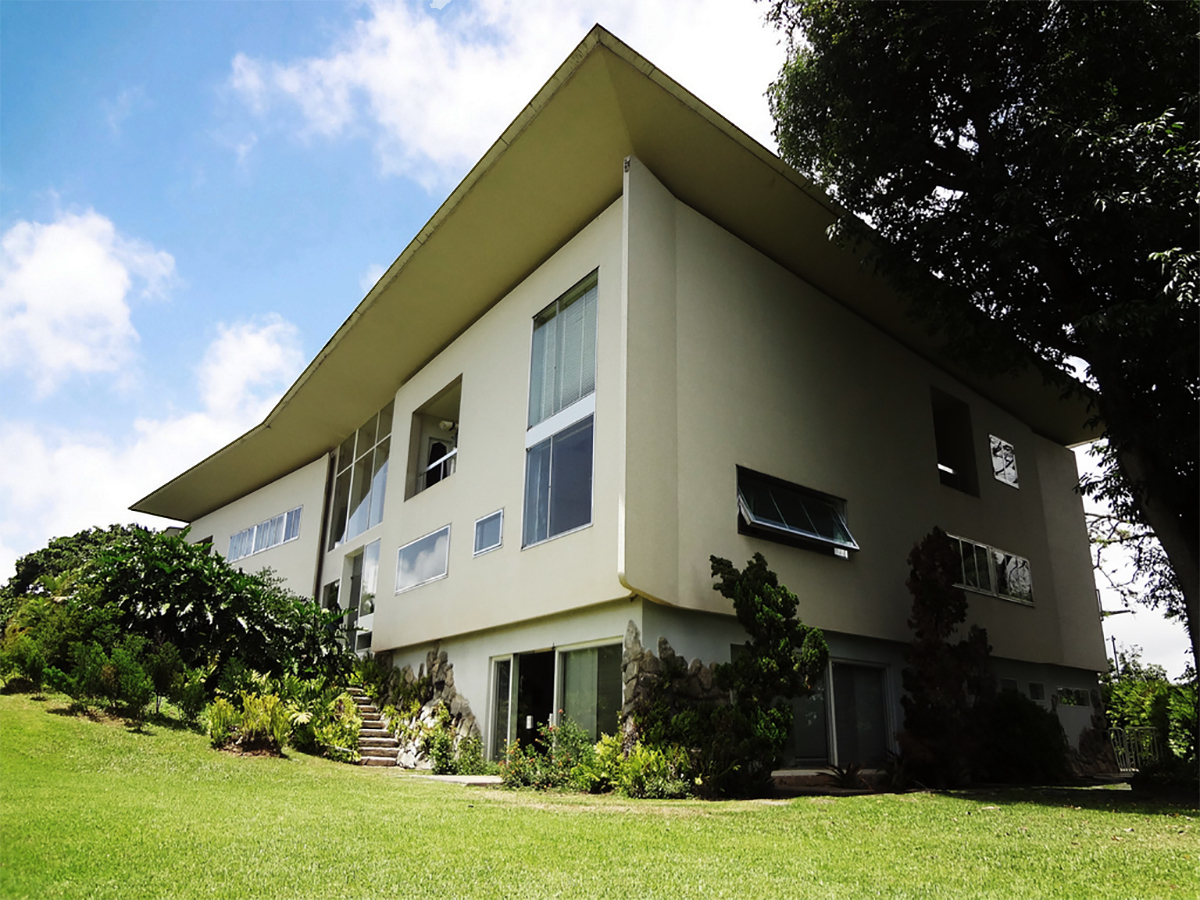
The Gio Ponti house in Caracas, known internationally as “Villa Planchart” and locally as “El Cerrito”, is one of the architect’s masterpieces. It is quite often included among the great works of modern residential architecture, and to one day visit this house has been a dream of Anne’s since she was a wee student back at Parsons.
Gio Ponti built El Cerrito in 1956 for Armando and Anala Planchart. When they passed away, care of the house was entrusted to their nephew, Carlos Figueredo. Carlos just happens to be the father of Armando, the keyboard player in Los Amigos Invisibles. So calls are made, fingers are crossed, and next thing we know, we have been invited to receive a personal tour from Carlos himself.
The house sits at the crest of a hilltop overlooking Caracas. There is a 360 degree view of the city and surrounding hills. The day can’t be more beautiful, nor the view more breathtaking. We gather by the front entrance and wait for Carlos to begin.
We are told its forbidden to take photos inside the house. This is a crying shame, because the inside is breathtaking. Hence, the photos below I grabbed from the web, which accounts for their disparate color temperatures. Most are from magazine spreads from the 1960s.
The house is pretty much immaculately preserved, just as it was created fifty years ago. What is most incredible is that Gio Ponti designed every single square inch. There is not a surface or object that doesn’t bear his influence in some form or another. He designed the structure. He designed the landscape. He designed the furniture. He designed the glassware. He designed the cutlery. He designed the silver tea set. Every piece of cabinetry. Every window frame. Every ceiling panel. Every light fixture. And on and on and on. In several places he commissioned modern artists to create pieces for specific architectural forms, like the chimney or the staircase. Unbelievable.
The color scheme is consistent: de-saturated variations of slate blue, yellow ochre, olive, brown, and a dull maroon. The walls are off-white. The ceilings are off-white with sections of long, bright yellow strips stretching from one room to another.
The foyer floor is made up of large, irregularly shaped slabs of brilliantly complex Italian marble of the most exquisite colors imaginable. Pinks. Purples. Golds. Yellows. Whites. Each slab is encased by long, thin, brass strips, forming a squashed hexagonal puzzle pattern. I think the rest of the house has white marble floors.
The doorway is flanked by two different kinds of orchids. The Plancharts were manic orchid collectors. There are 6000 orchids here, we are told. That seems unimaginable. The aroma when you step through the door is divine.
A giant black Calder mobile hangs just inside the entrance. This is the certainly the fist time in my life I have seen a Calder simply hanging in someone’s home. Then again, this is no ordinary home, by any means.
Carlos begins telling the long and complex story of how the house came to be, of the Plancharts’ love of architecture, and their long correspondence with Gio Ponti during the design and construction process. Gio Ponti visited the house five or six times, and they kept a spare room specifically set aside for him.
We are brought in to Armando’s den, where Carlos pulls out the original blueprints just for Anne’s perusal. Gio Ponti’s doodles and scribbles are all over the margins. Page after page of revisions. Long red lines define the line of sight from room to room. Aside from the aforementioned Calder mobile, one of the first things you notice inside the house is your line of sight. From anywhere you stand, you can see throughout the house, from room to room. From indoor space, to outdoor space, back to indoor space. It’s really pretty damn cool.
The den (above right – yellow) has a funny secret: Armando was an avid hunter and collector of giant, trophy heads from his numerous safaris. Both Anala and Gio Ponti despised the grotesque trophies, and didn’t want them anywhere in the house. A compromise was reached. Carlos pushes a button on the wall, beginning aloud, mechanical motor sound. The six modern paintings that separate the book cases on all sides of us slowly revolve around, like a lazy susan. Their 180 degree rotation unveils six cavernous cabinets, containing six mounted animal heads. Deer, Lion, Rhino, buffalo, antelope, and zebra. Below the heads, artifacts from the safari are neatly and symmetrically arranged. Two hunting pistols. Two canteens. Etc. Carlos pushes the button again and the heads disappear. This is some James Bond shit, for real.
The only elements that remain independent of Gio Ponti’s singular vision are the individual pieces of the Planchart’s own art collection. Millions and millions of dollars worth of modern art, most of it Venezuelan in origin. Names like Armando Reverón, Jesús Rafael Soto, Carlos Cruz-Díez , Francisco Narvaez, Victor Vasarely, Manuel Cabre, Alejandro Otero, and a slew of others I cannot even remember. There are several Miro rugs, as well as another Calder or two, and some Italian modernists as well. Gaps in the walls here and there represent pieces that are on loan to exhibits around the world. There is even a piece by Anabella’s great aunt, Elisa Zuloaga. Gio Ponti had asked specifically that this be hung in his guest room.
There is a story behind almost everything, and Carlos takes his time re-telling the best of these historic tales, all for our enjoyment. This is my favorite:
In early January of 1958, Gio Ponti was visiting Caracas. A lunch date was made with the Plancharts, Gio Ponti, and the prestigious Venezuelan intellectual Arturo Uslar Pietri. Pietri was married to Anala’s sister. Pietri had to cancel lunch, due to the fact that he had been recently jailed by the notorious dictator Marcos Perez Jimenez. The Plancharts decided to forgo lunch in order to visit him in prison. They were terrified. Gio Ponti, on the contrary, seemed excited and rather happy about the news of his imprisonment.
“When the important people get arrested” Gio Ponti assured them, “you know a regime is on its last legs”.
Two weeks later, they sat on the second floor balcony of the house overlooking the airport, Using the huge white binoculars that are still mounted there to this day, they watched Perez Jimenez flee the country in a small plane, escaping to the Domincan Republic with 250 million dollars from the national treasury. Gio Ponti and the Plancharts are believed to be among the first to be aware of his scandalous departure. All of Caracas partied in the streets that night, celebrating PJ’s defeat.
After getting the grand tour of every single room in the house, Anne was on the verge of tears. It was really a dream come true for her.
Carlos’ son, who was the resident orchid caretaker, took us down through the back gardens to the three gigantic greenhouses embedded in the hillside overlooking downtown. The concrete path to the greenhouses was lined with large cages containing pairs of every shade of macaw parrot found in Venezuela. The huge birds acknowledge each of us as we pass by.
Inside the greenhouses we find the diligently maintained Planchart orchid collection – 6000 orchids, give or take; those that weren’t in the current rotation inside the house, that is. Walking down the rows and rows of plants, each new orchid I come upon is more extraordinary than the previous. Each one wipes away a few hours of computer time. The more time I spend soaking in the details and colors and shapes, the fewer and fewer Photoshop layers my brain retains. I think this is working.
After Villa Planchart, Cheo and I head downtown to dig for vinyl. To say that our record shopping excursion is a success would be the understatement of the year. At one lousy spot, in two measly little hours, we hit the freakin’ MOTHERLOAD. Crate after crate of priceless salsa vinyl. Disco classics. Funk. Soul. And all of it only ONE DOLLAR. Mind you, these are records that have all but evaporated from NY bins due to scumbag dealers and zealous collectors.
I go absolutely BANANAS! Cheo and Carolina are handing me salsa records left and right. I have to stop when I am halfway through the inventory simply because I have no idea how I will even get all this stuff on the plane. In the NYC parlance of our times, I “caught mad shit up in there son”. Peep most of the day’s purchases, disco 12”s not withstanding:
Venezuela just gives and gives and gives. And we’re still not done. Next stop: Los Roques!
DIA DOCE
We catch a dinky little 24 seater to Los Roques. The flight takes 36 minutes. The airline only has two of these planes. They make Cheo go on the other one, because ours is full. Strangely, they do not stagger these flights (one coming, one going). They fly to and from the island together, like those parrots in the Orinoco. The fat kid in front of me leans his seat back so far, he is using my knees as arm rests. His Dad does nothing to discourage this.
LOS ROQUES
The Los Roques archipelago is an atoll about 90 miles north of Caracas, consisting of about fifty islands of various sizes. Though now a national park, there is still one miniscule town left over from days gone by. There are about 1500 local inhabitants, descended from pirates and slaves and all manner of seafaring n’er-do-wells. I’ve got a hunch that they’re all related, as they have very similar features, though their skin tones vary a great deal. The ocean is bath-water warm, beautifully clear, and all shades of aqua blues and greens. Los Roques is known for fishing and diving and not much else.
Most vacationers stay on El Gran Roque, the biggest island, where there are numerous posadas to accommodate every single obnoxious Italian on the face of the earth. Wealthy Venezuelans stay on their own boats. Some Caracas people even come for the day, though I would guess that only the very rich can afford this. Plane flights are beyond the means of most Venezuelans. There is no real nightlife to speak of, just a handful of restaurants on the main island.
Did I mention the place is infested with Italians? Infested.
This is the relaxing portion of our whirlwind Venezuelan Vacation. Perfect timing, like everything else this entire trip.
The daily routine is this: get up, buy some breakfast arepas from the stand out on the road, pack a lunch, hire a boat to take drop us off on one of the surrounding keys, get picked up at the end of the day, and cook dinner back in the posada. We brought a cooler for transporting lunch and beer. That is pretty much all you need. The posada has provided beach umbrellas. The price of the boat is determined by how far you go. The further out the island is, the more deserted your beach.
This poster and the Chavez action figure were both in the liquor store. Cheo tells me Florentino Y El Diablo is a Venezuelan fable similar to David and Goliath. You can guess what role Chavez is playing.
In the evening we nurse our mosquito bitten bodies at a local restaurant. The margaritas and cairpirinhas are excellent.
We stayed for 3 days then headed back to Caracas. I love the checkout counter at the Los Roques airport. There is no counter, just a woman sitting on the ground, in the dirt, leaning up against a shady tree with a clip board. “What’s your name? OK, go ahead” is all she says. Ciao Los Roques.
In the taxi back from the airport, Cheo informs me that Carolina has gotten me a DJ gig at a very swinging spot in town, SUKA. This is where Cheo plays whenever he is in Caracas.
“You serious?” I am shocked.
“Yeah man, it’s totally hooked up. You can play whenever you want” Cheo tells me.
WOW. This is really the icing on the cake. A perfect trip, in every way. It’s almost too much.
Suka is a club inside a mall, sandwiched in between a bunch of other clubs. These mall spots do very well because the mall provides underground parking, and patrons can go from place to place without the risk of getting car-jacked or robbed carousing around Caracas at night. Yet another subtle indicator that Caracas does indeed have its dangers. People have simply adjusted to them.
The gig is a piece of cake. I was really nervous before getting on, but after a few records everything was cool. They have a really nice crowd and people seem game for anything. I play some Afro/Latin house I brought before getting in to some of the European, tech-house stuff. The harder stuff goes over better, so I stick with that. I play until 1am. Afterwards we hang we around with Carolina, Gustavo, and some other stupidly cute girl, drinking cuba libres and snapping photos of random freaks.
It’s a great final night in the city. We’re also ready to go home.
DIA QUINCE
It has come to an end.
What can I say?
I mean, it’s just been ridiculous.
So action-packed.
Too good to be true, almost.
It would be like coming to the United States, seeing New York City, then The Grand Canyon, then Niagra Falls, then meeting Mayor Bloomberg, then going on stage with Jay Z at Madison Square garden, then getting a personal tour of Frank Lloyd Wright’s “Falling Waters”, then going to Hawaii, then getting a DJ gig at the best club in NYC. All in two weeks. Simply incredible!
I think my mental hard drive has been more than sufficiently re-booted. Files deleted. Space created. I start the new year with a fresh brain. Not bad. Not bad at all.
To Anabella and Cheo: GRACIAS! GRACIAS! GRACIAS!. Love you Venezweirdos!
My most heartfelt thanks to Ana Maria & John, Jose Luis & Egilda, Geicce, Cachy, Tommy, Emiliana, Carlos, Ana Helena, Mariana, Mariana & Nicomedes, Carolina & Gustavo, and a very special thanks to Carlos & Carlotta Figueredo.

